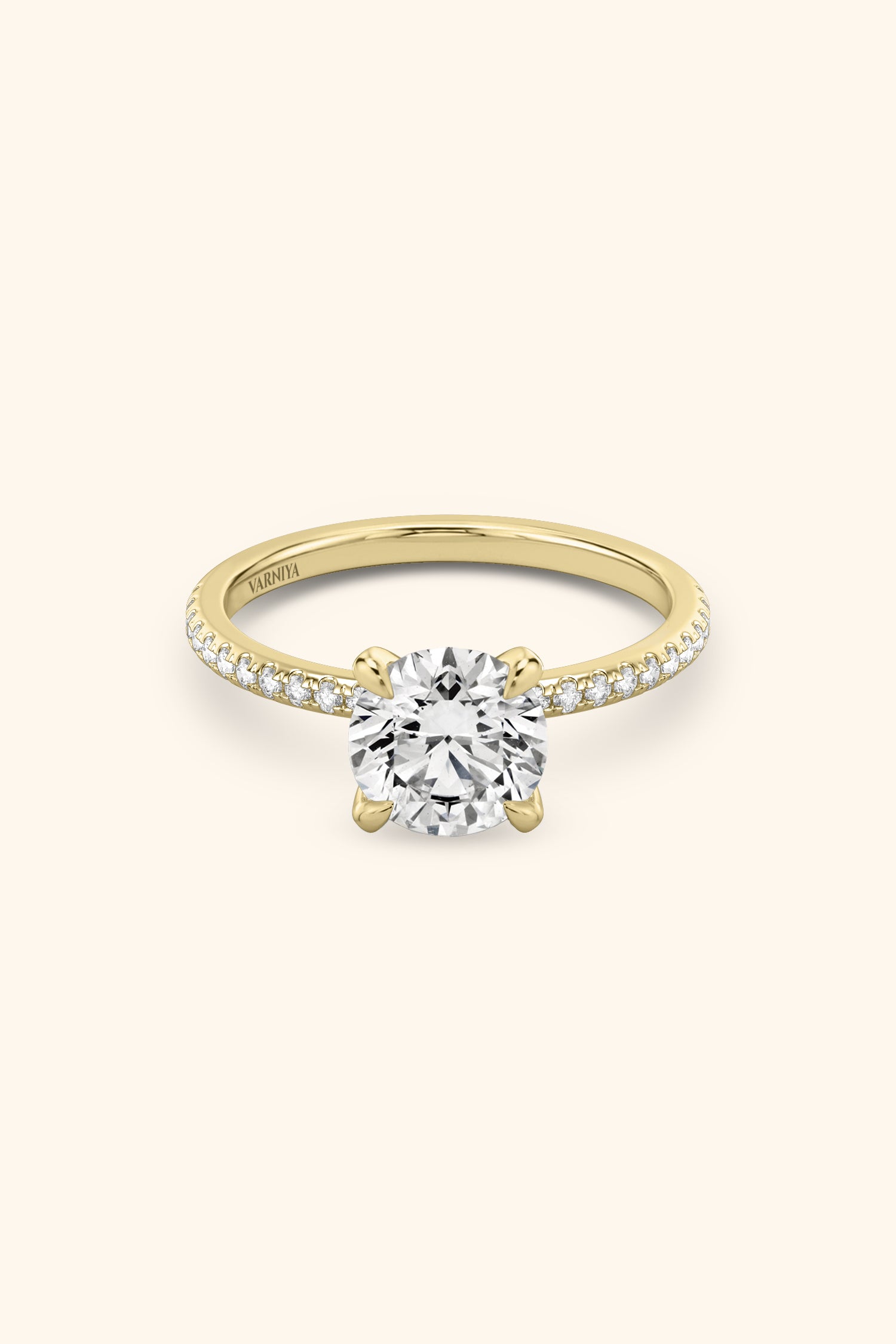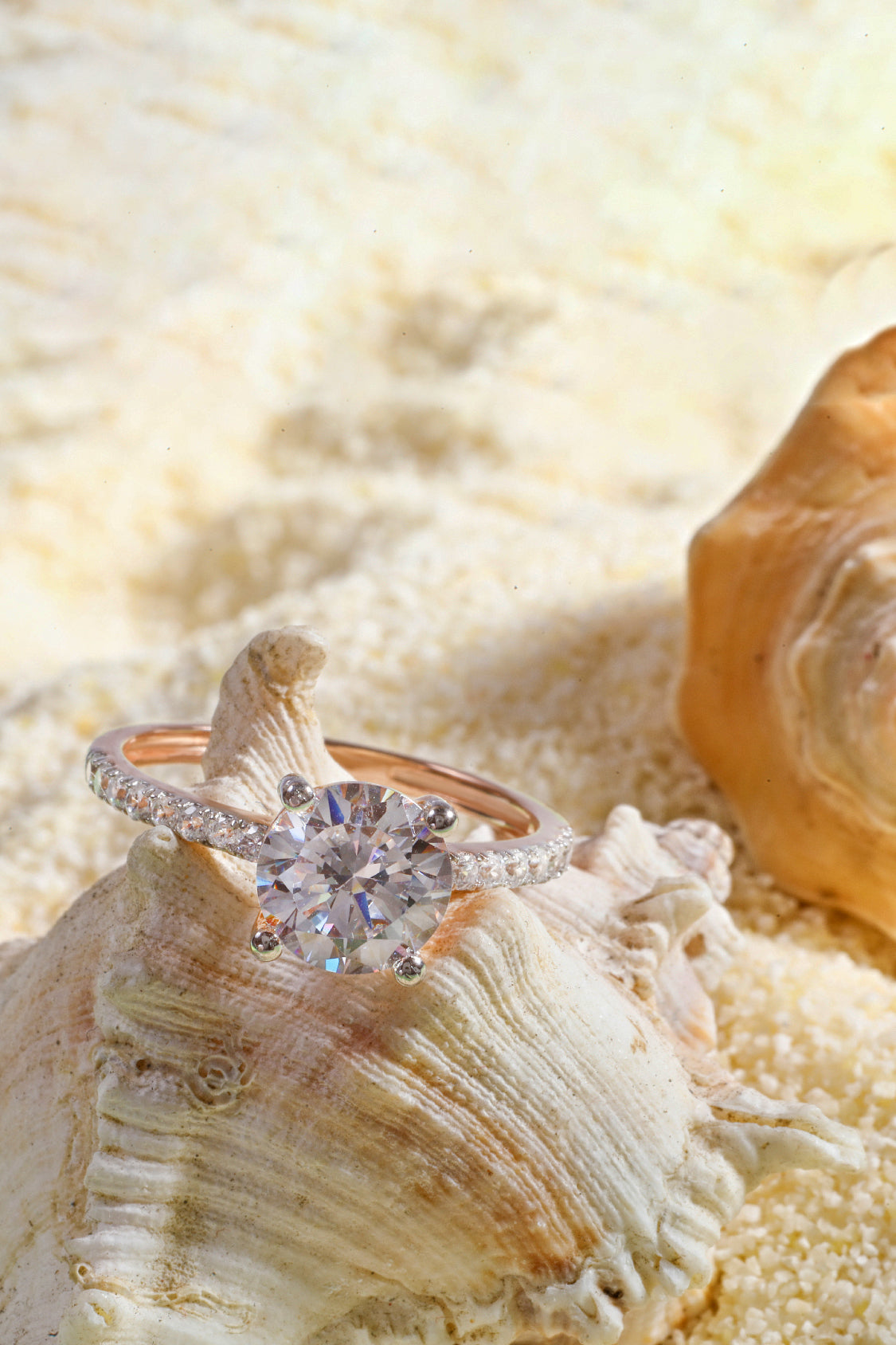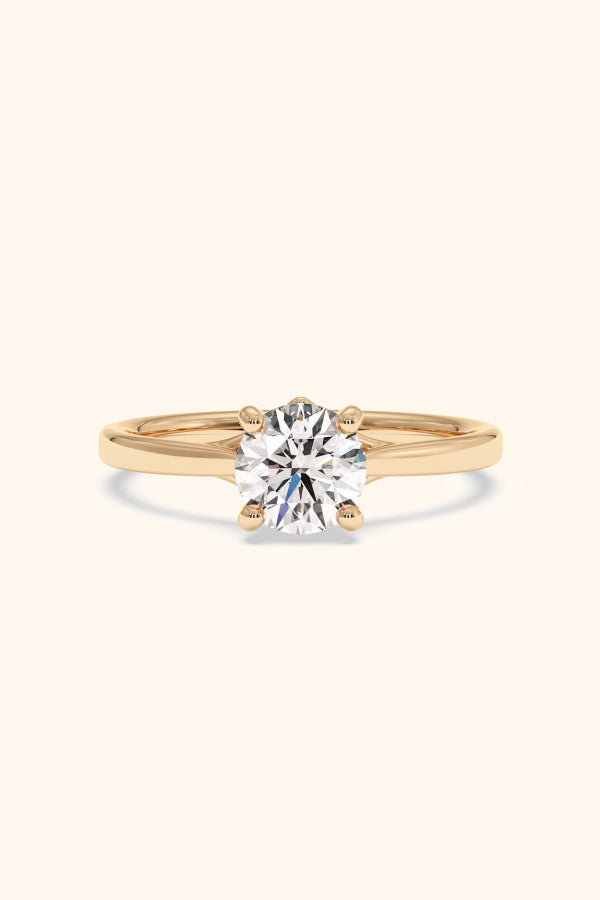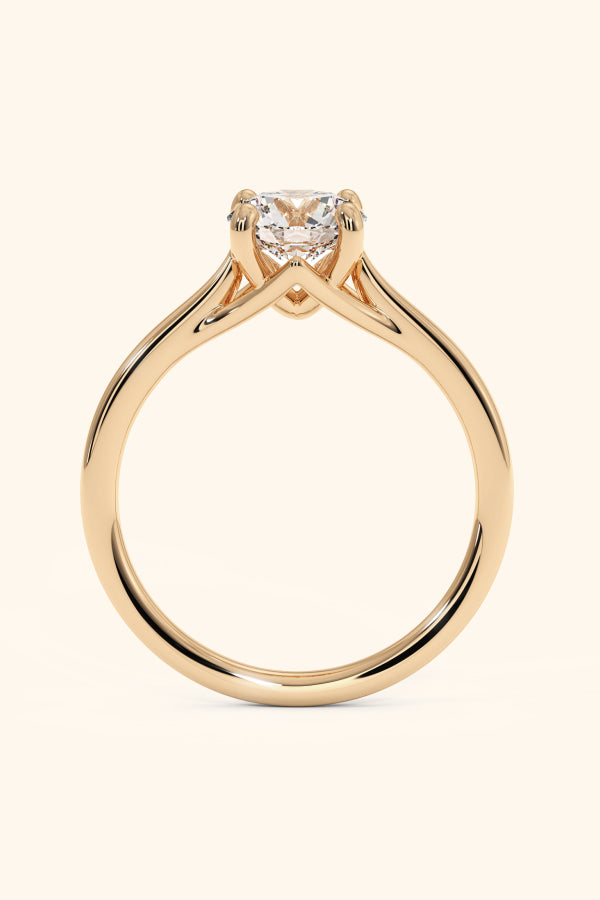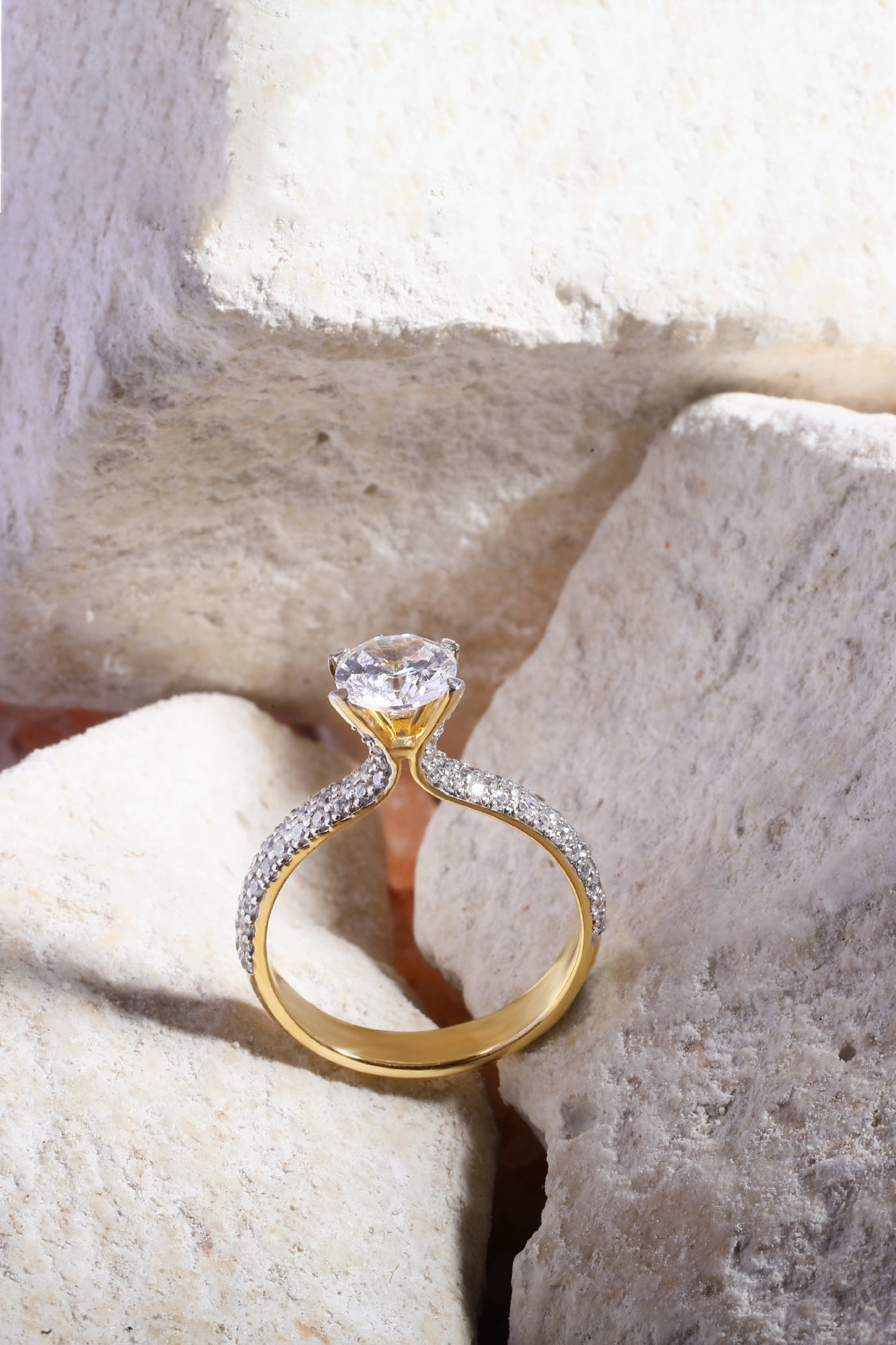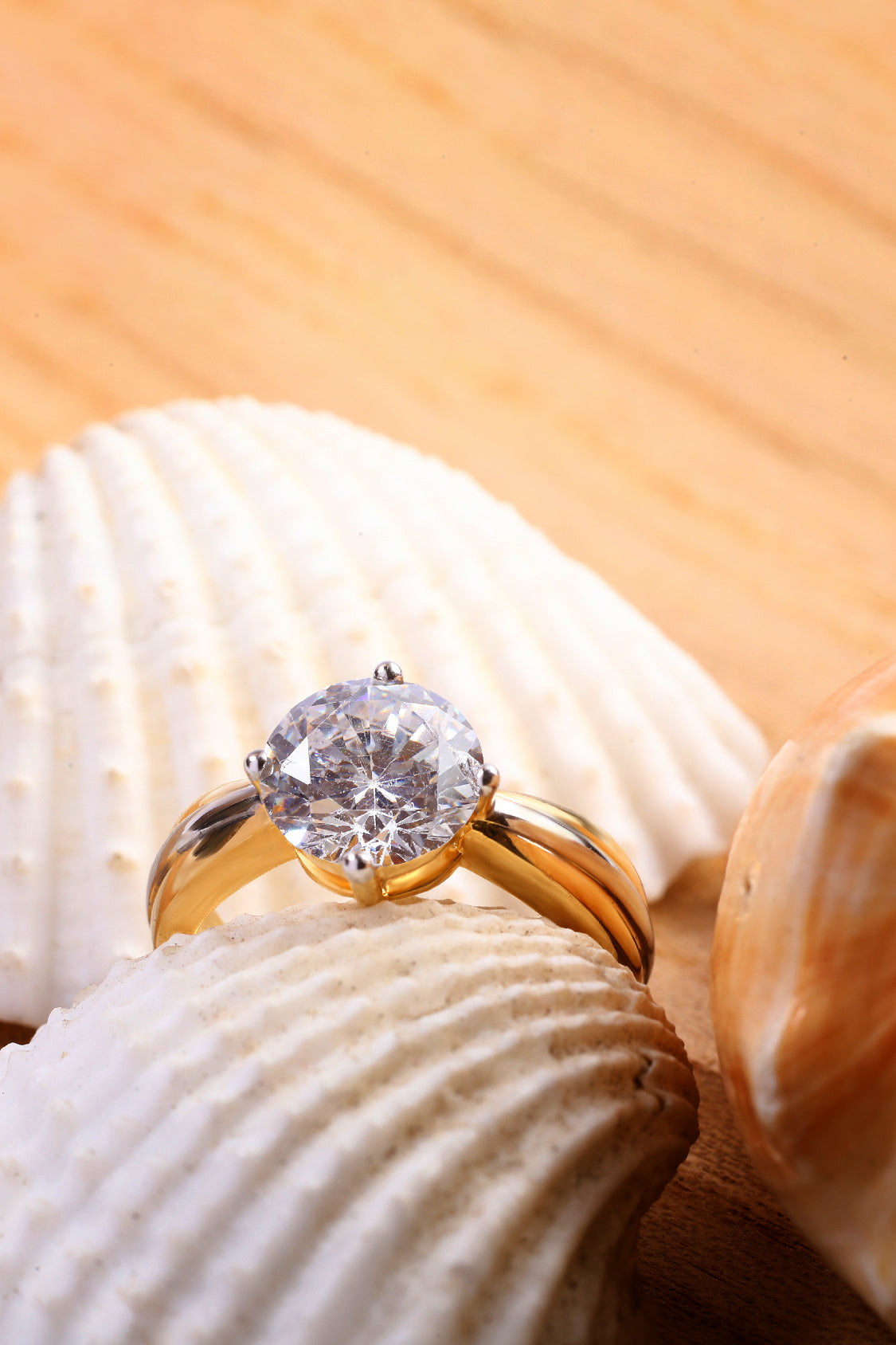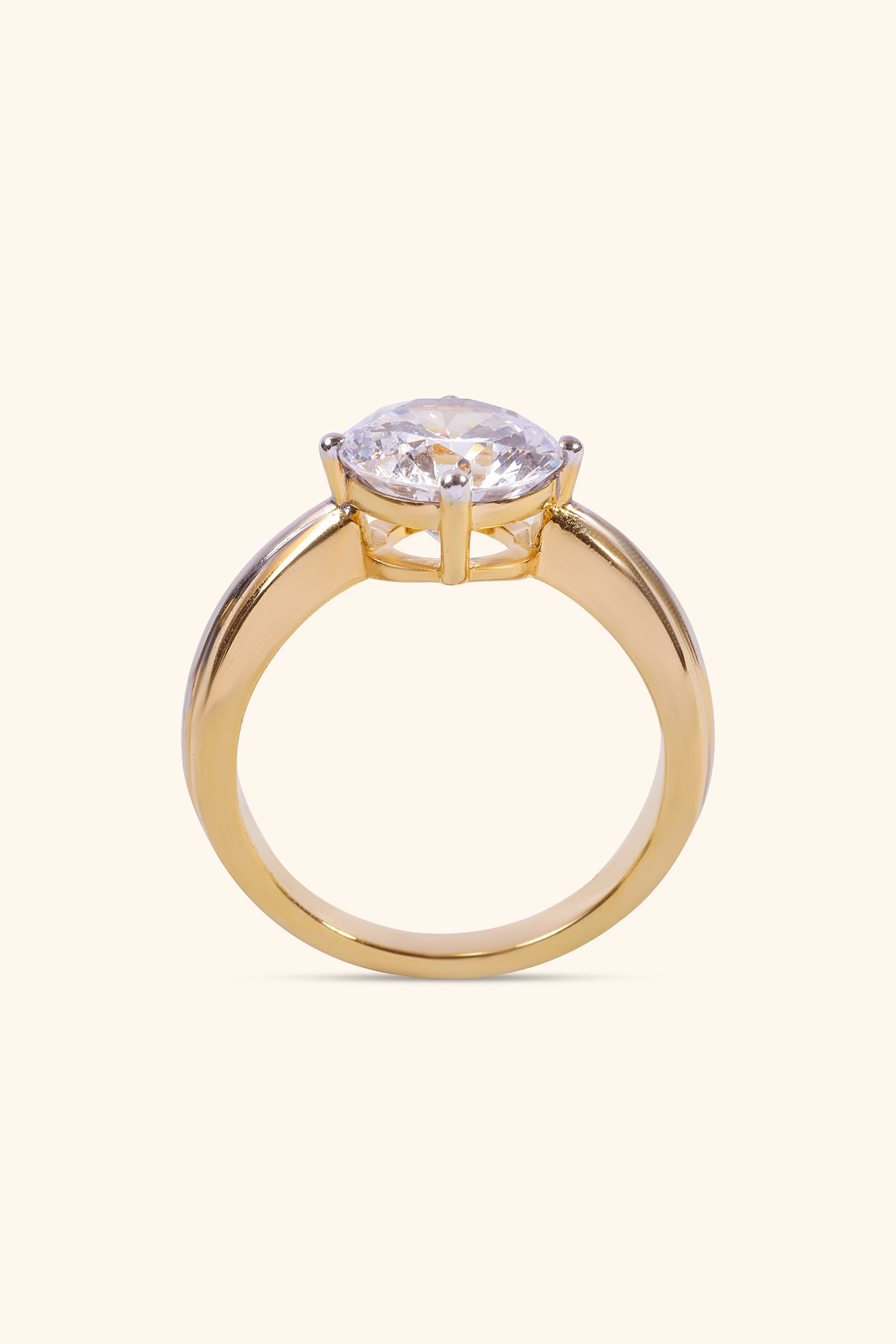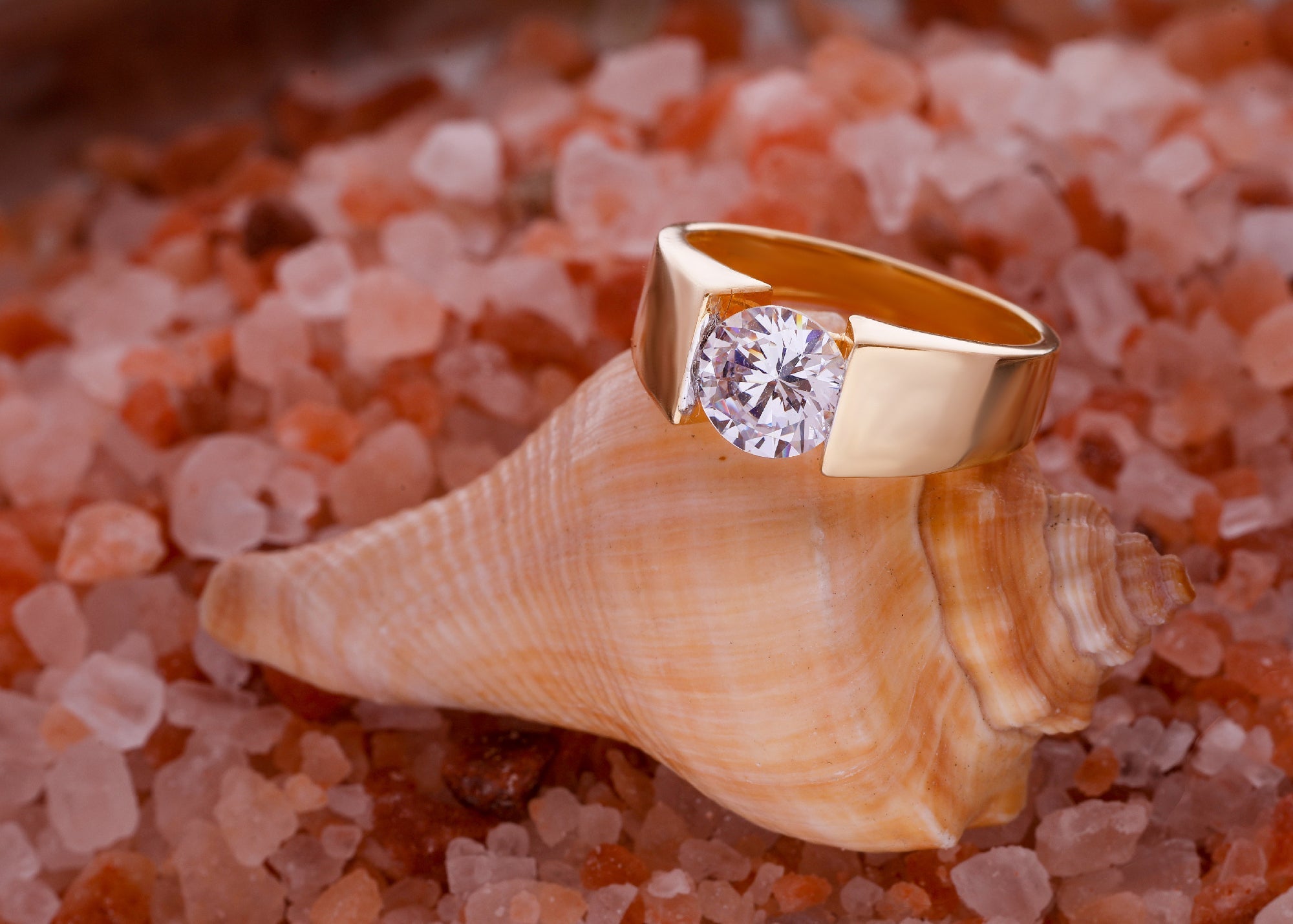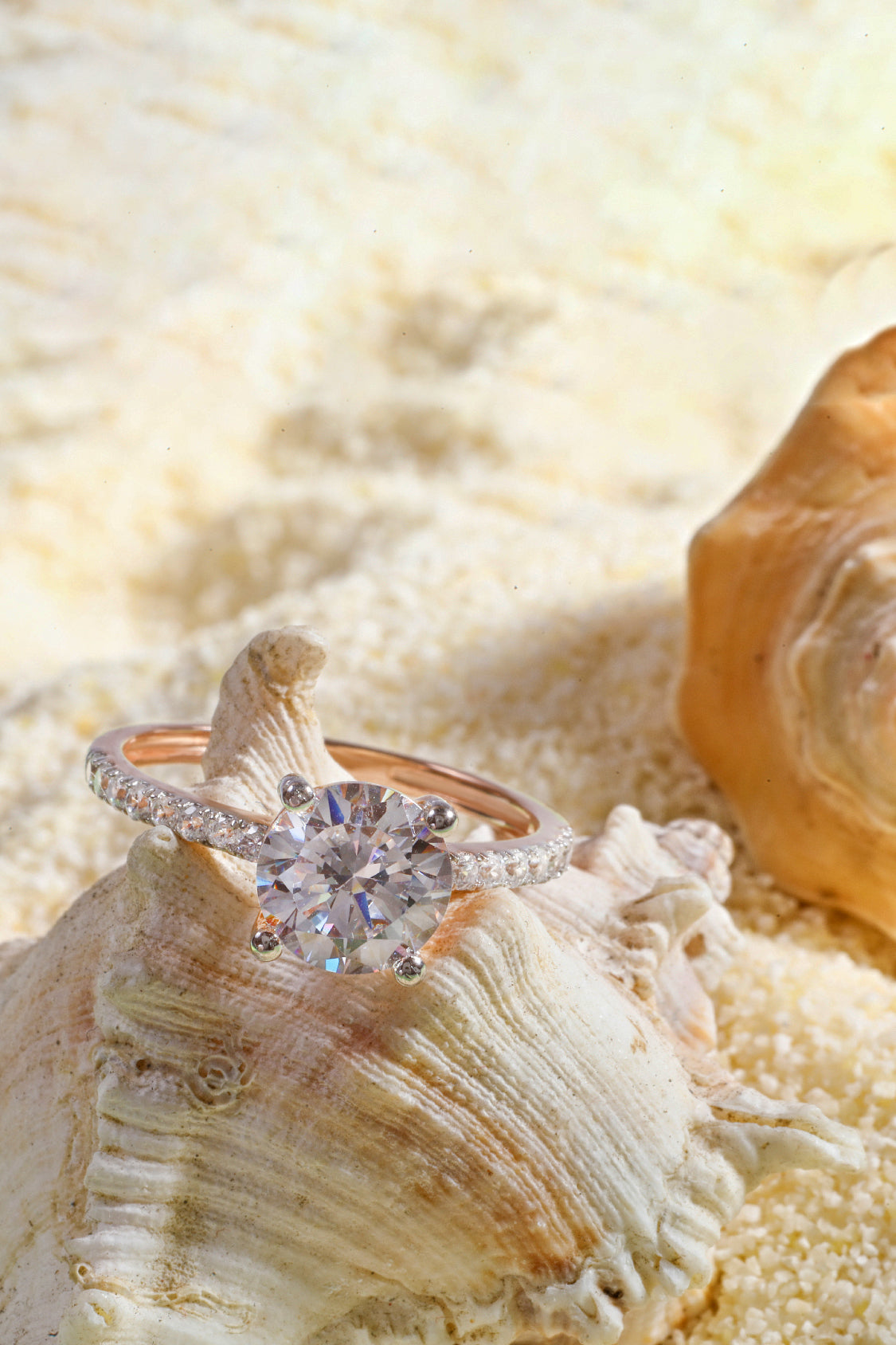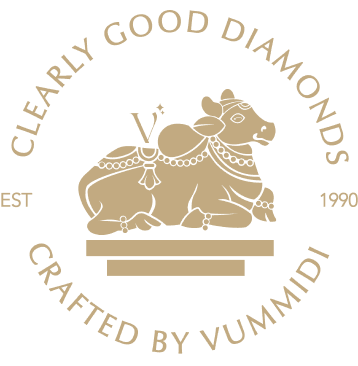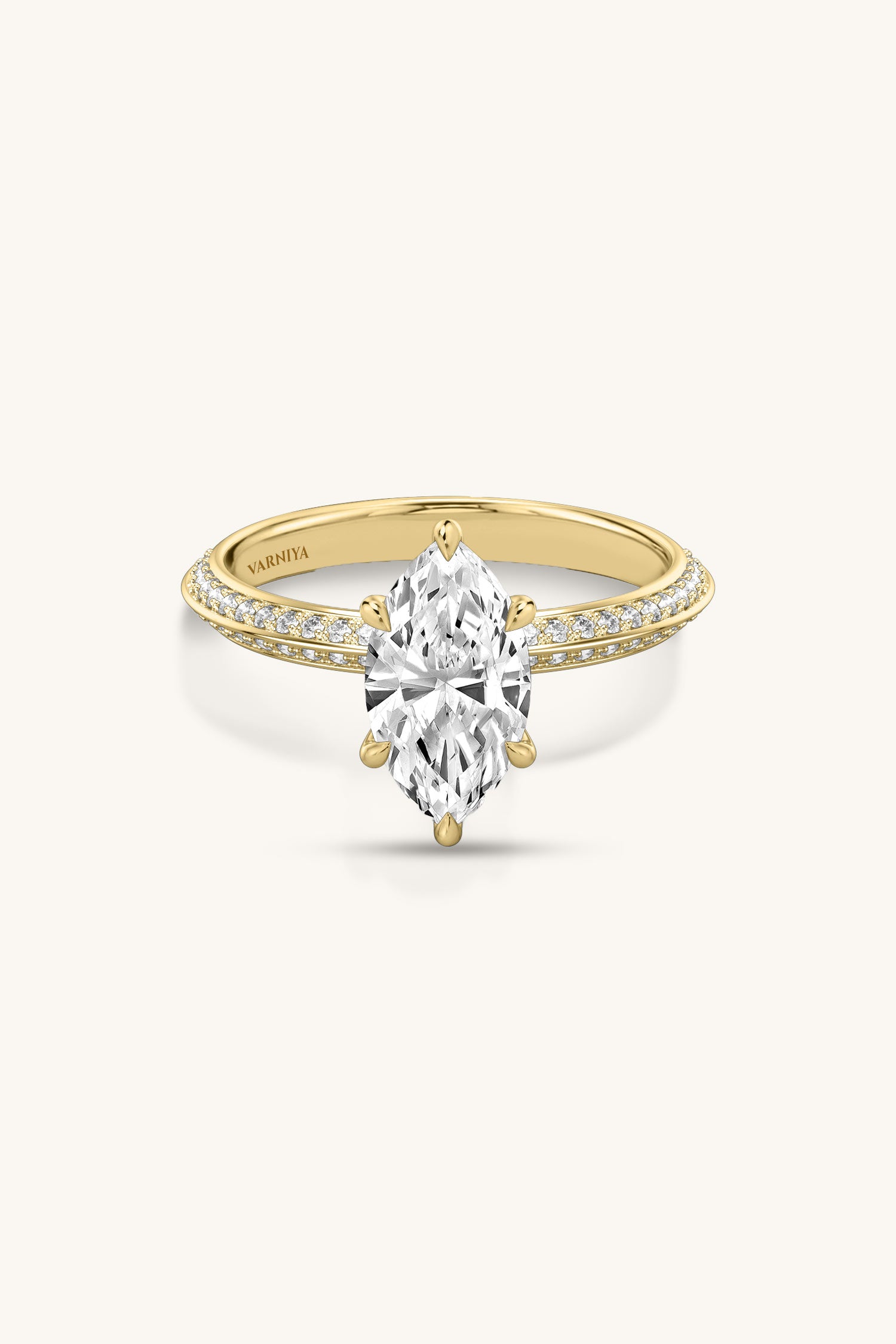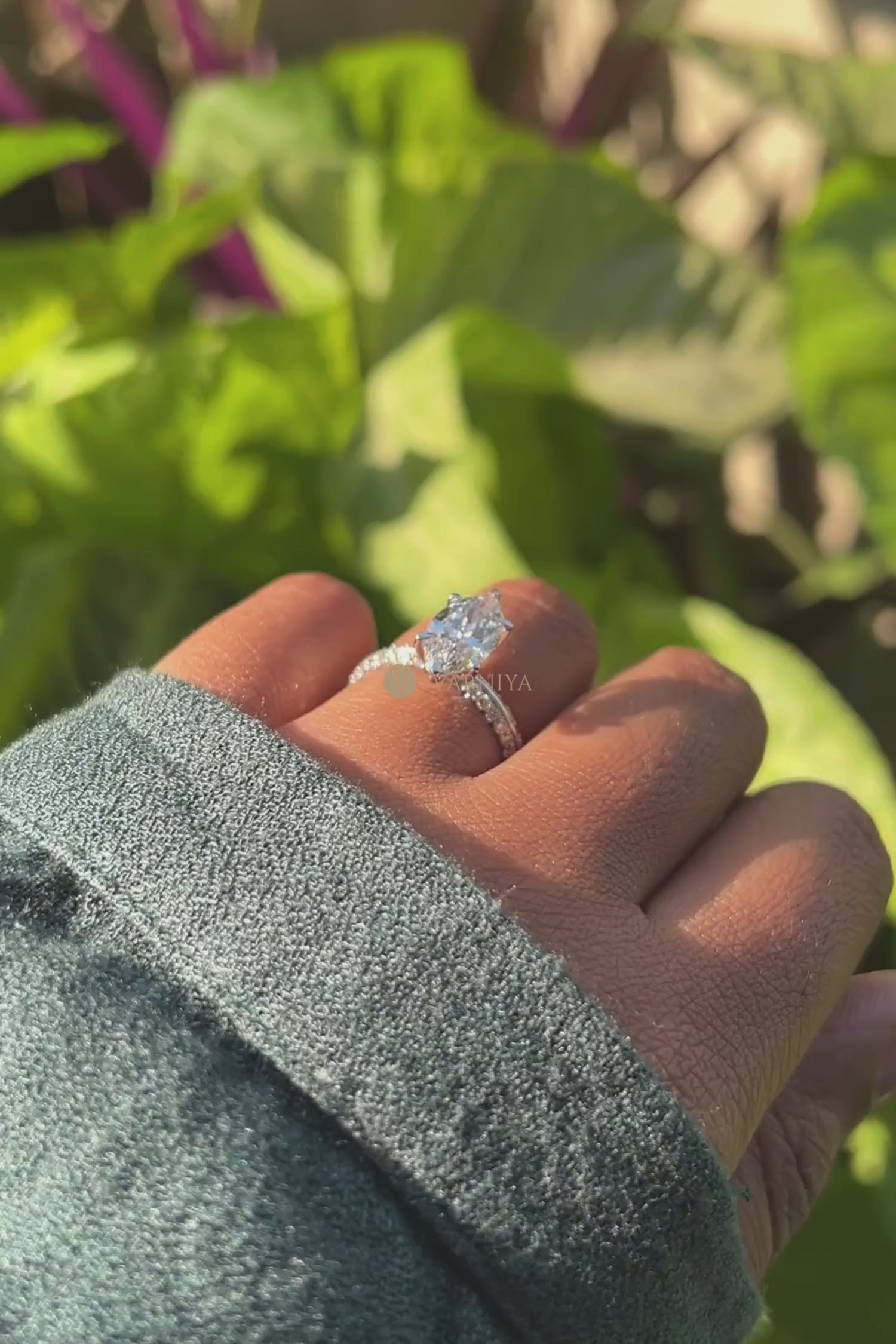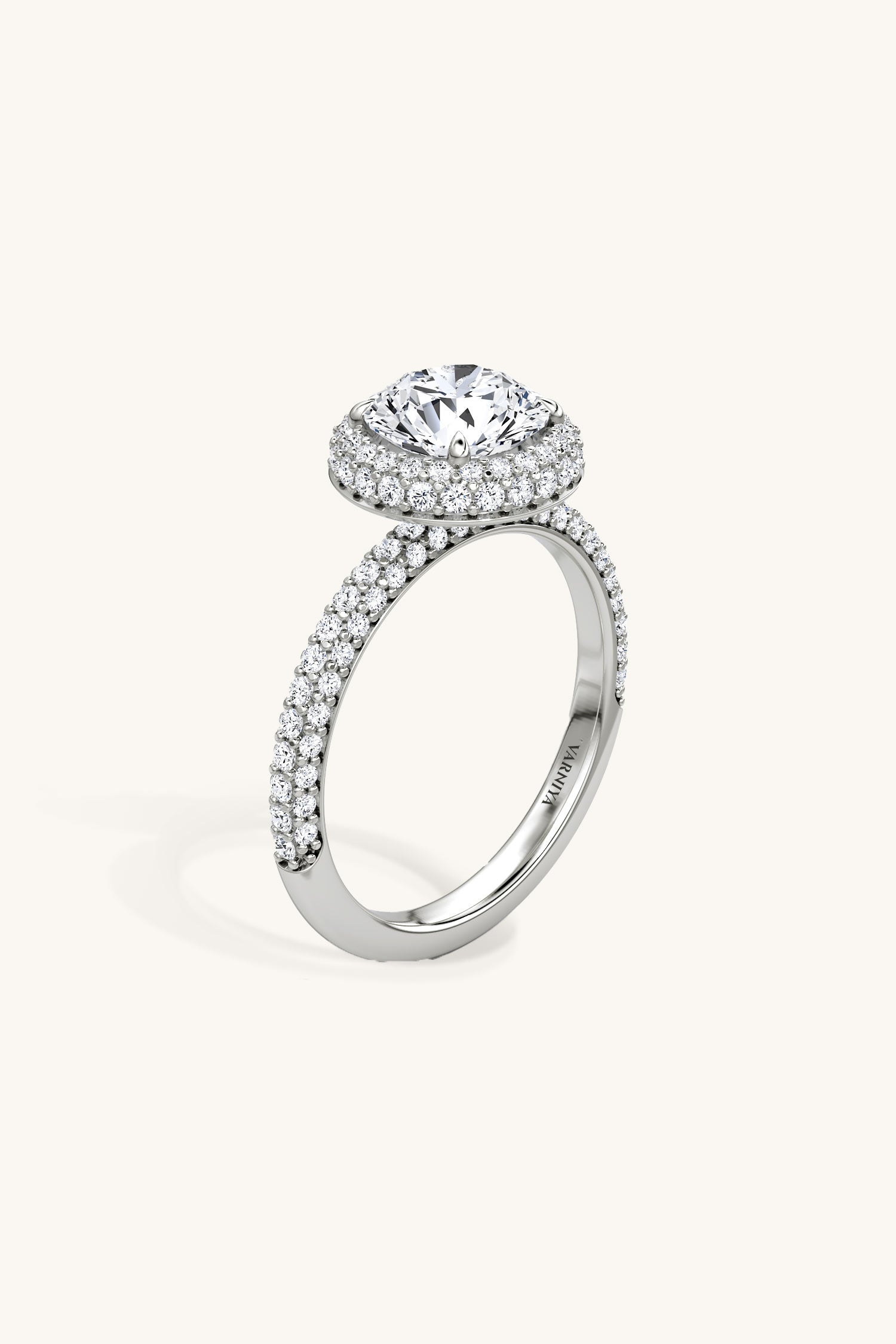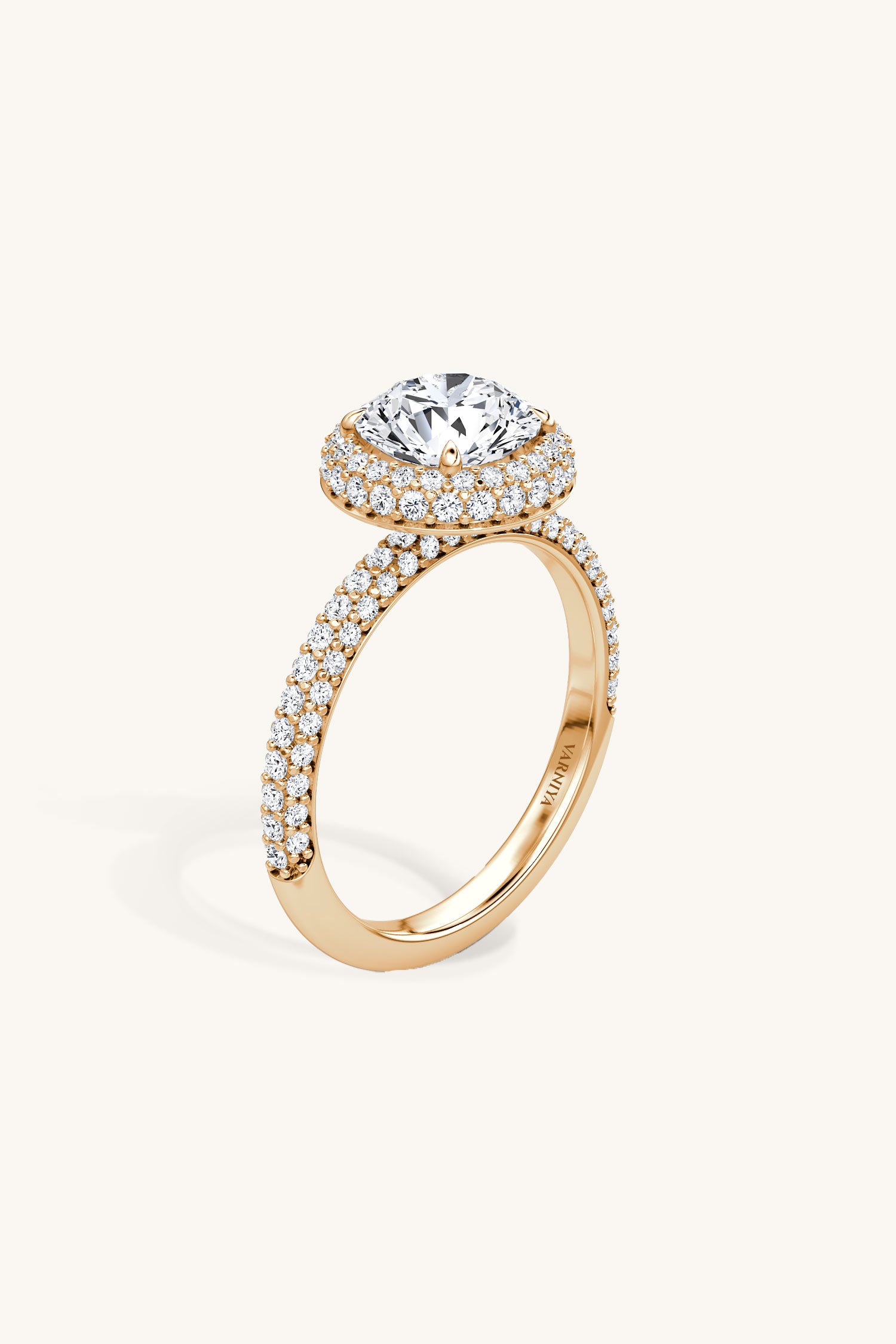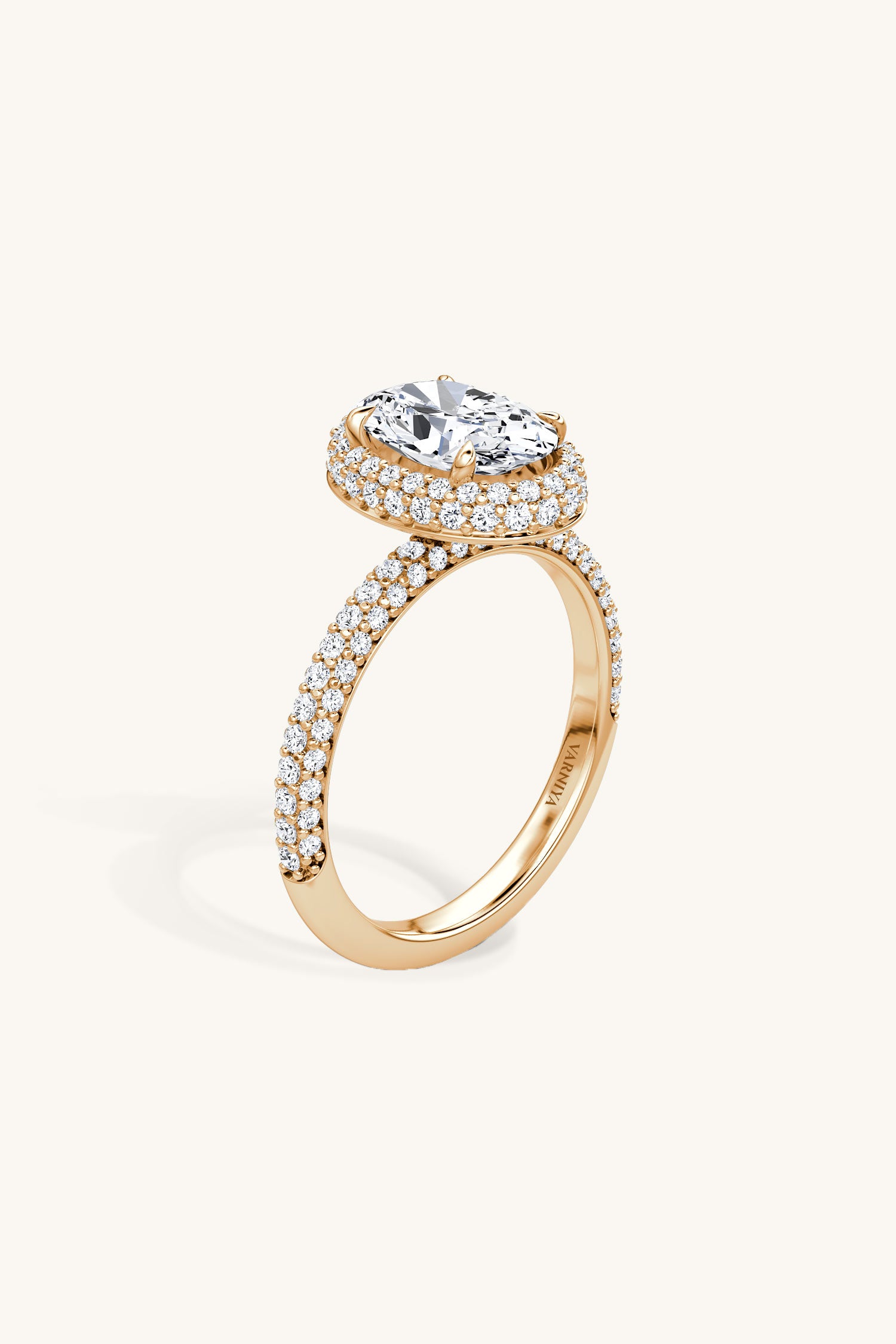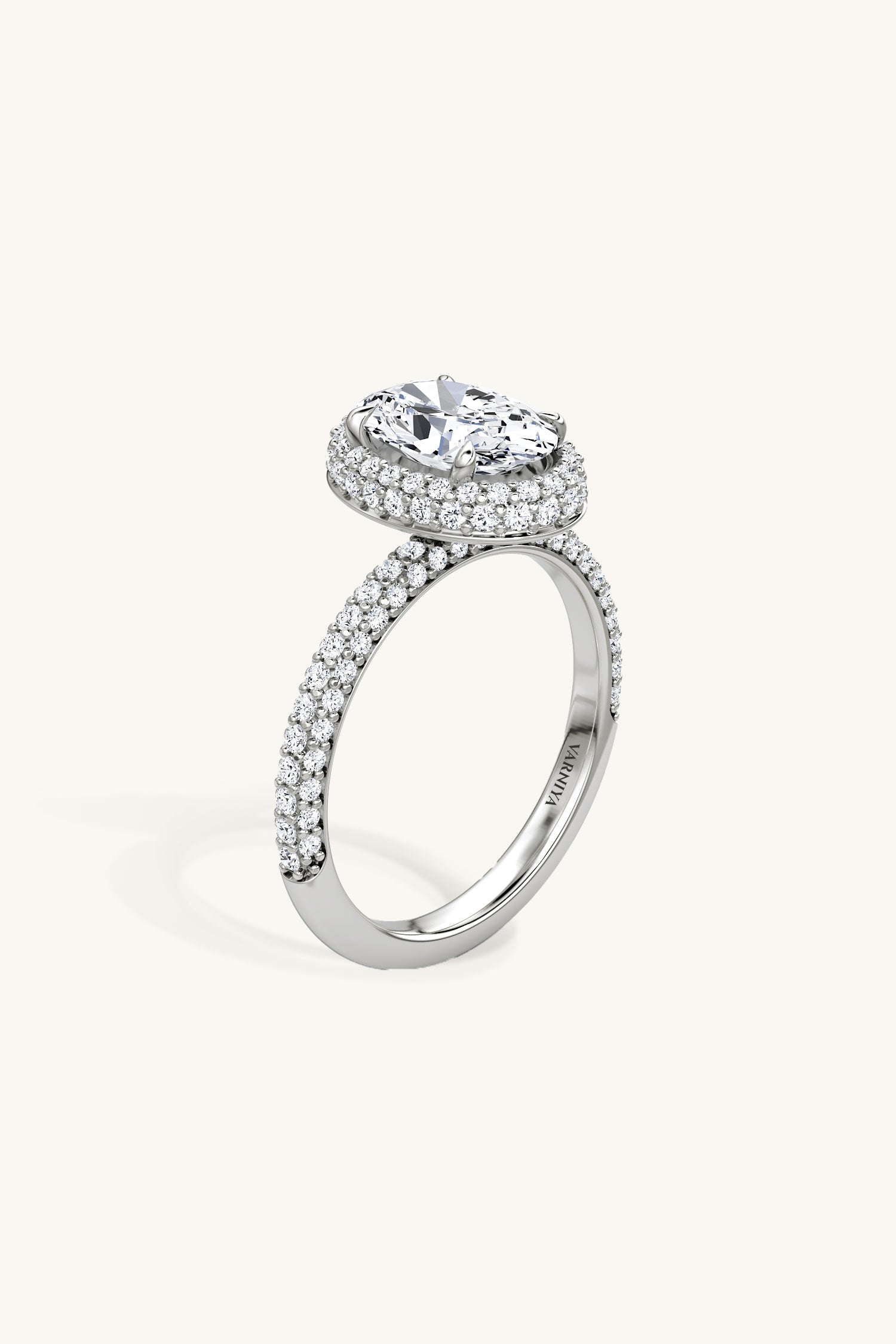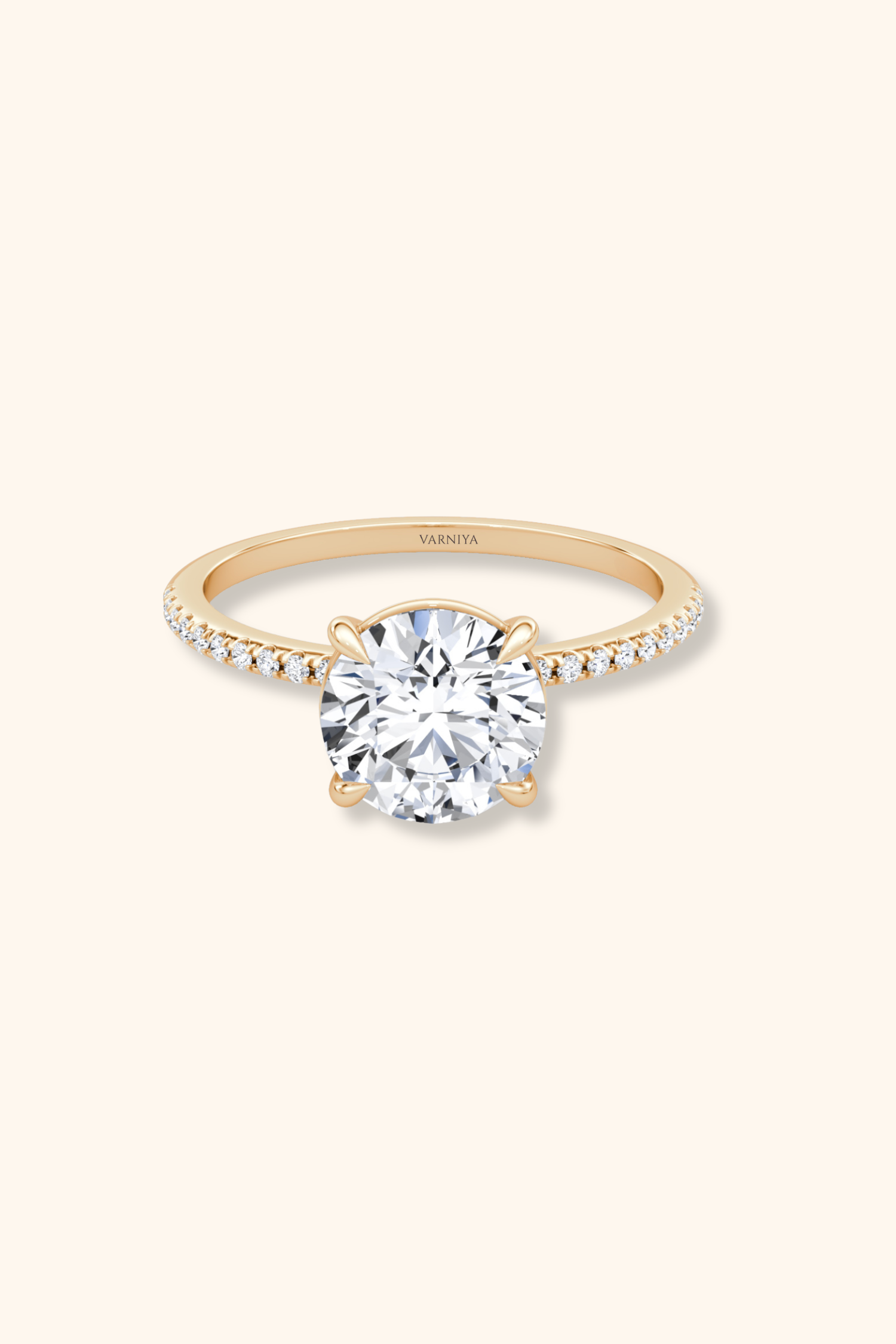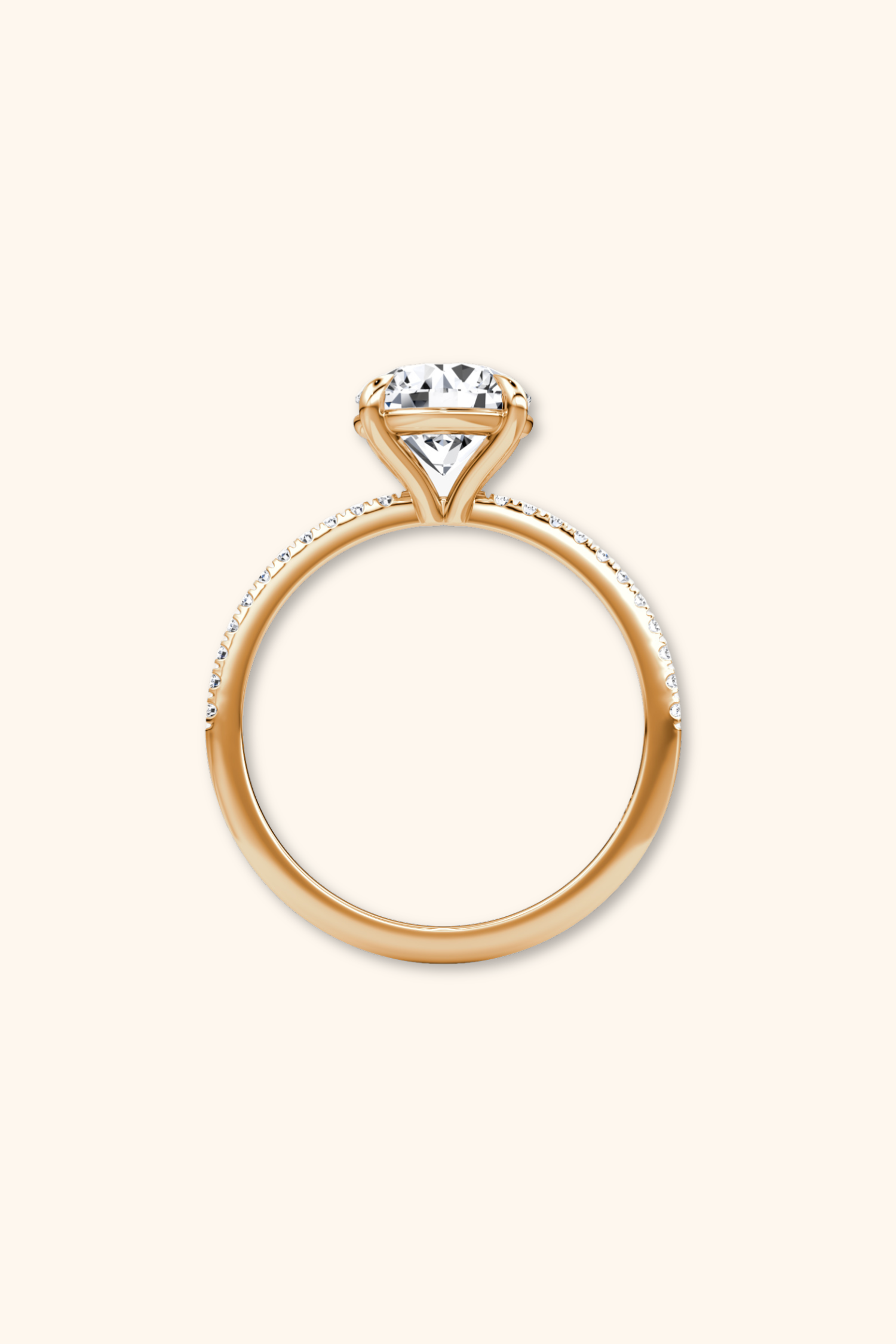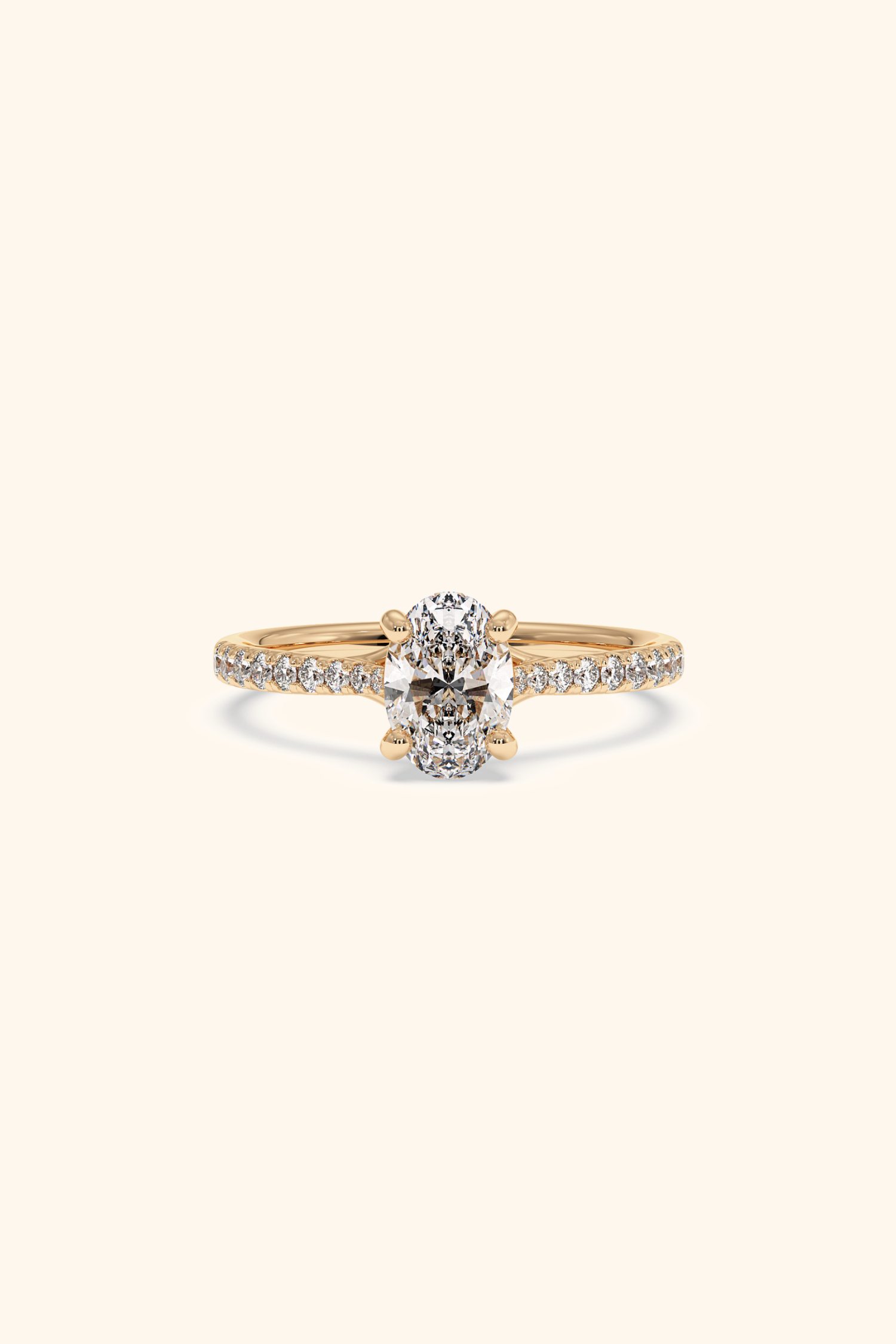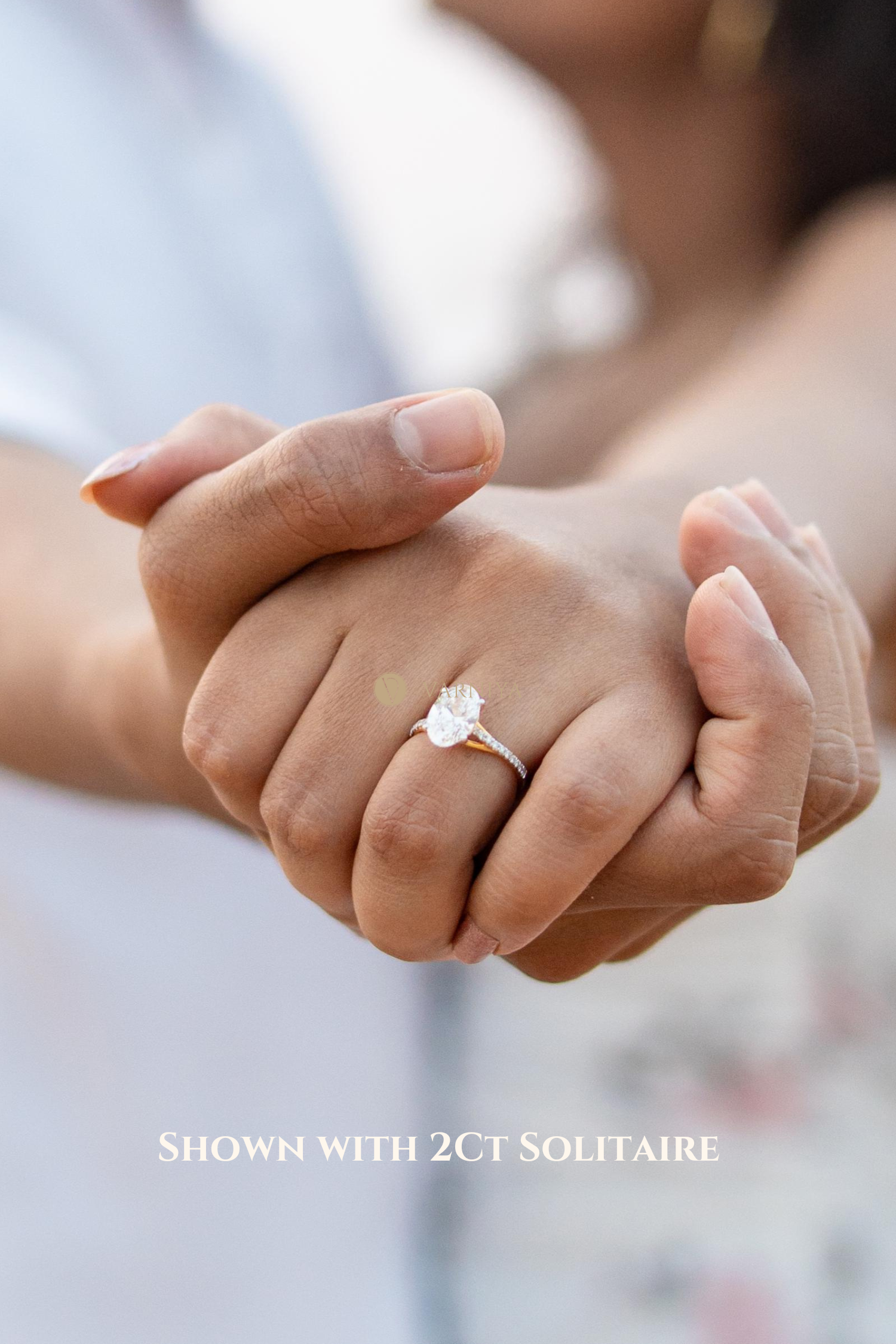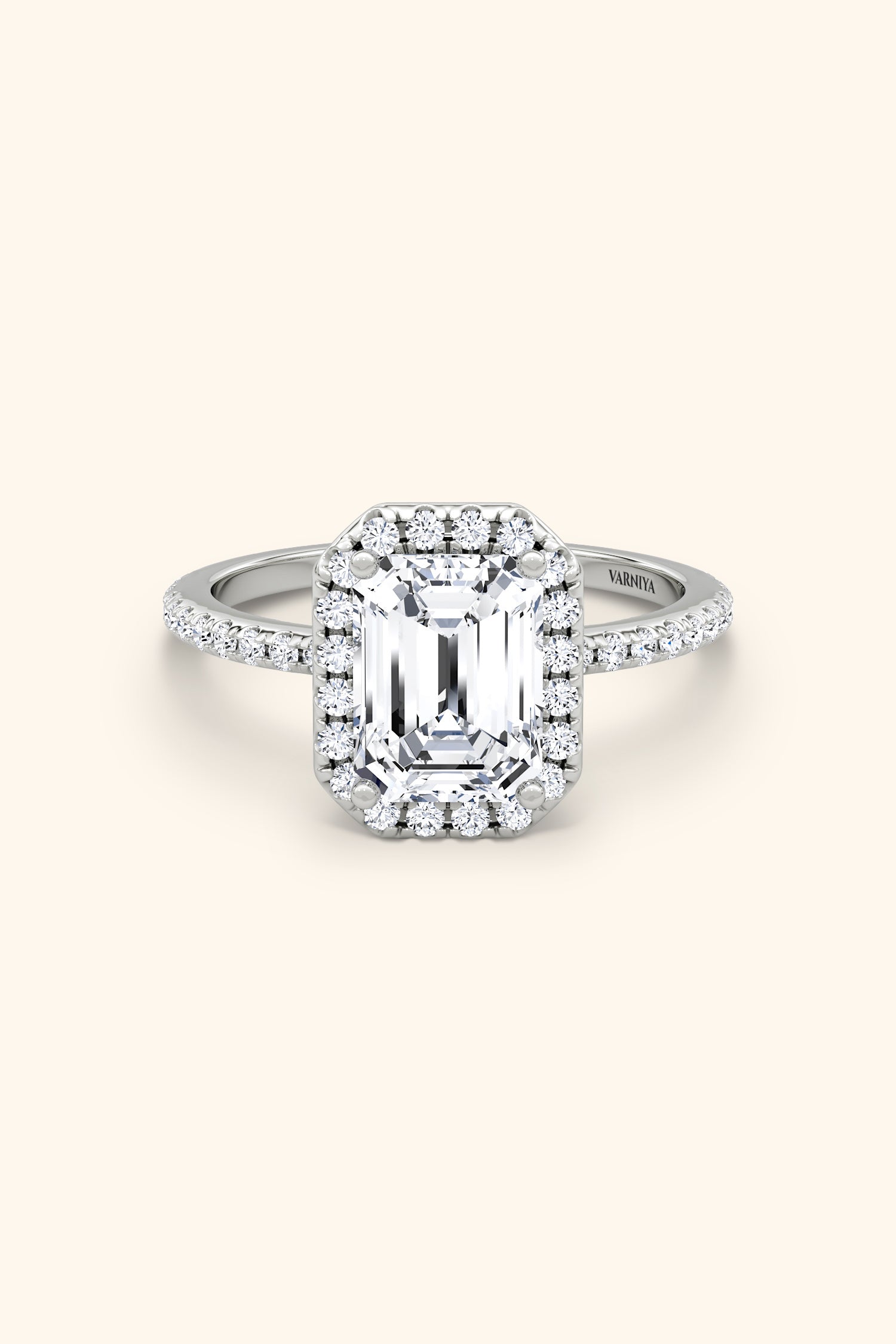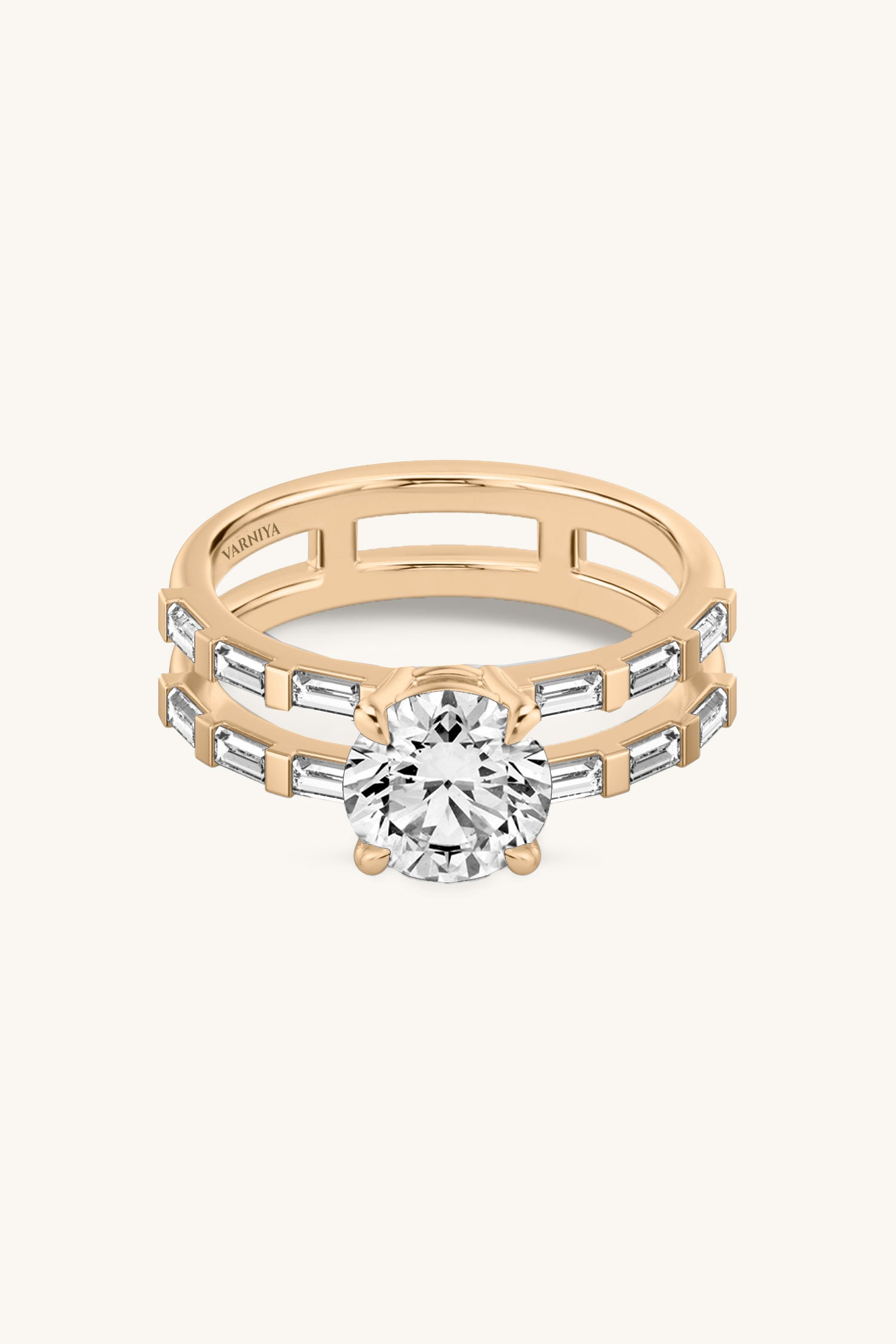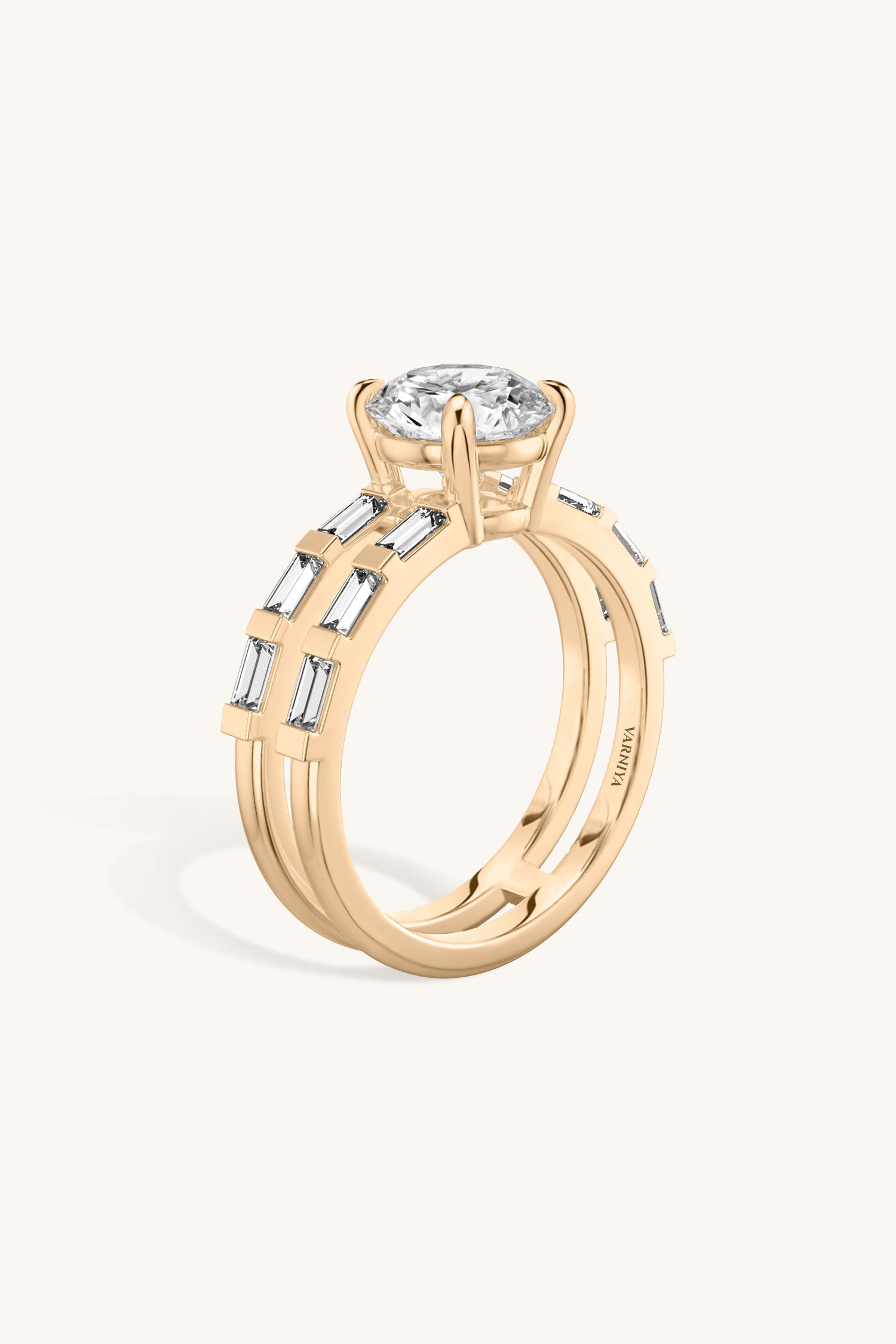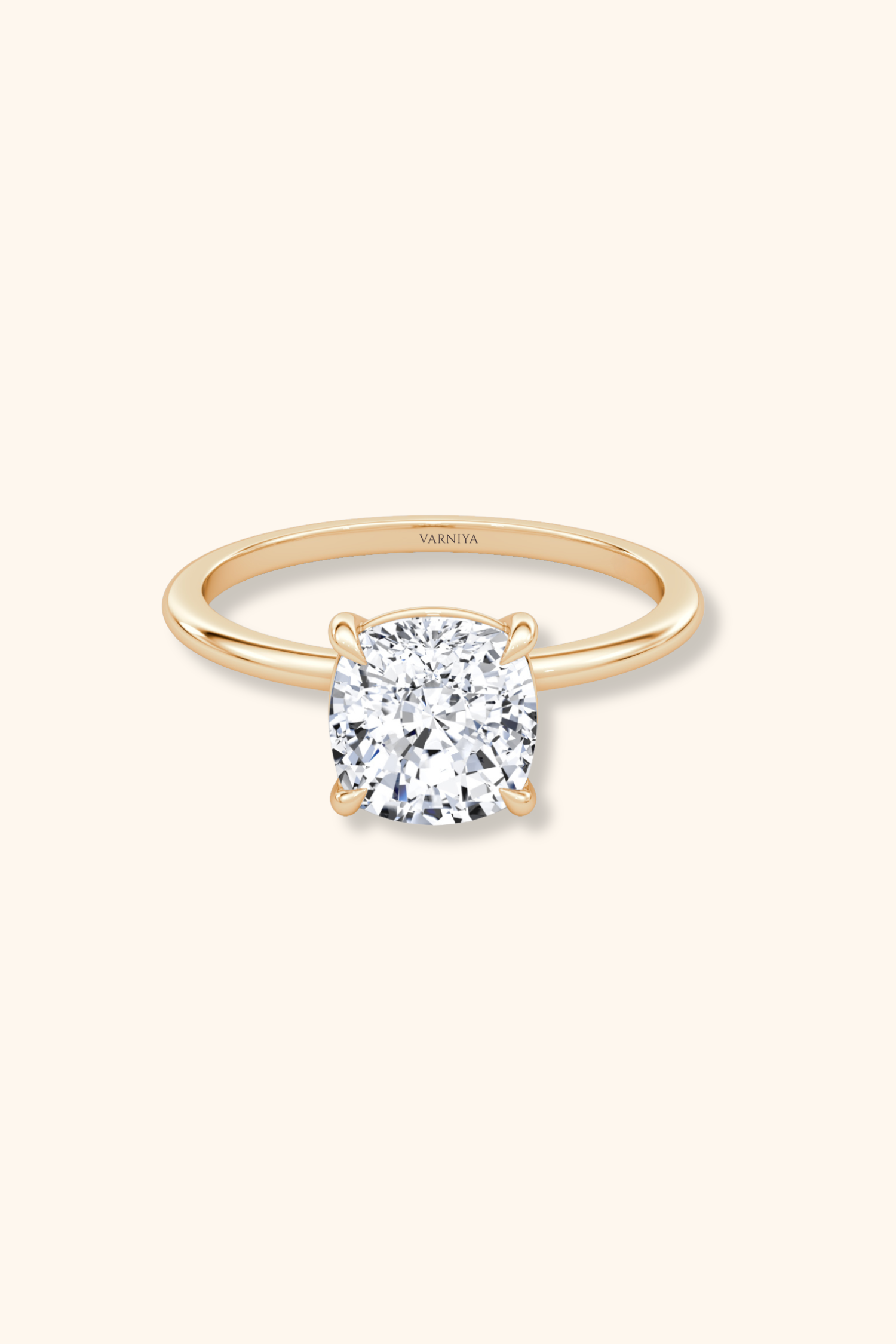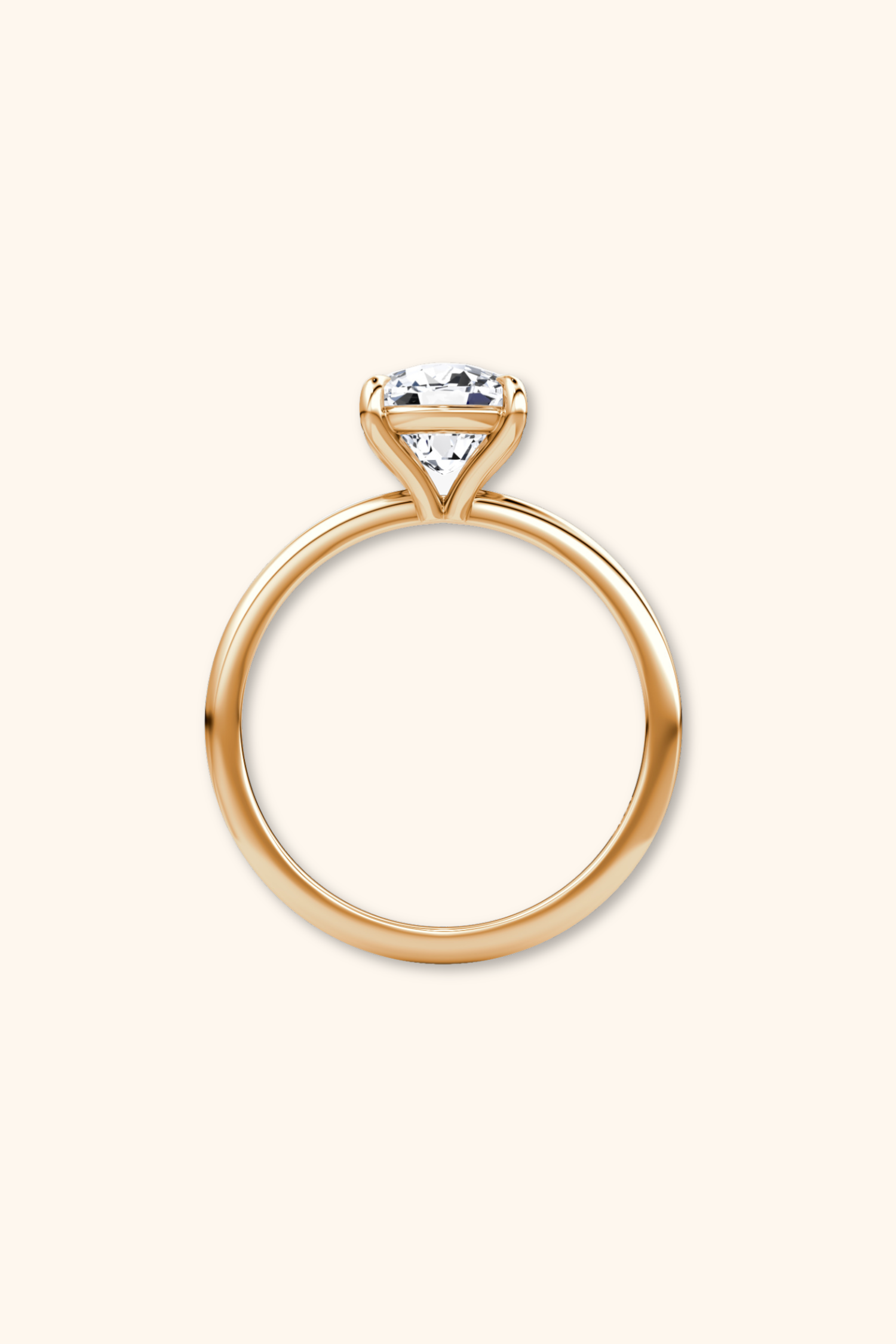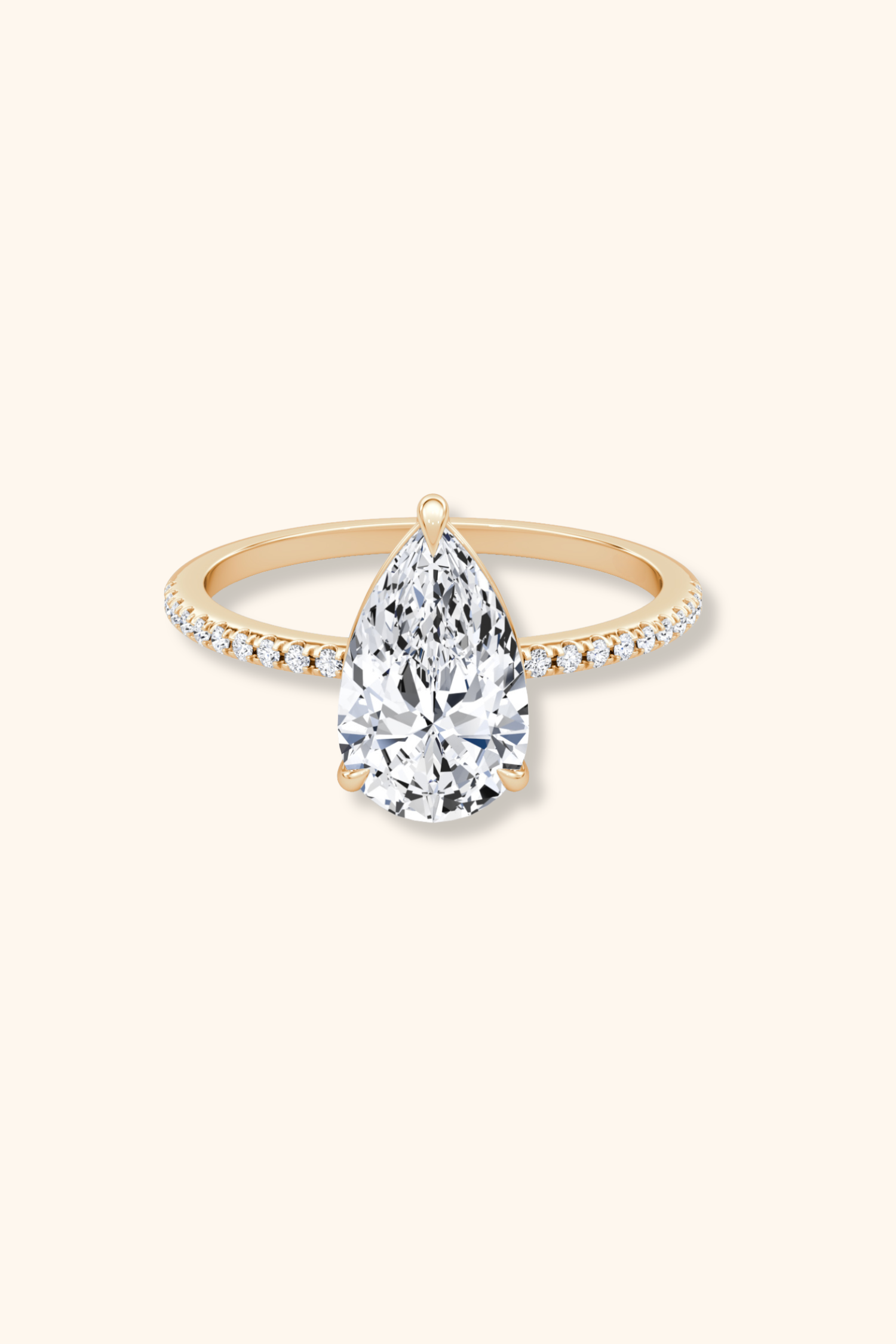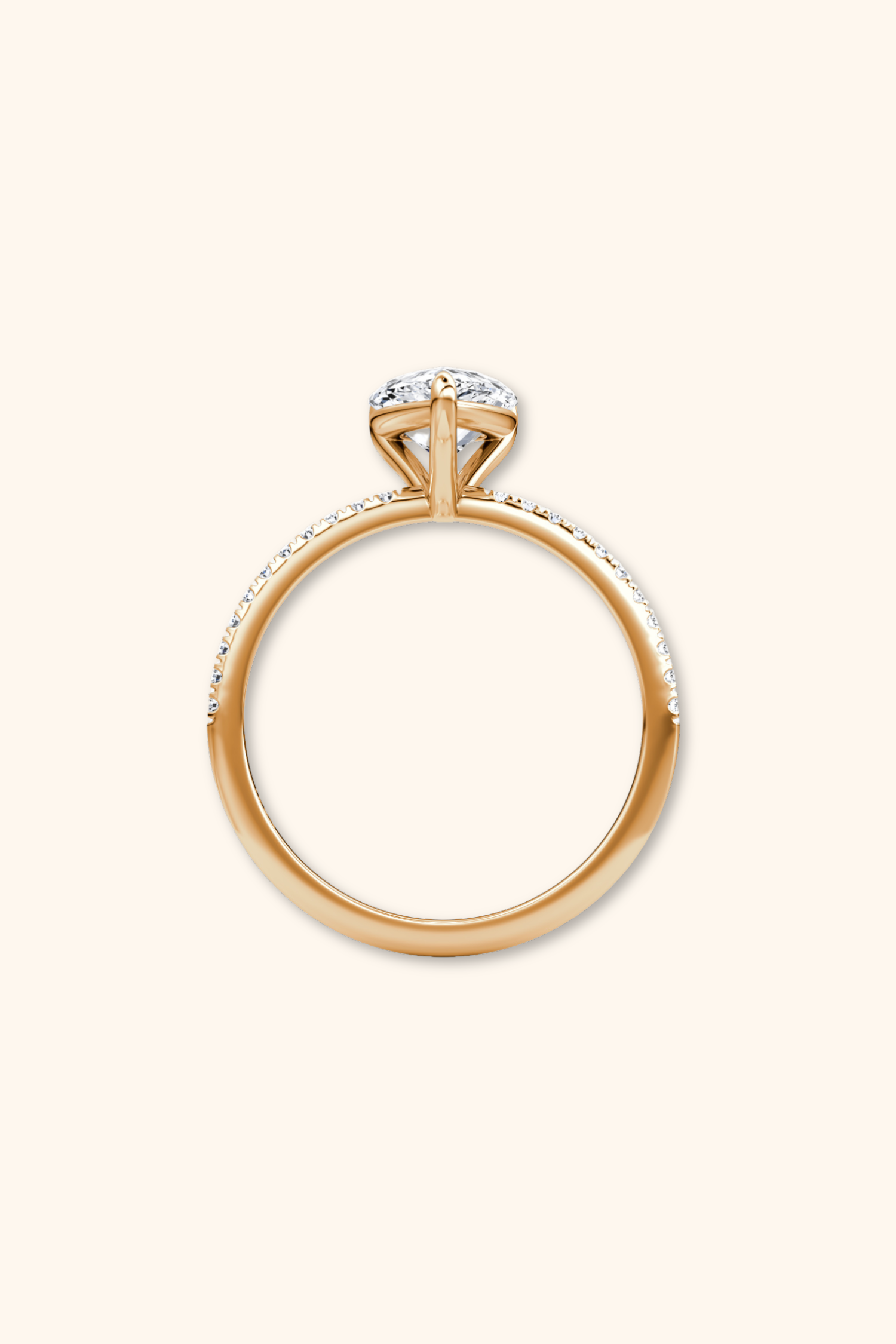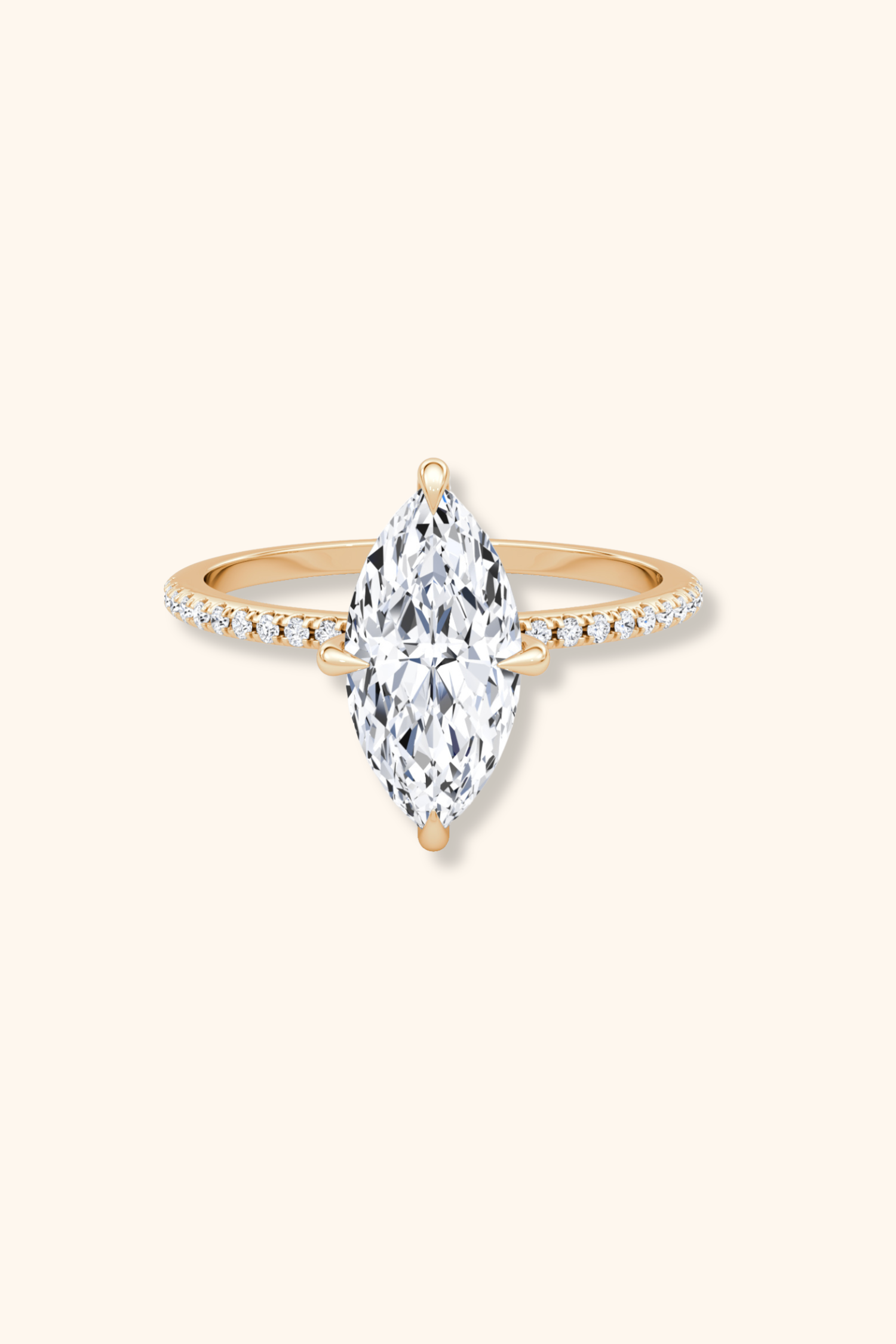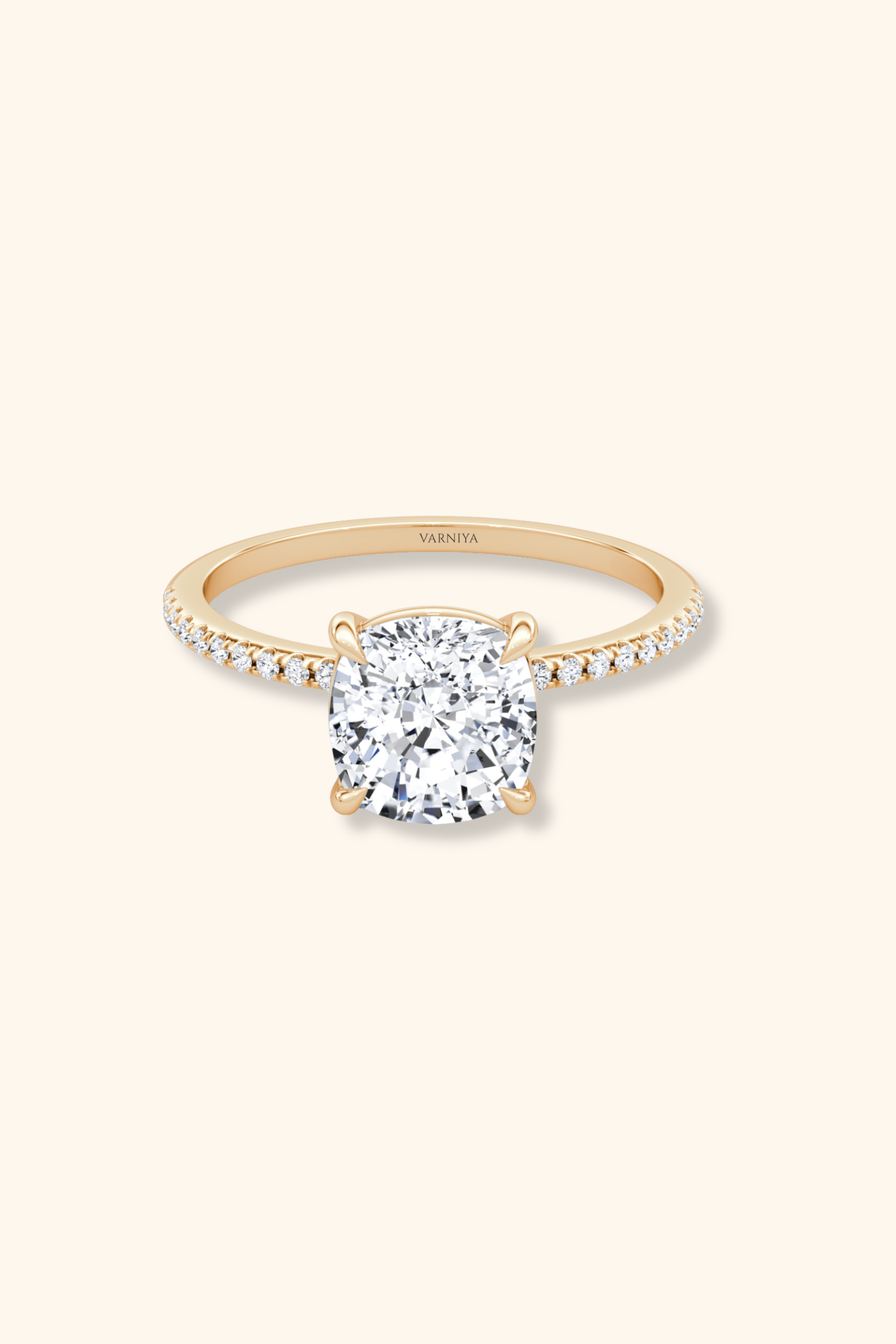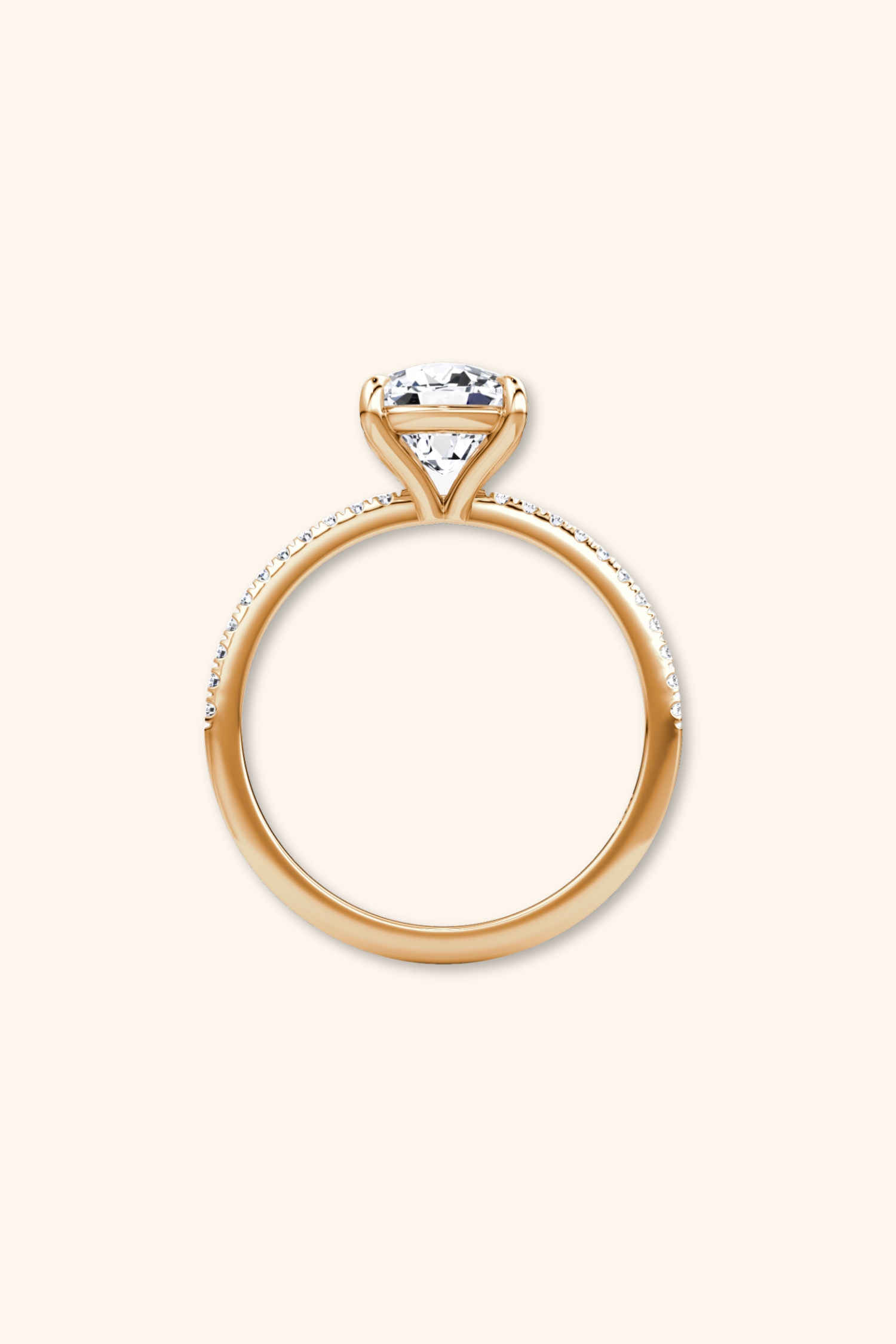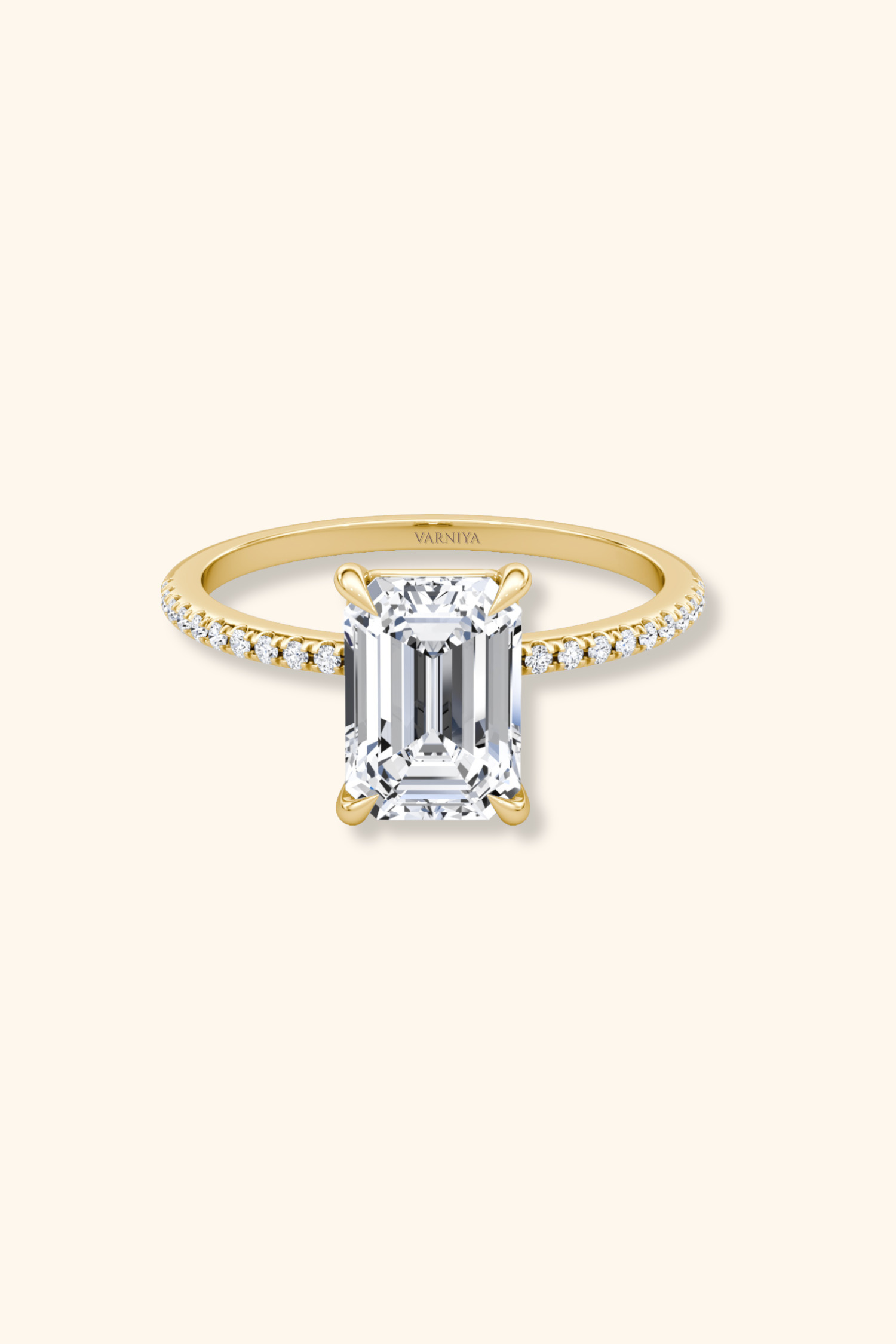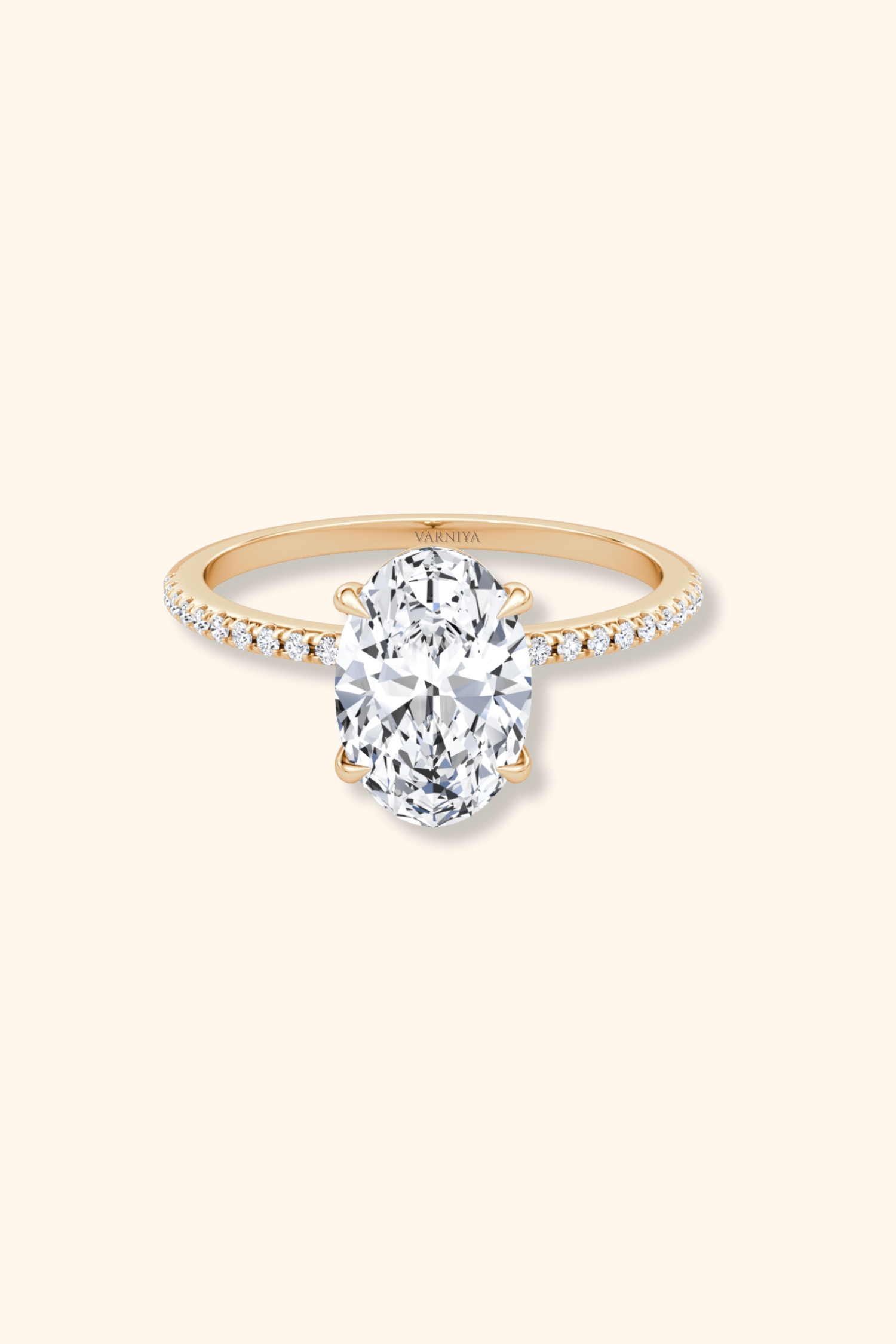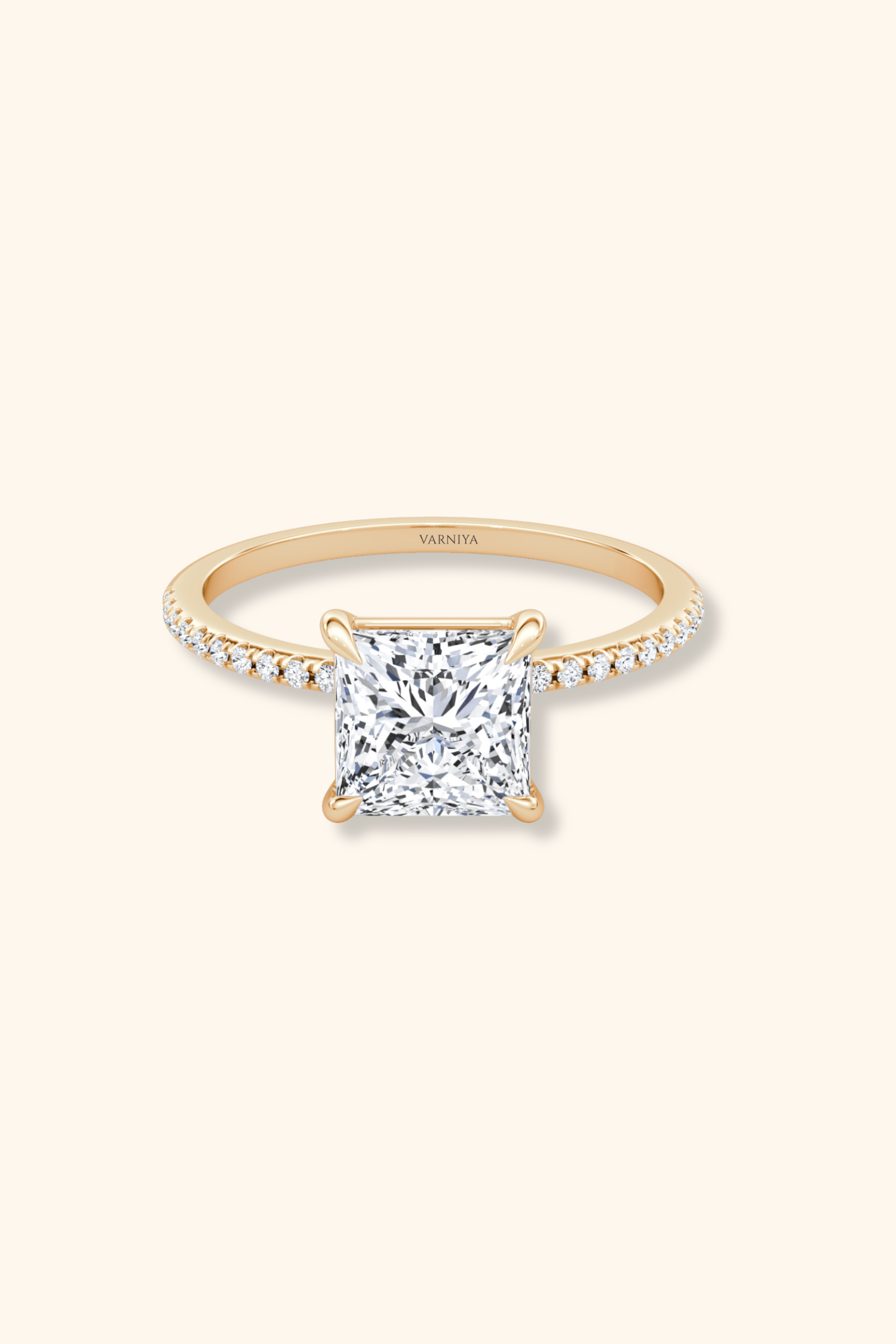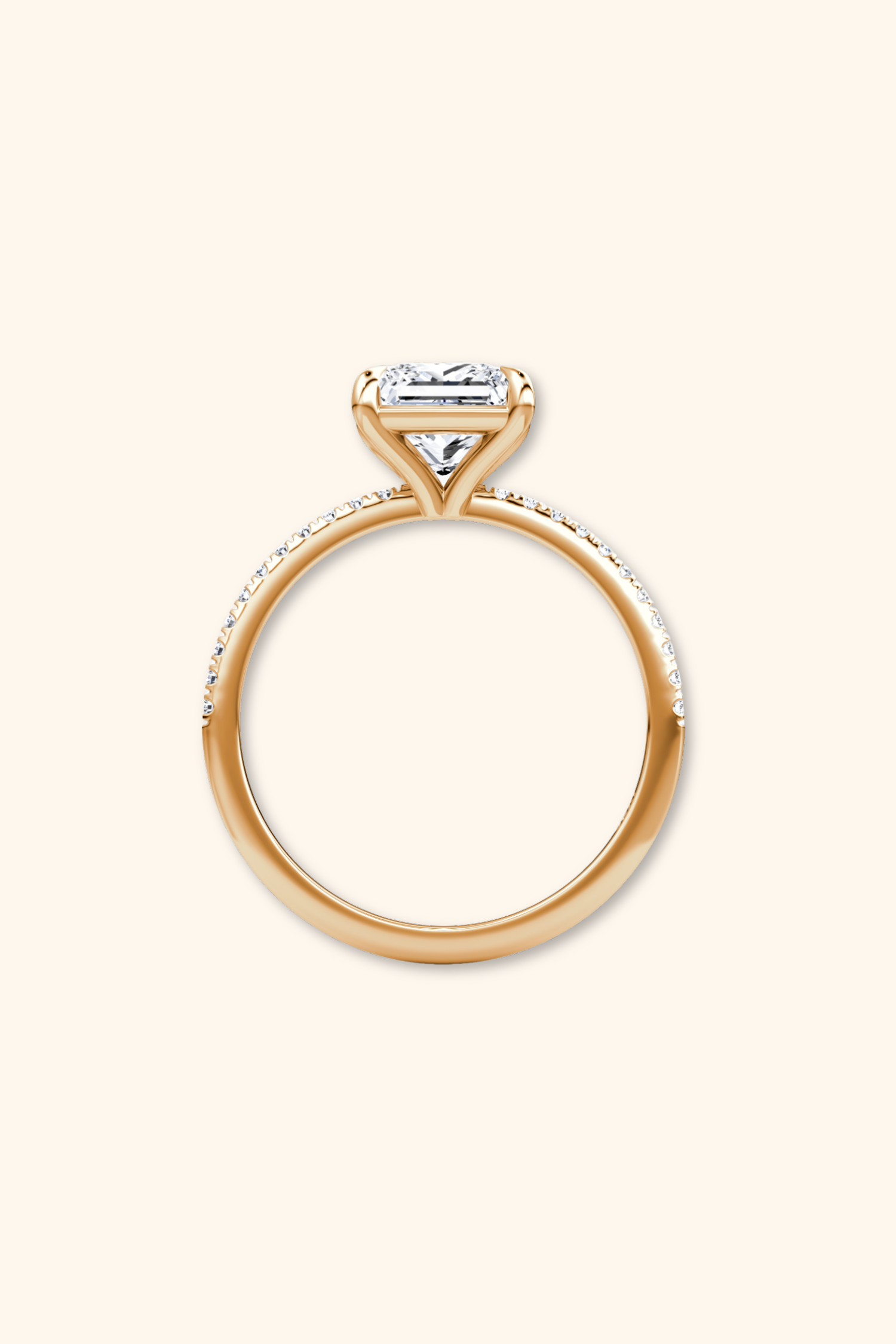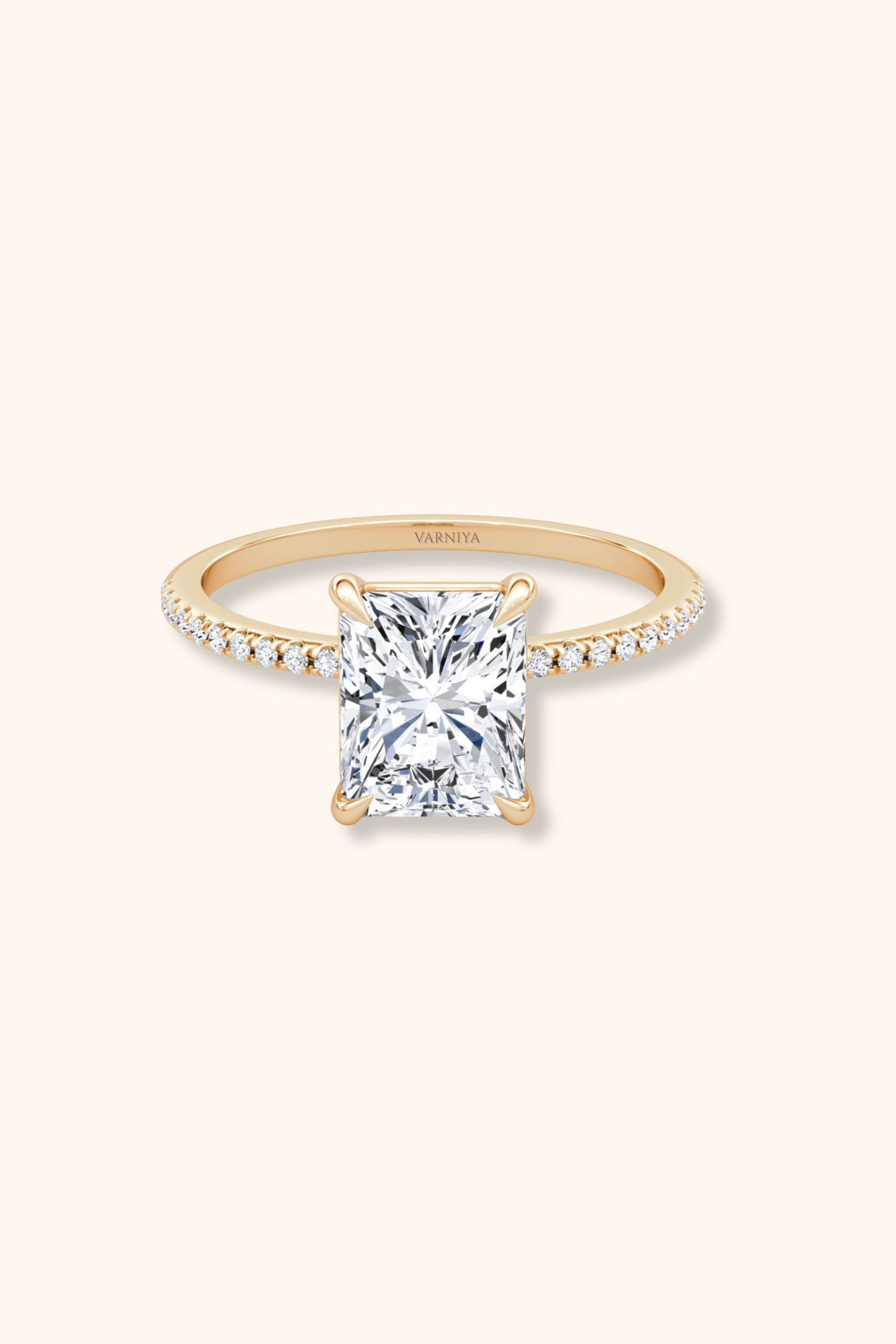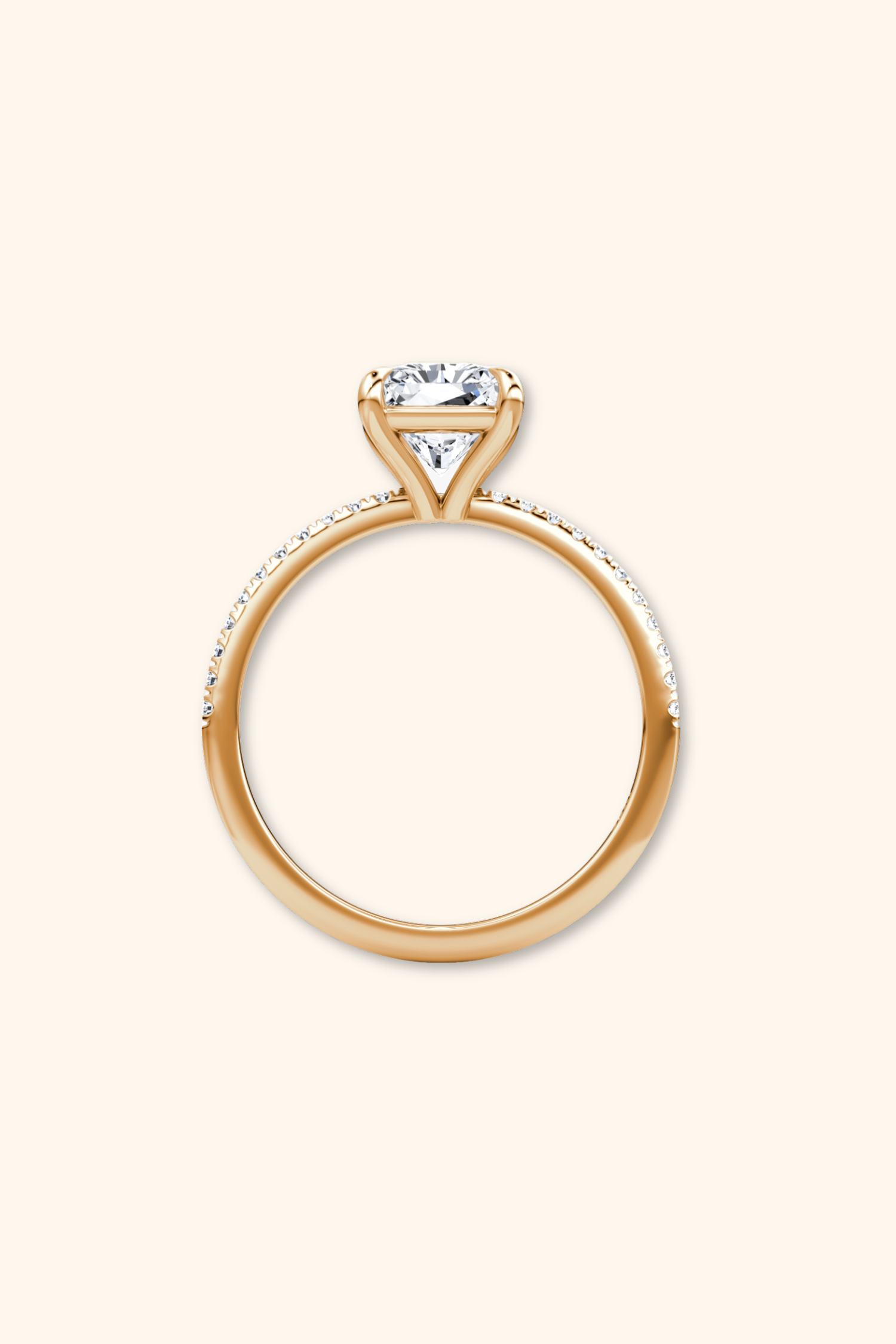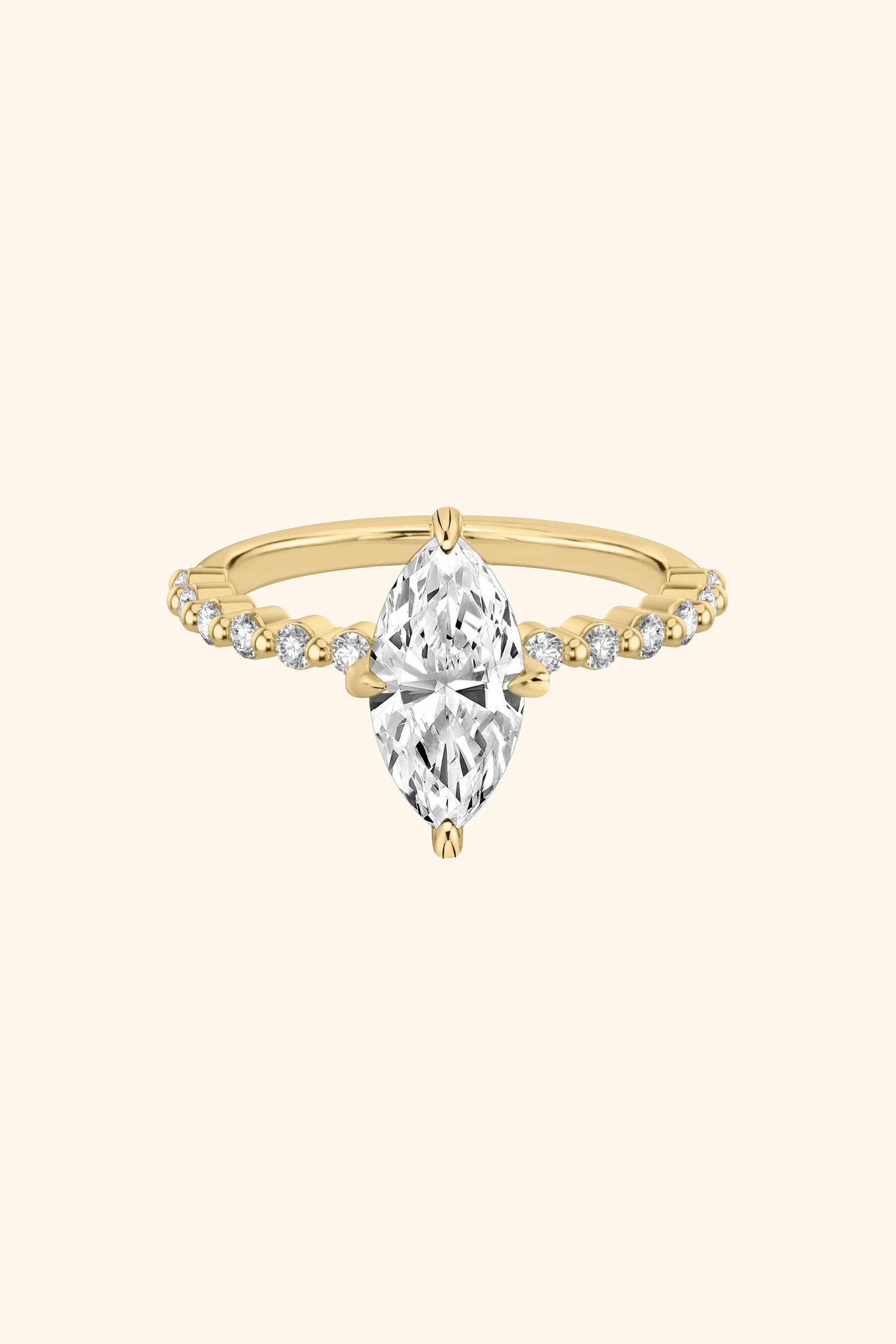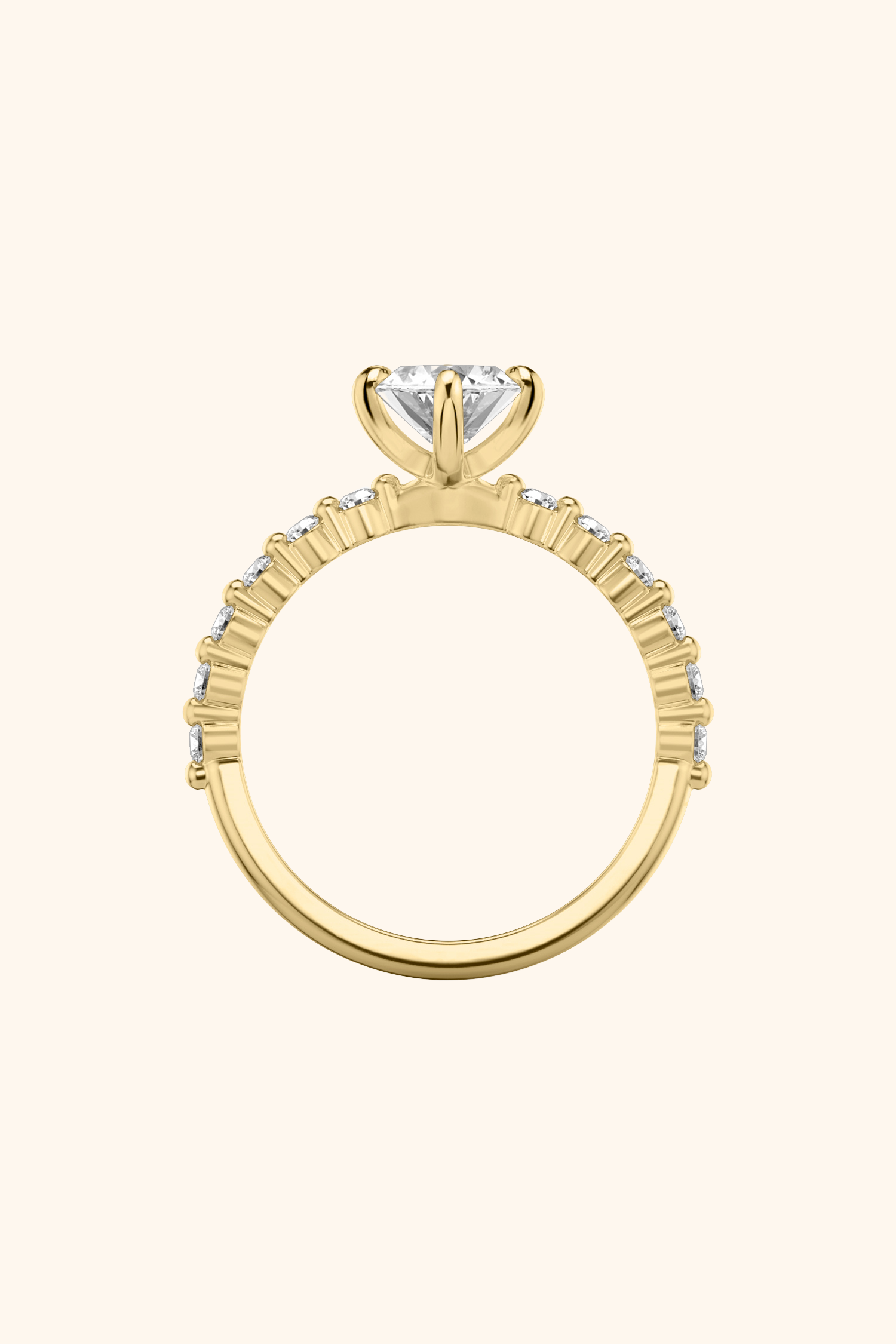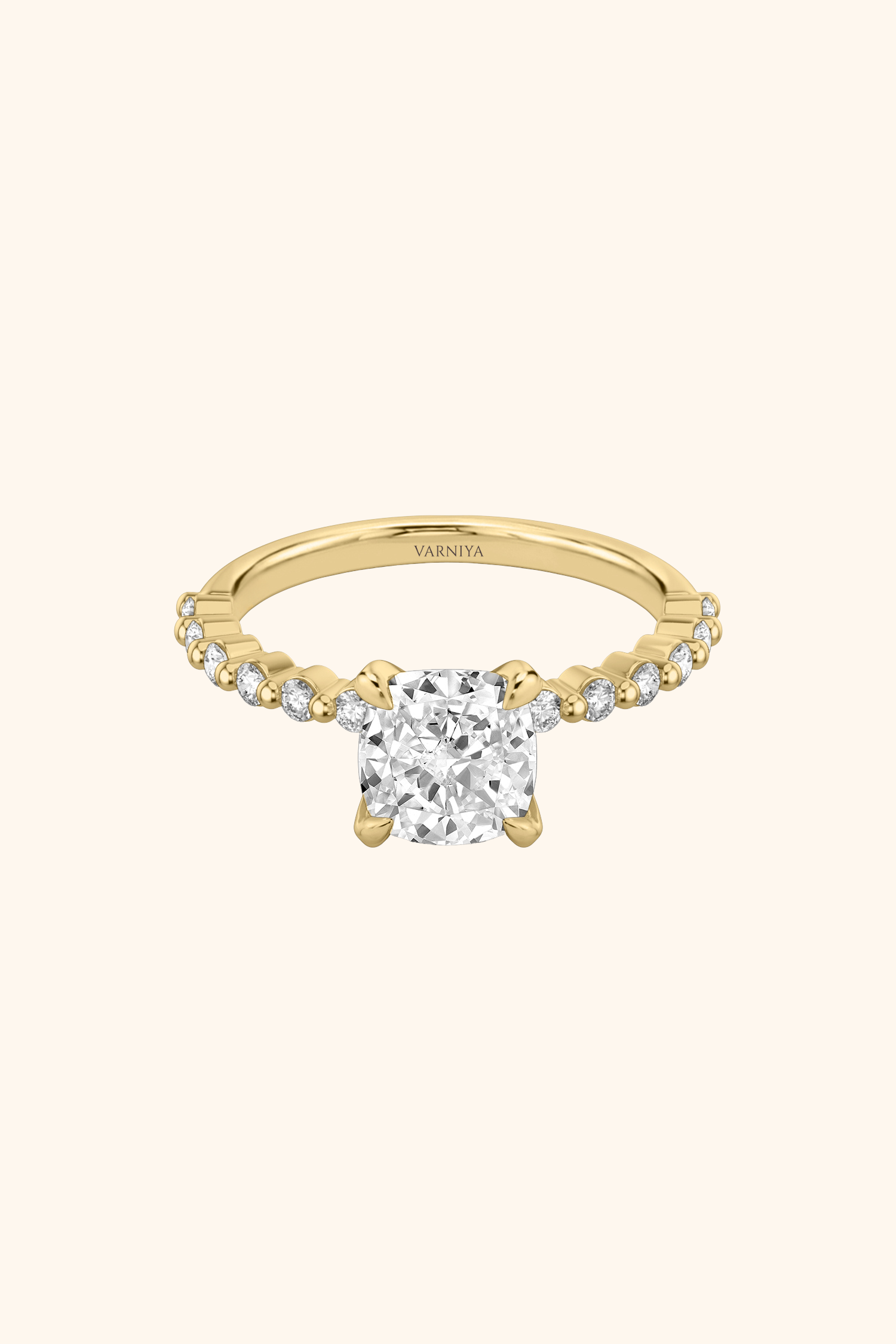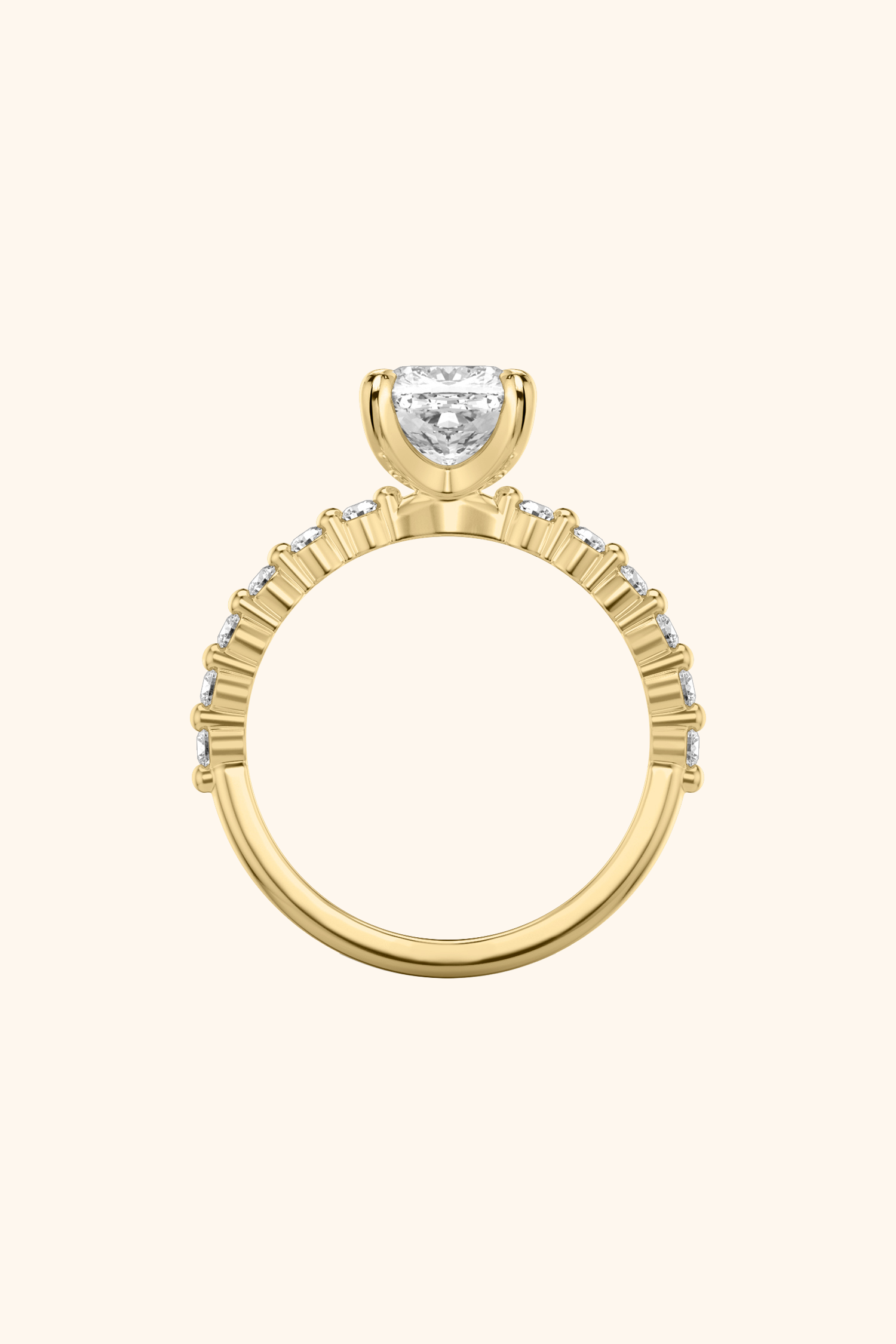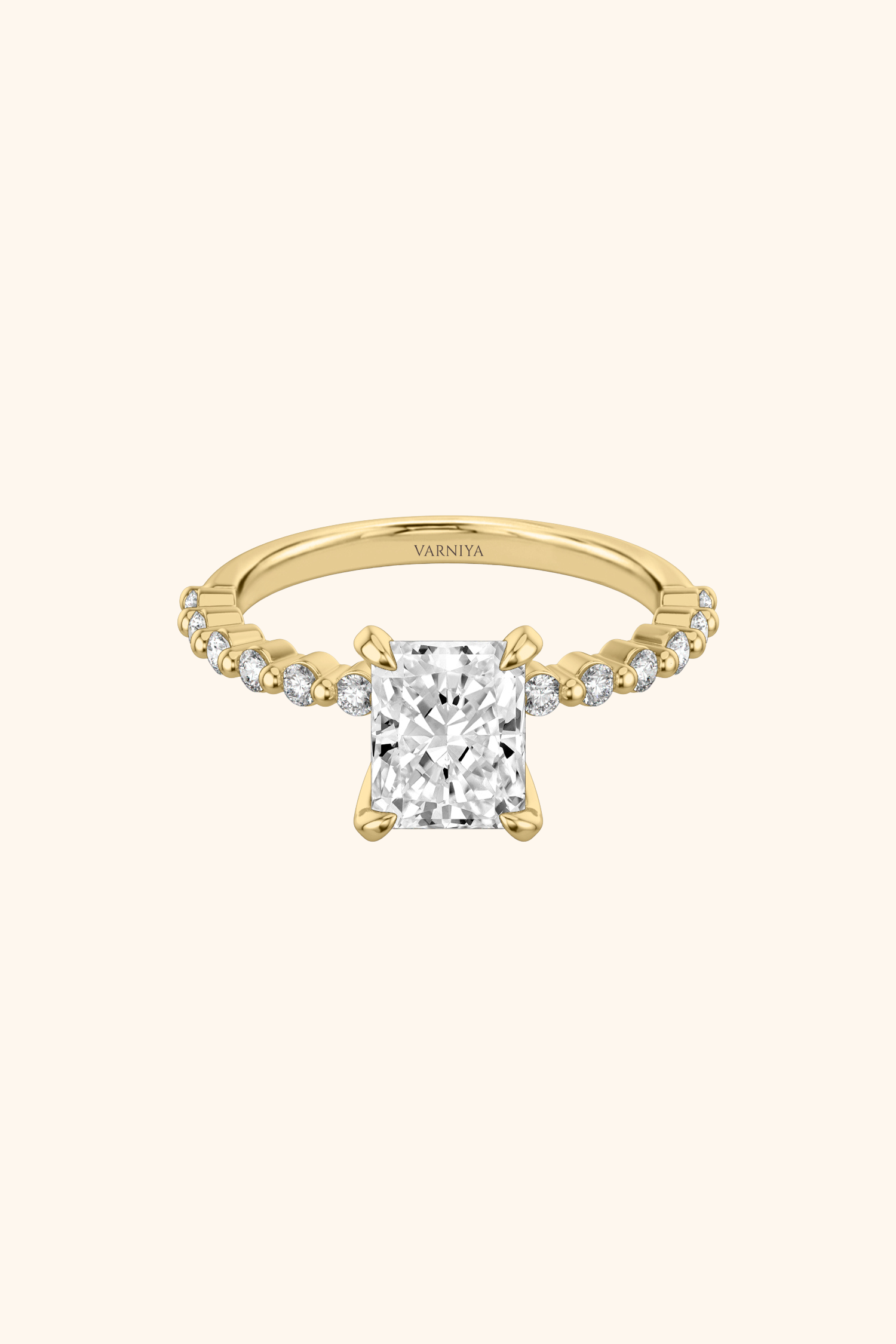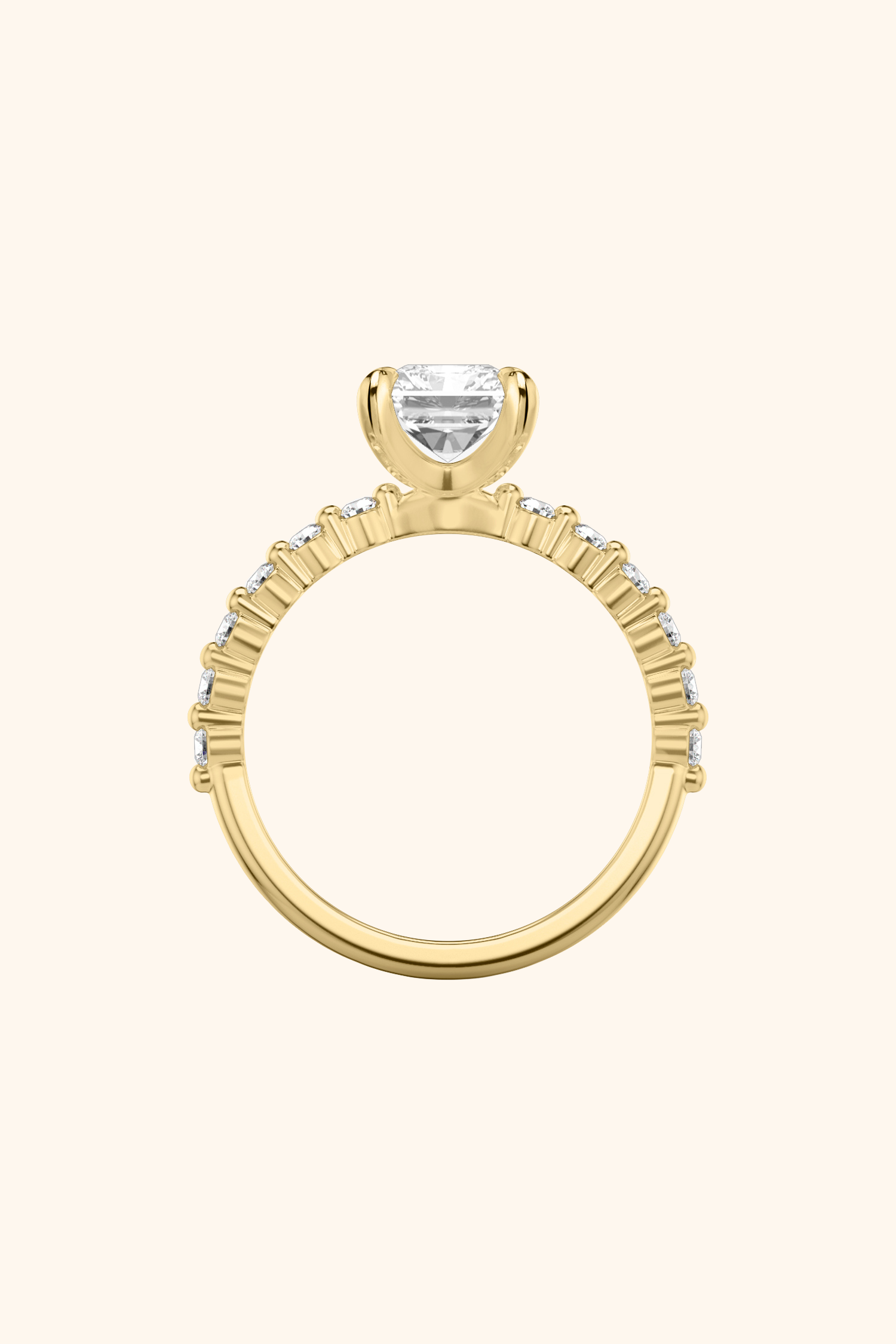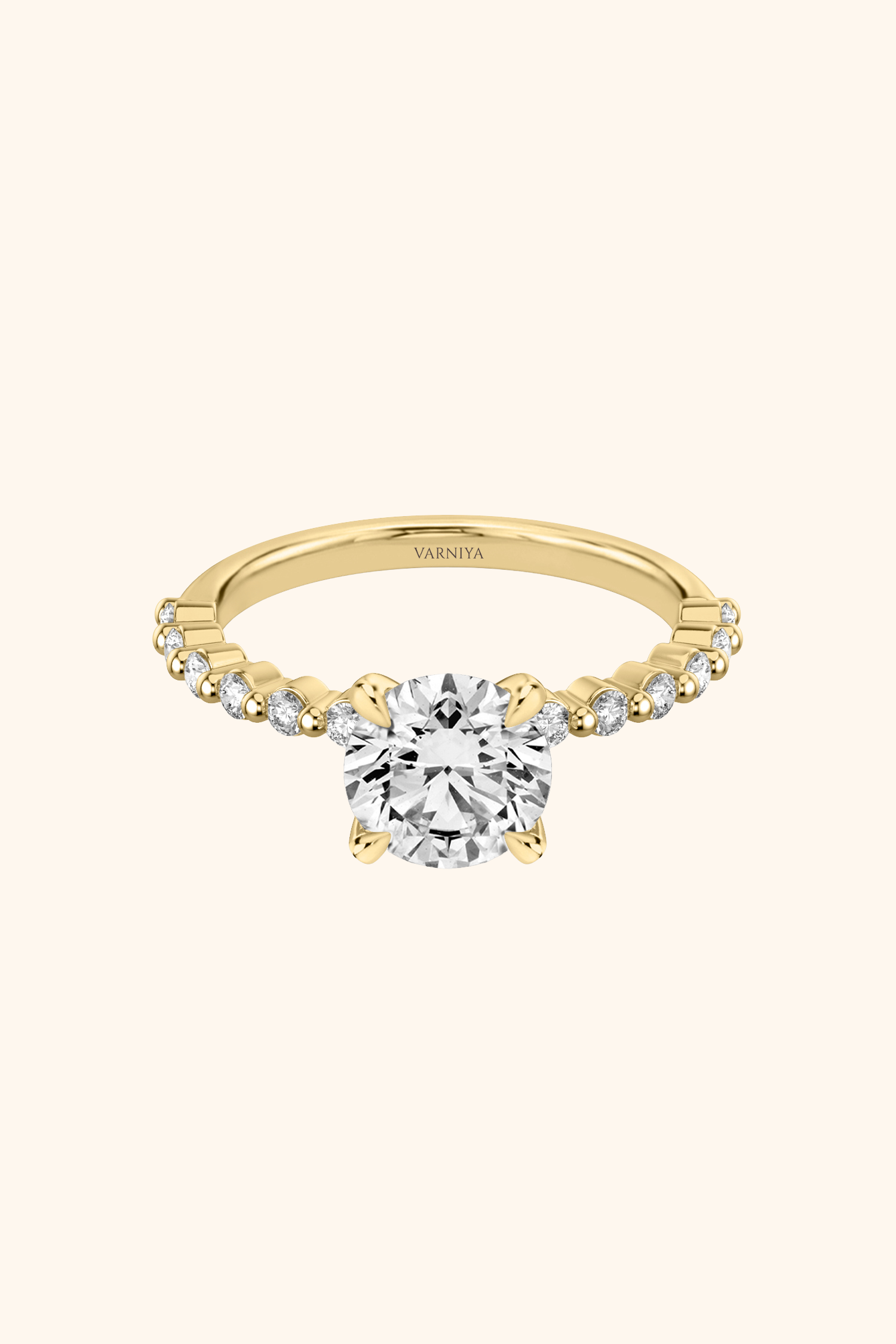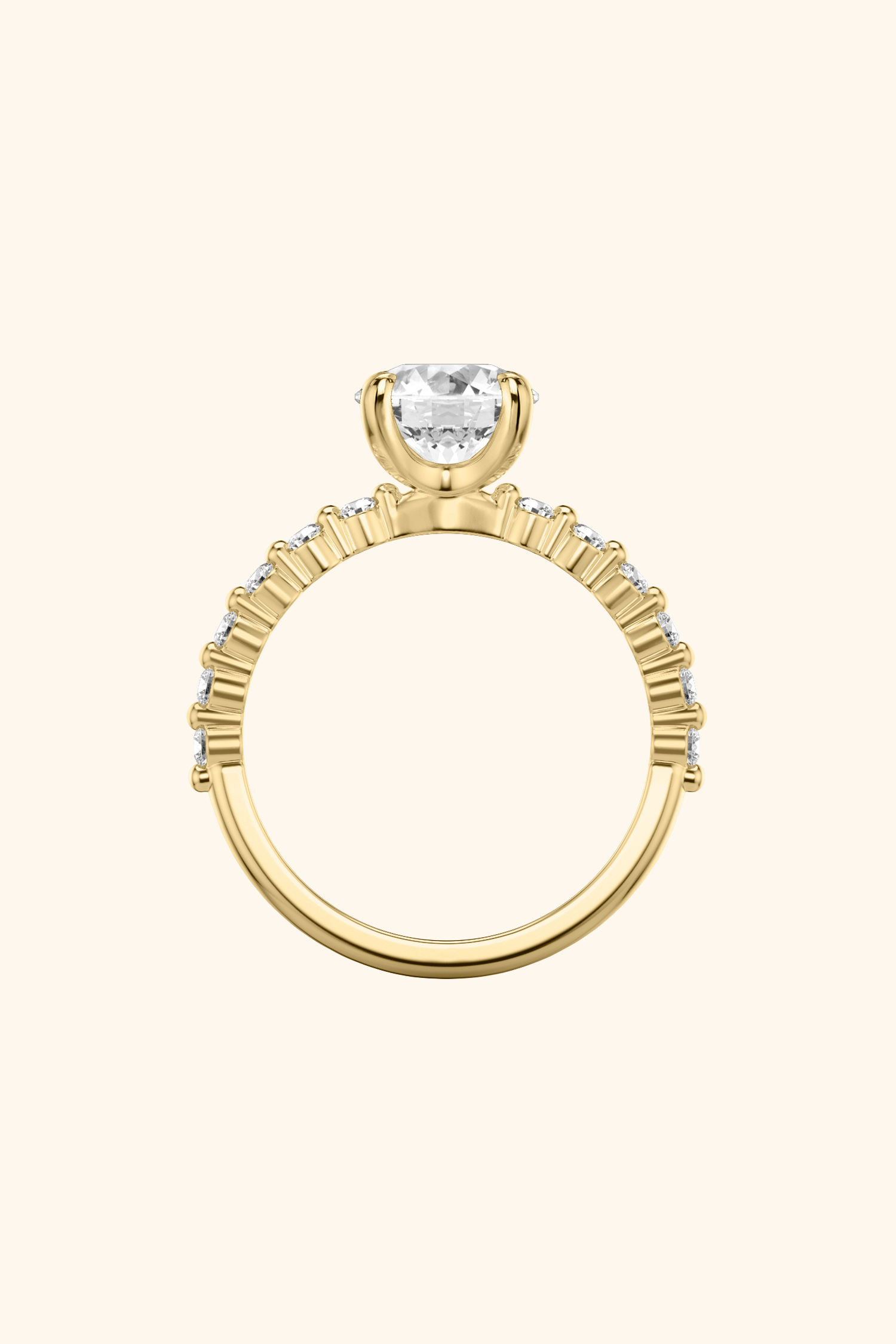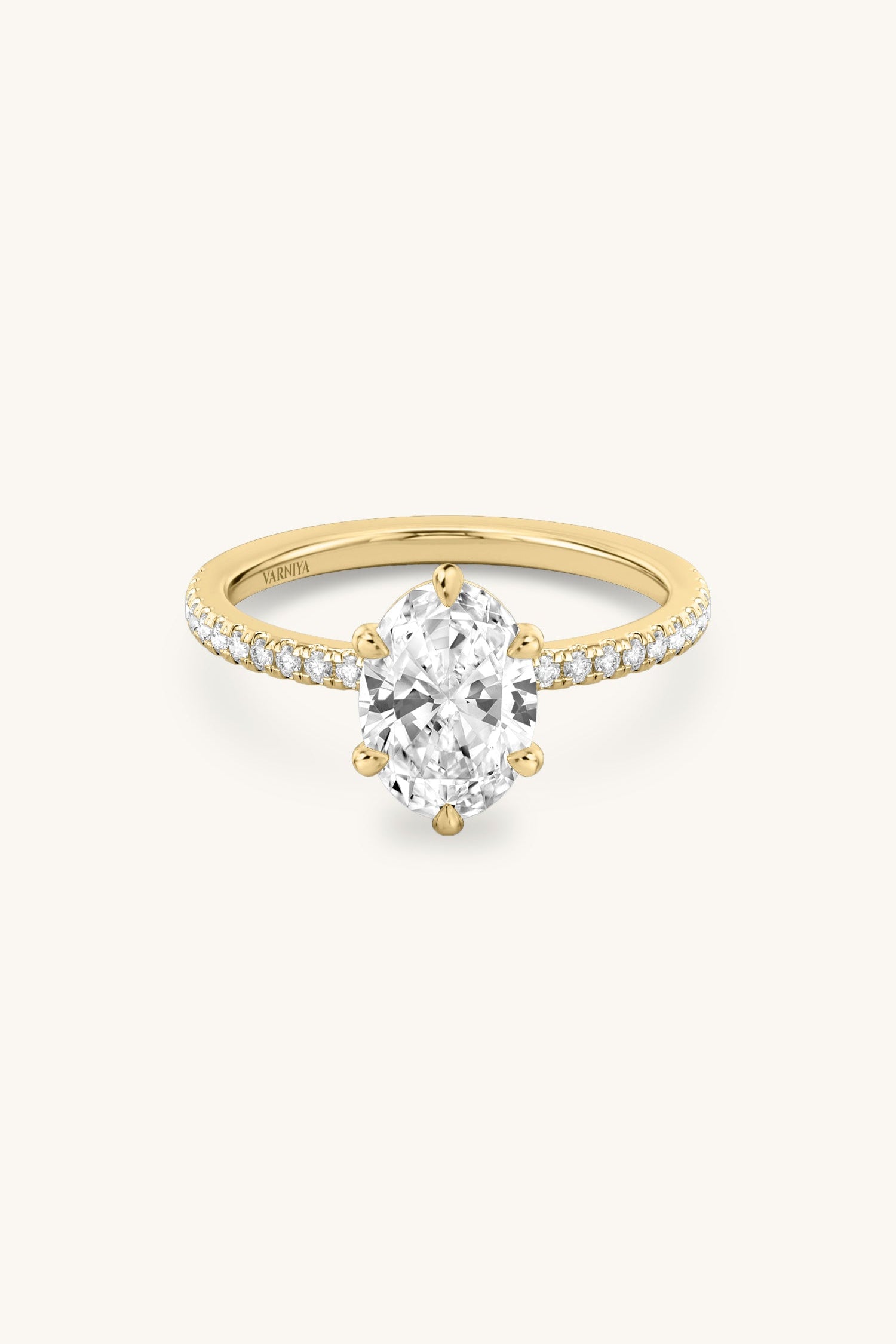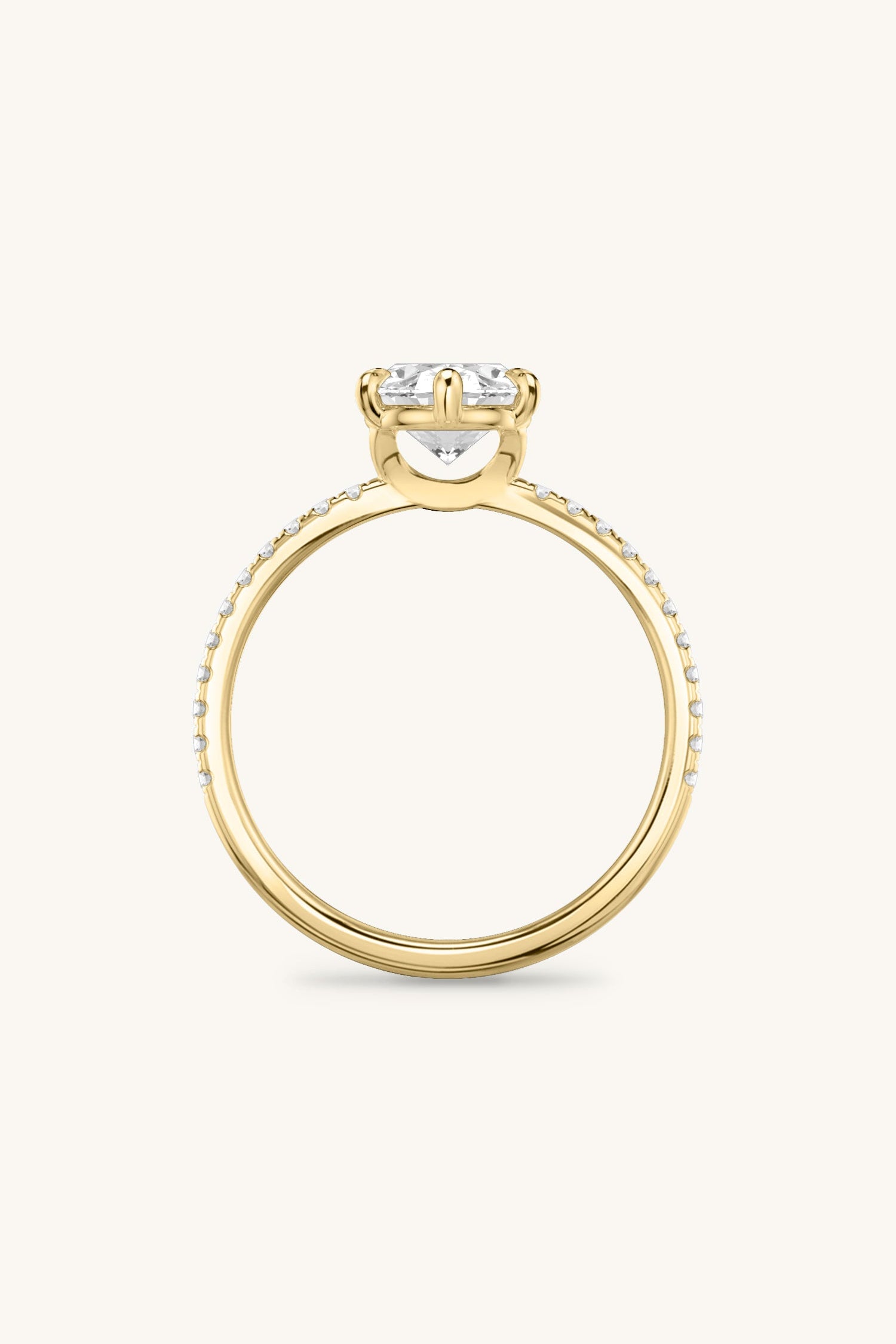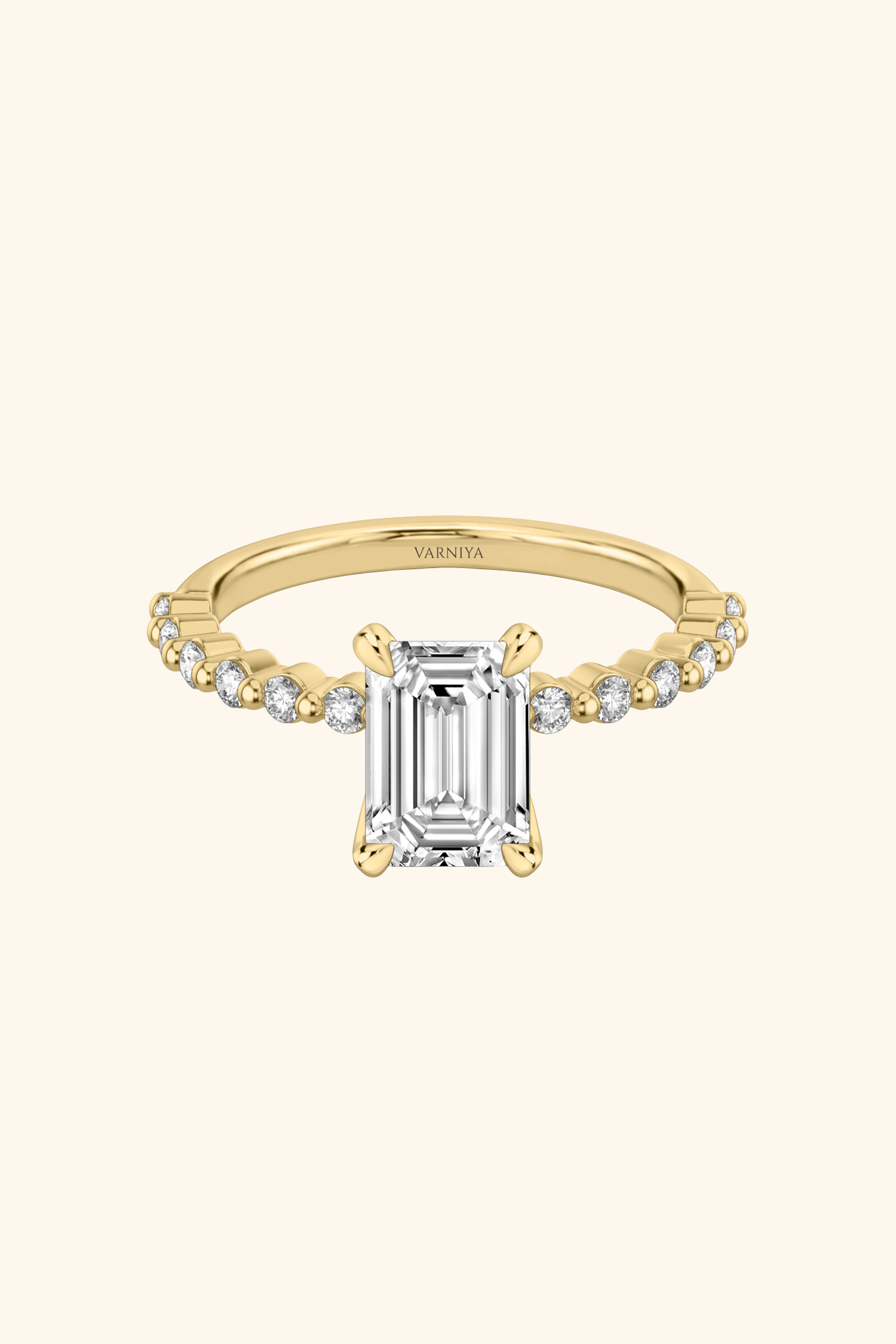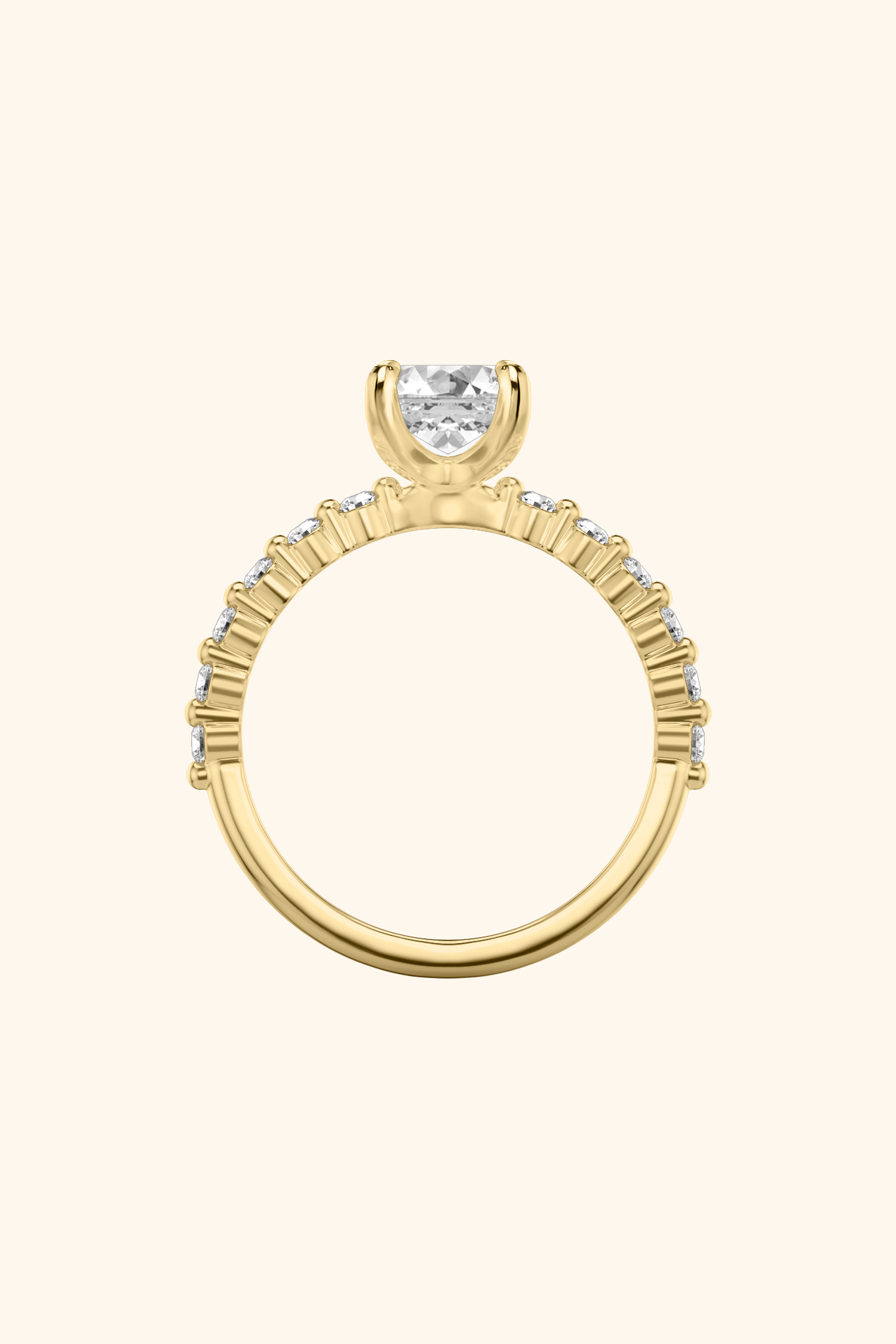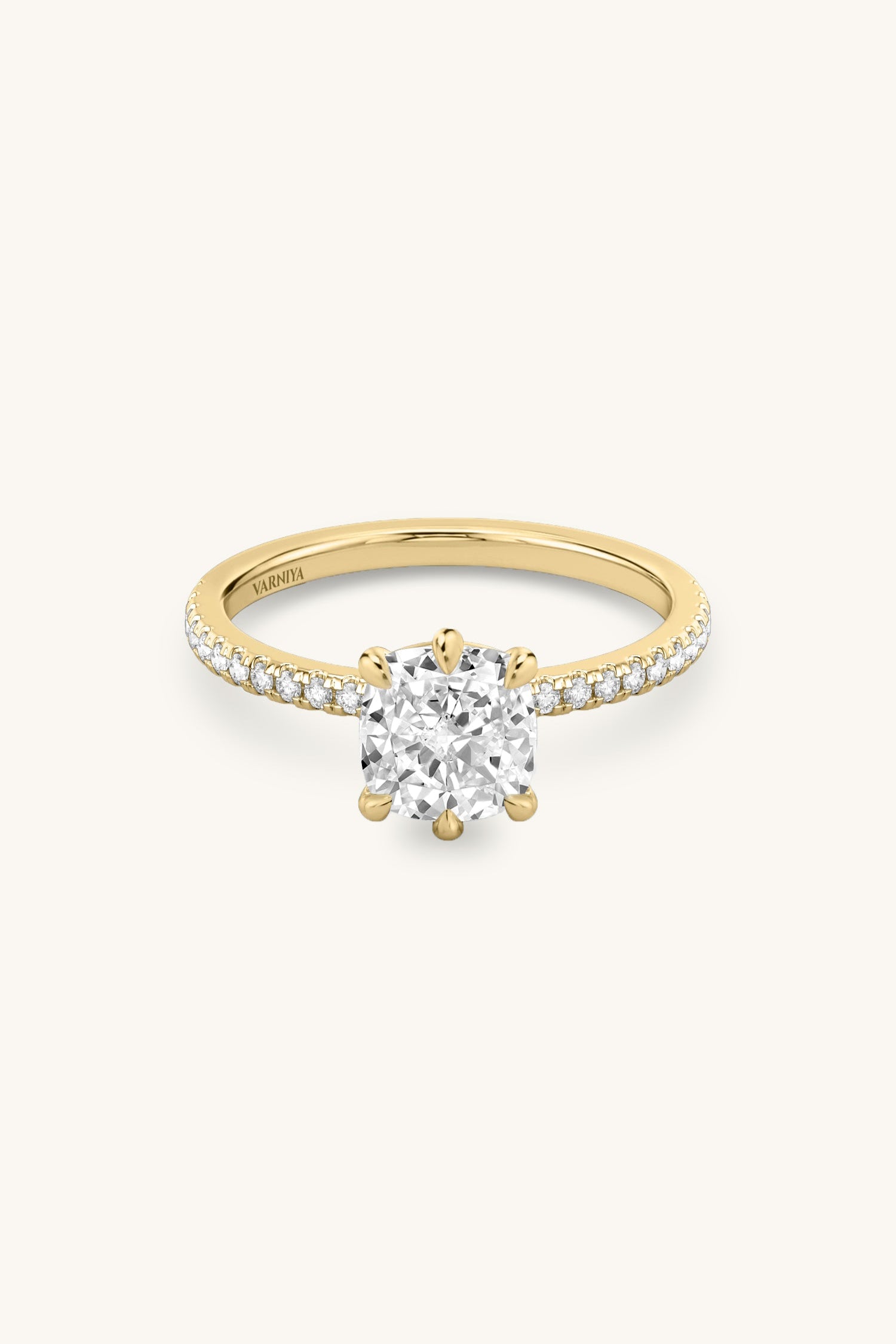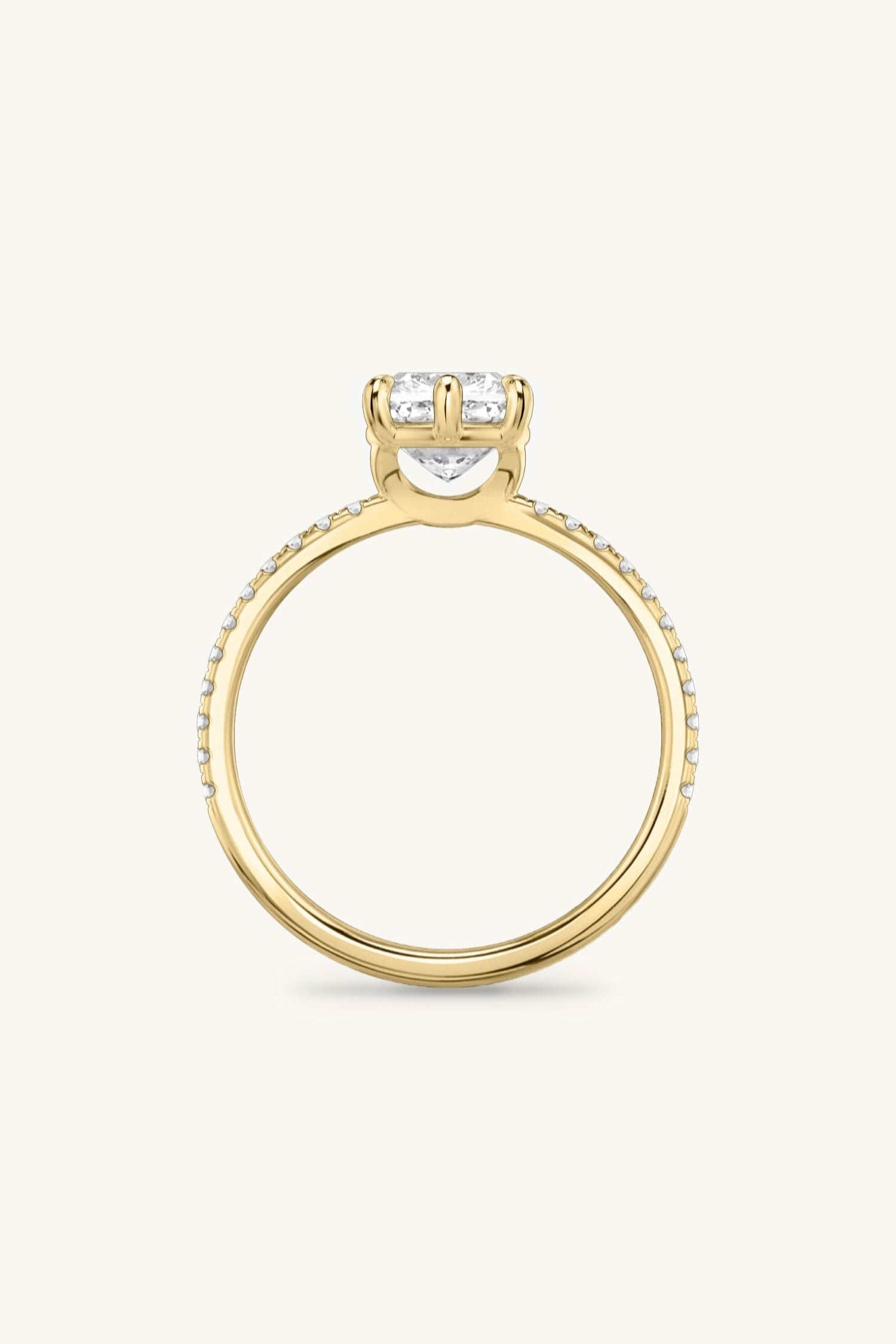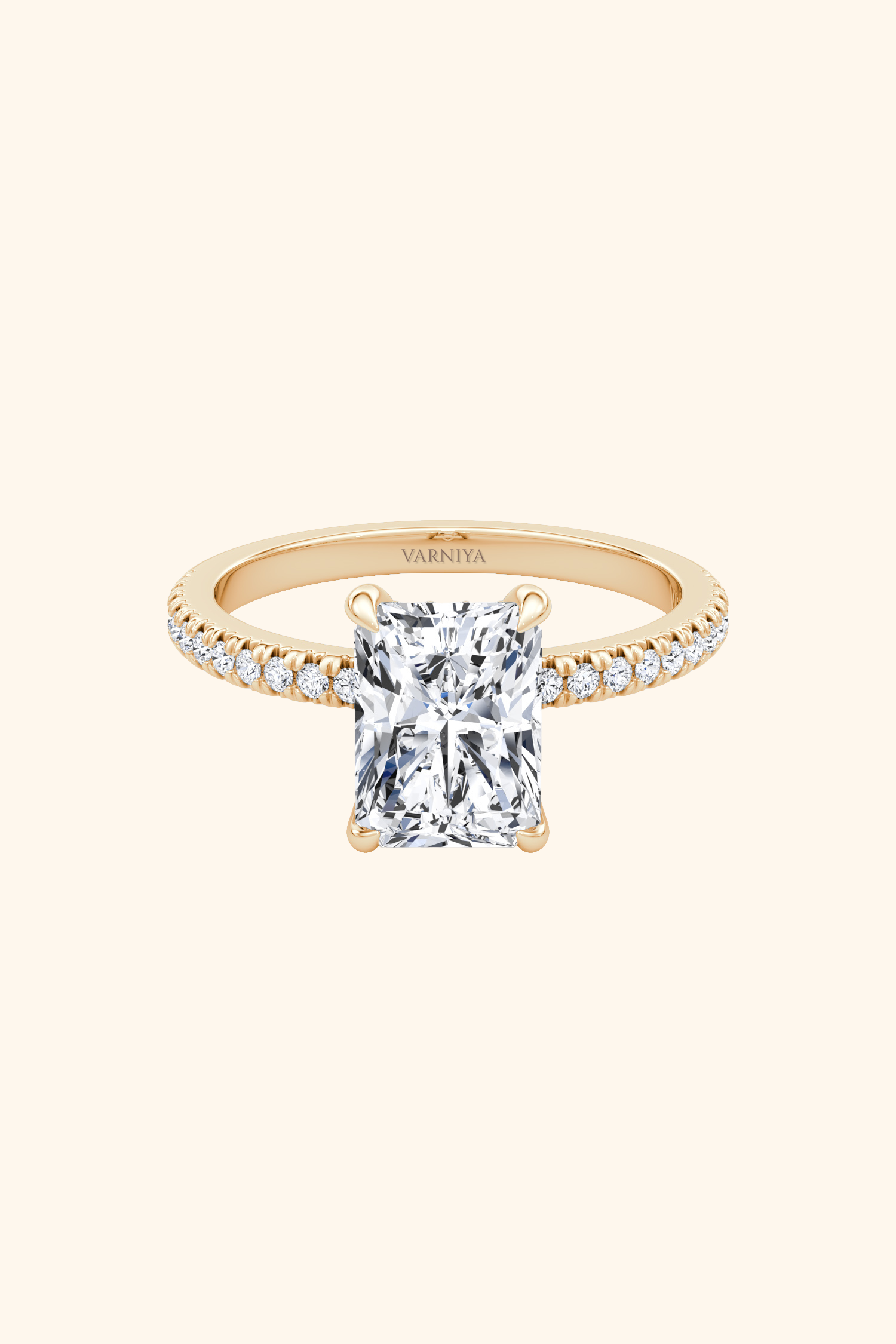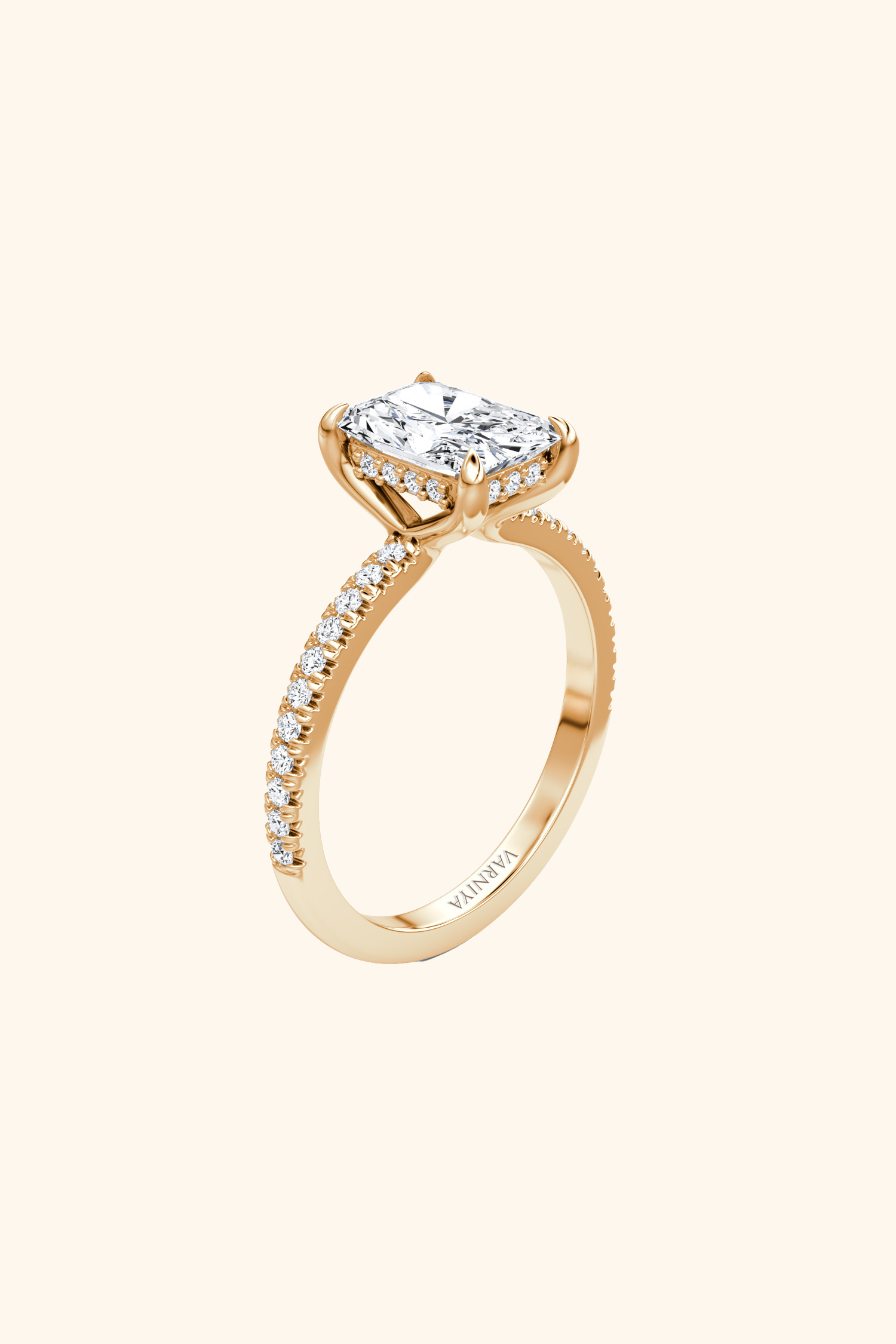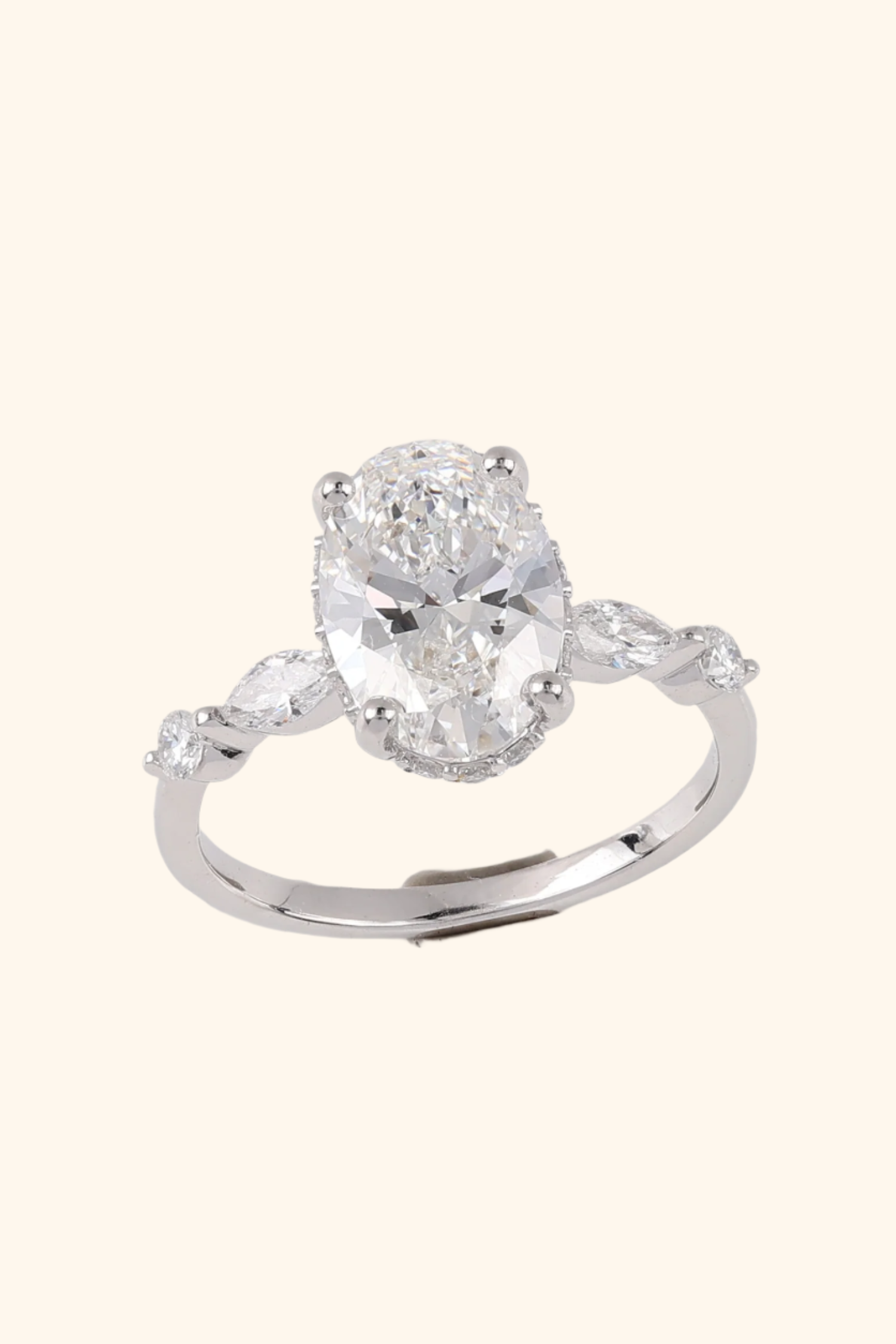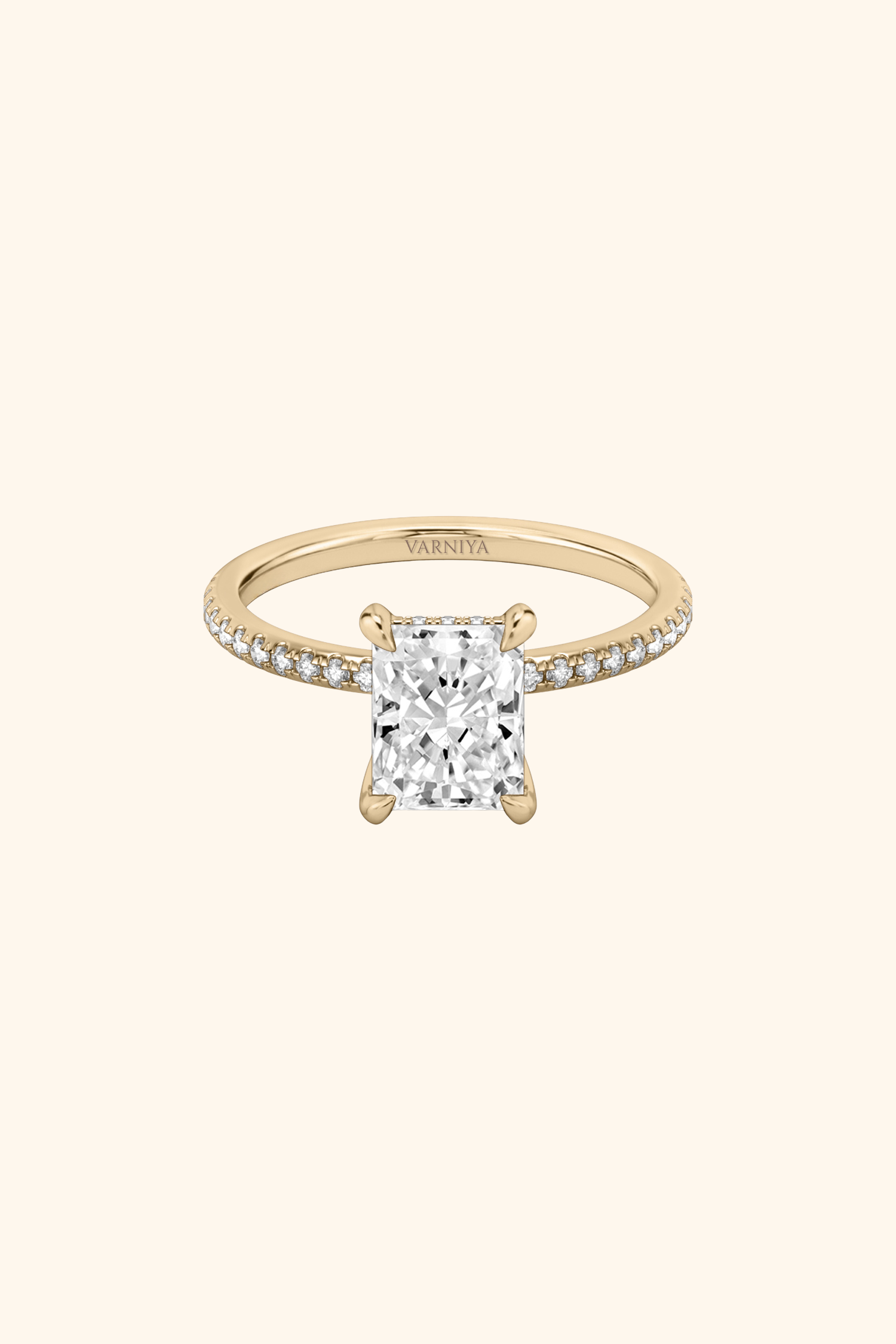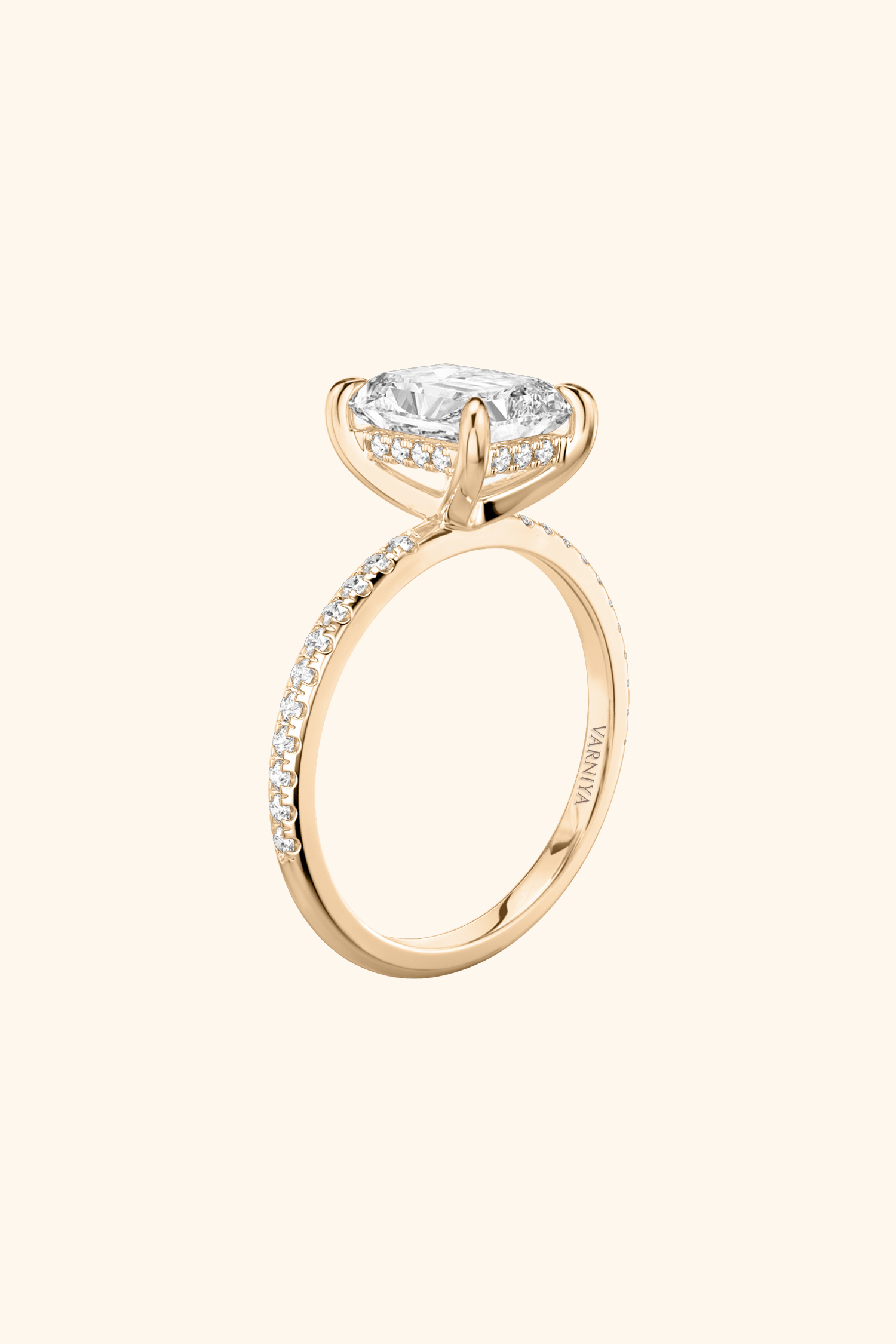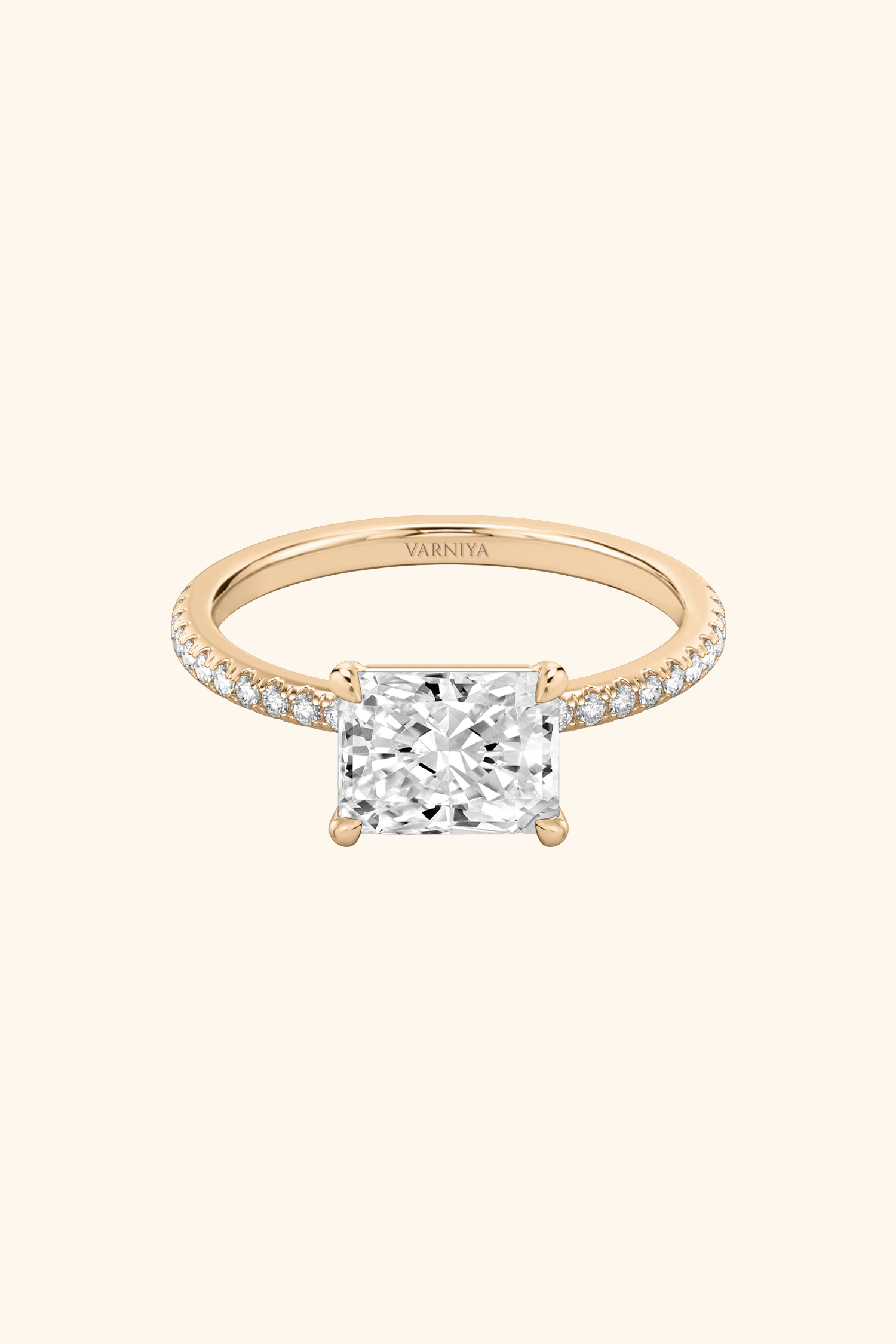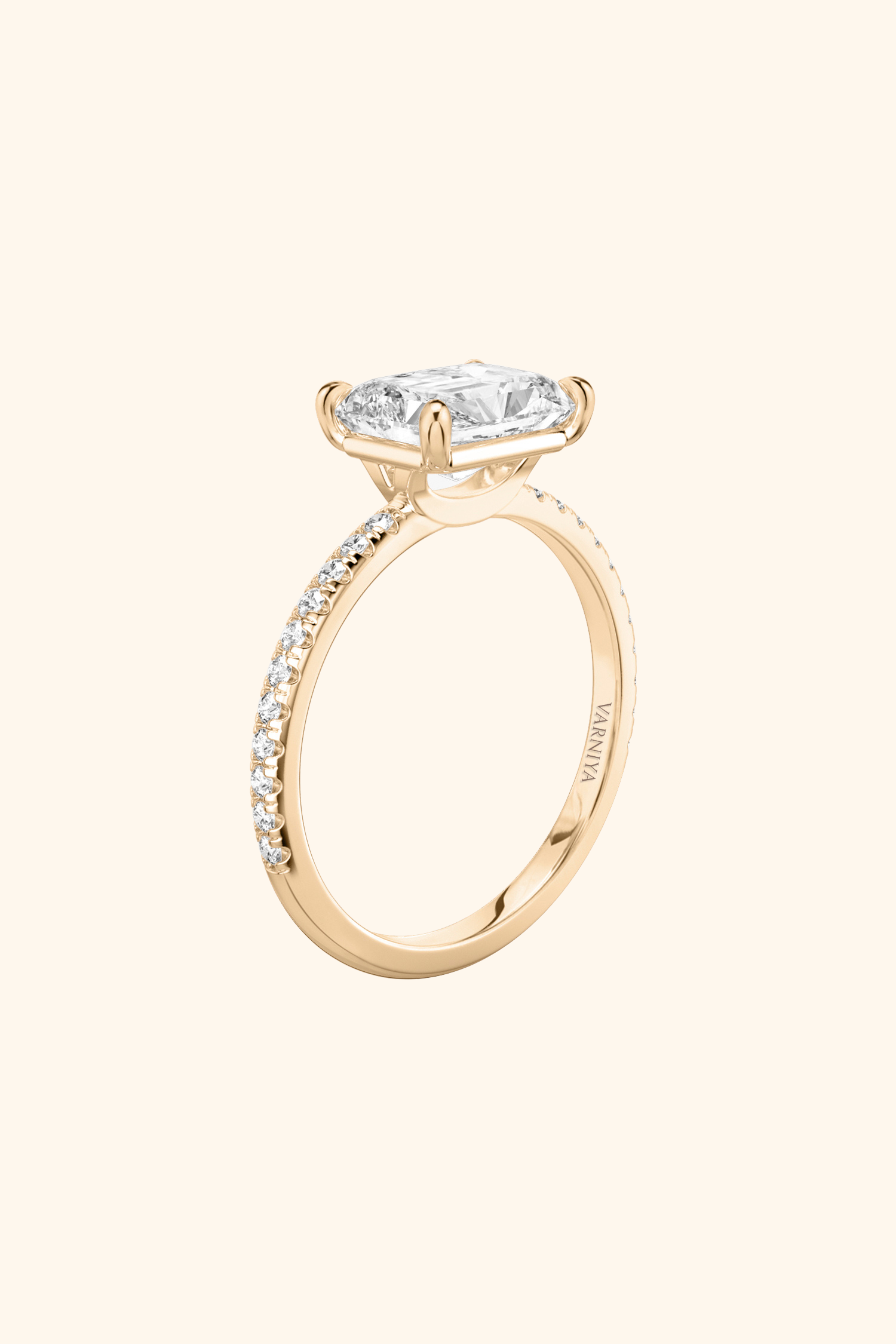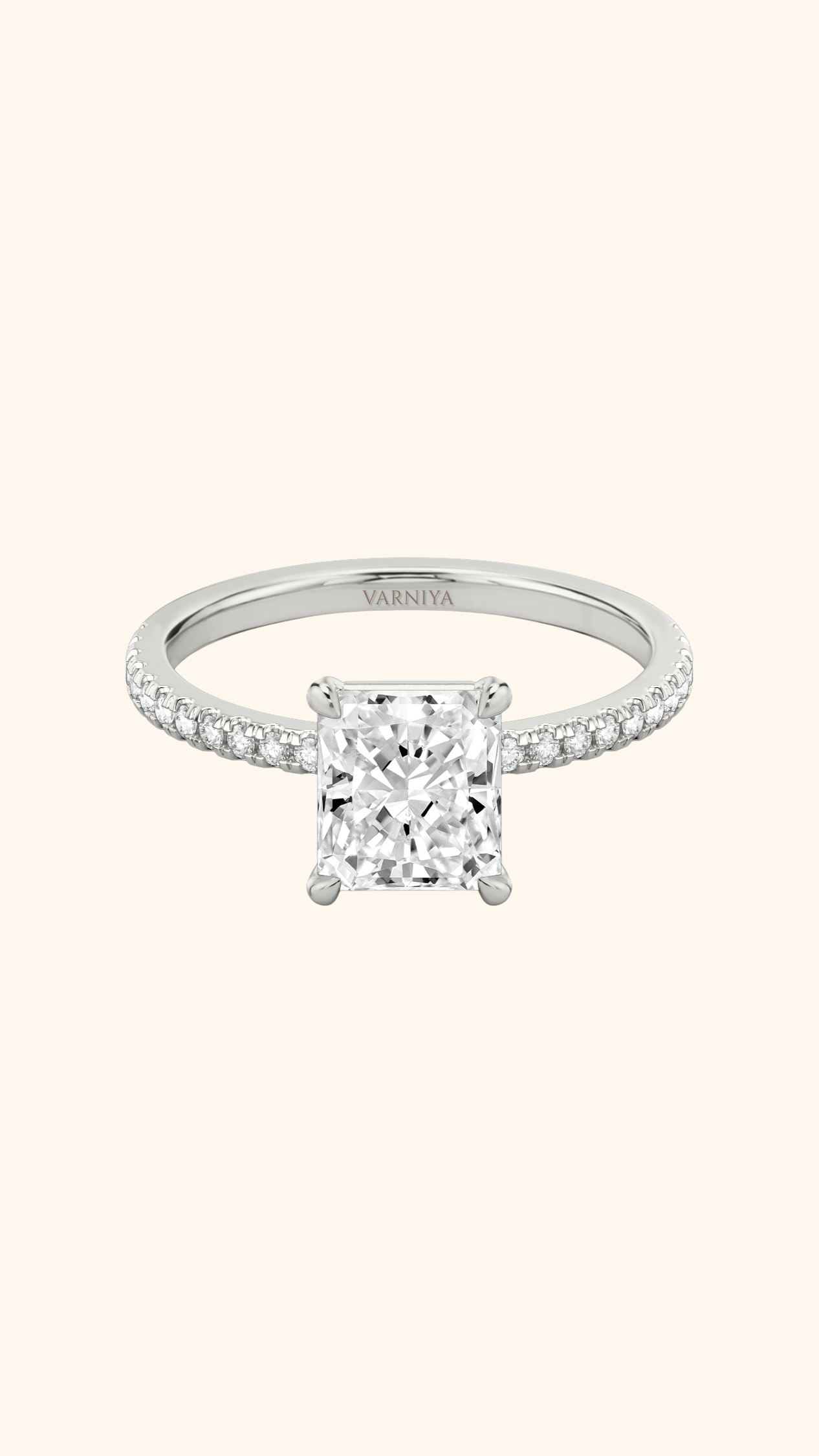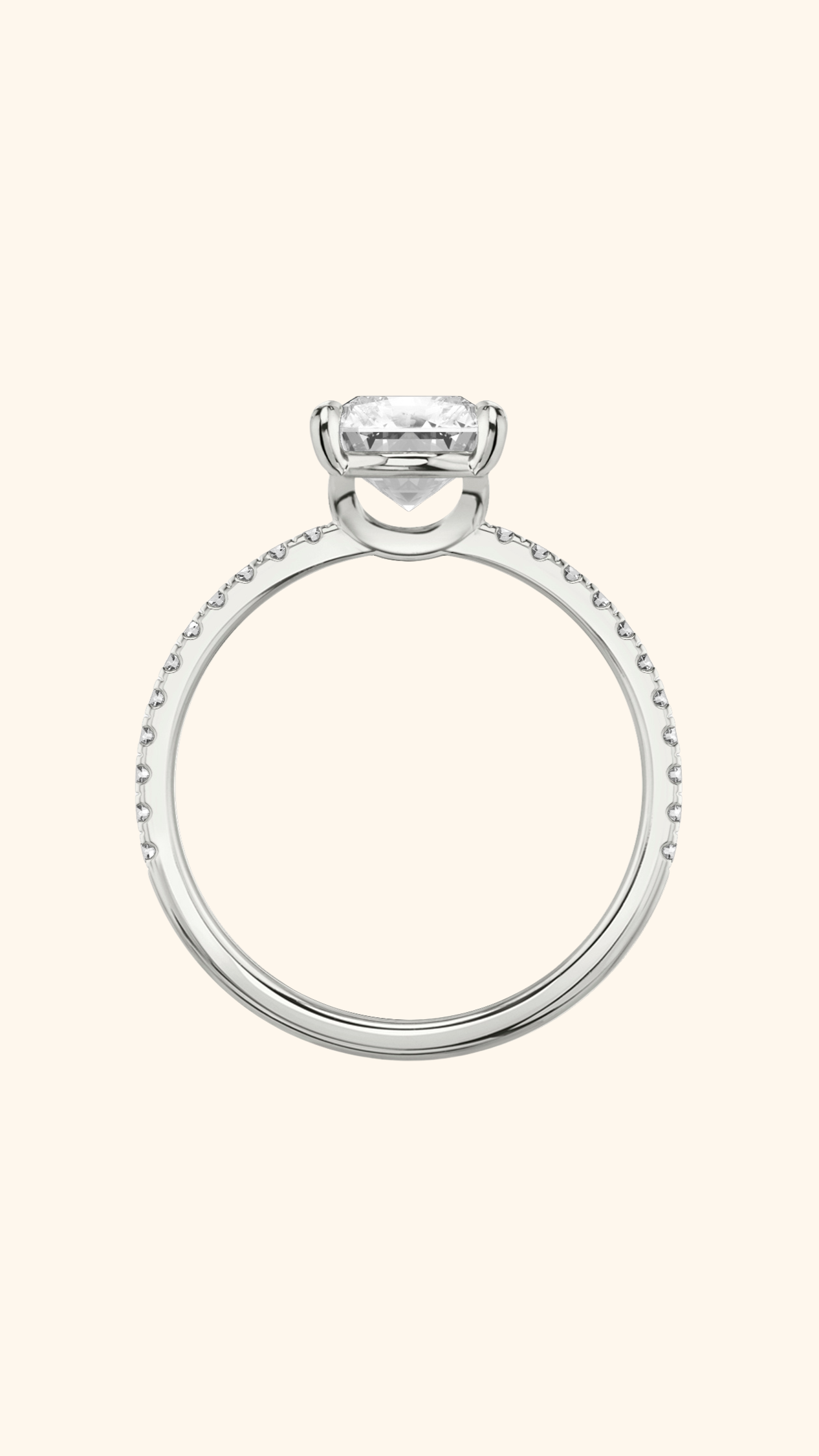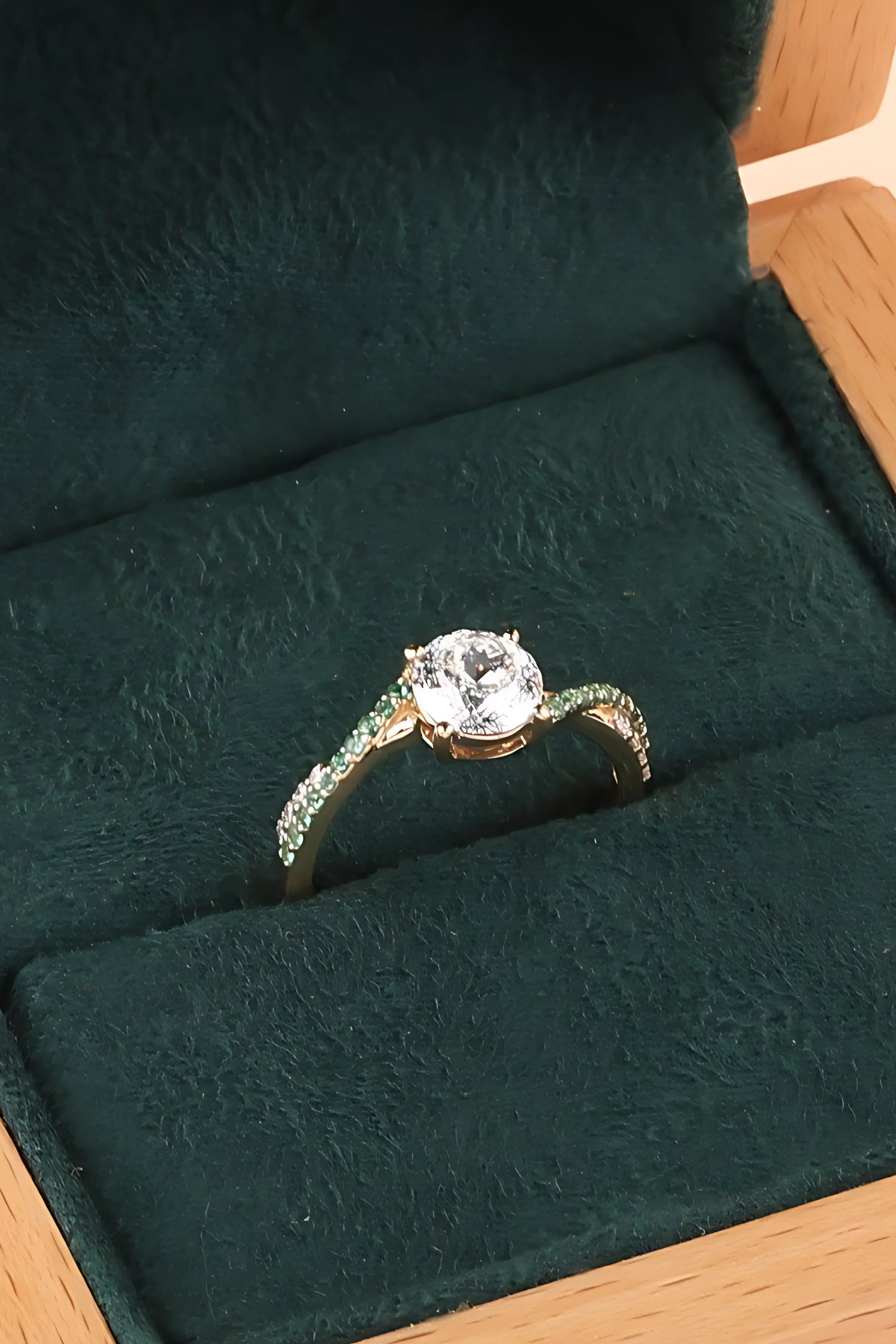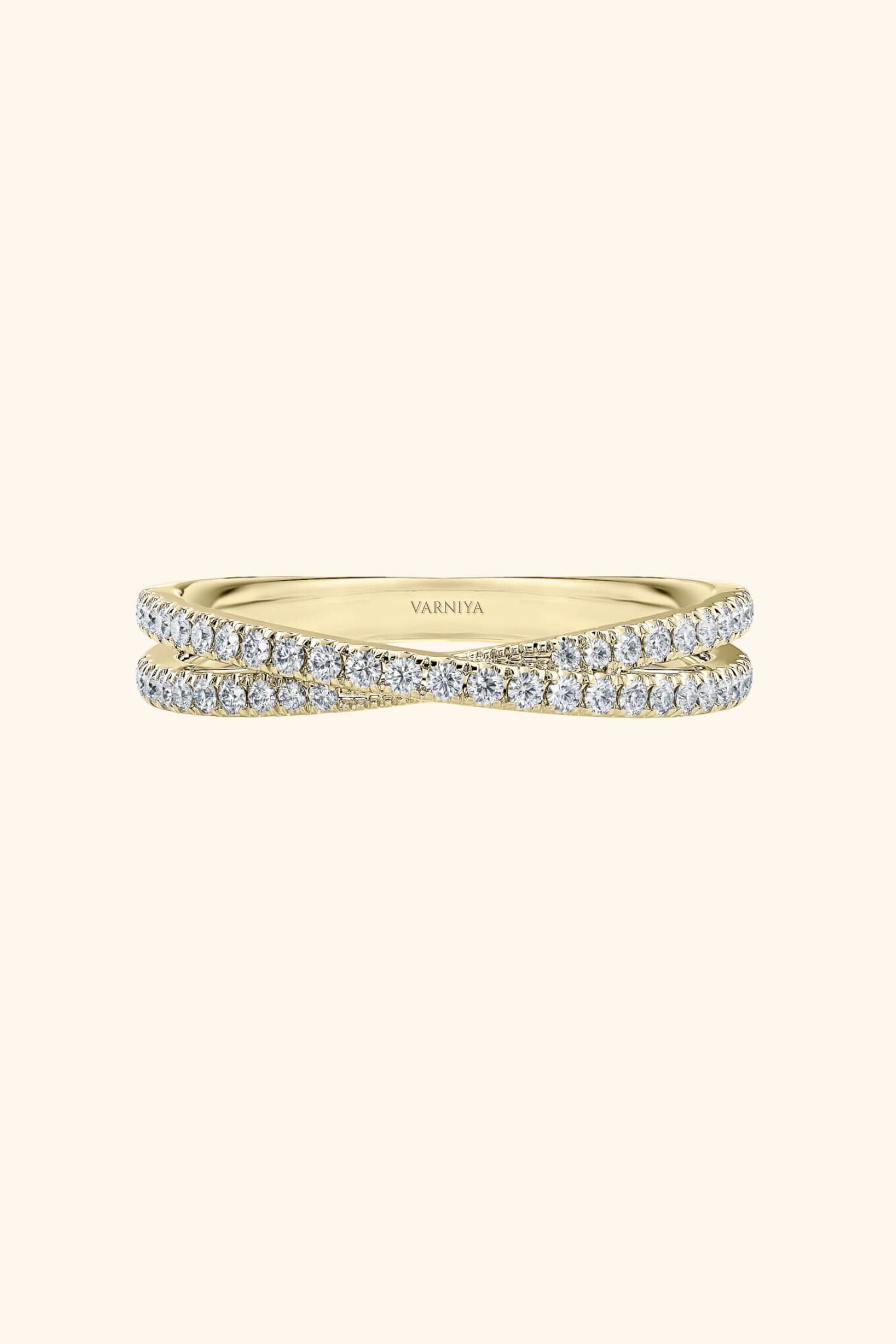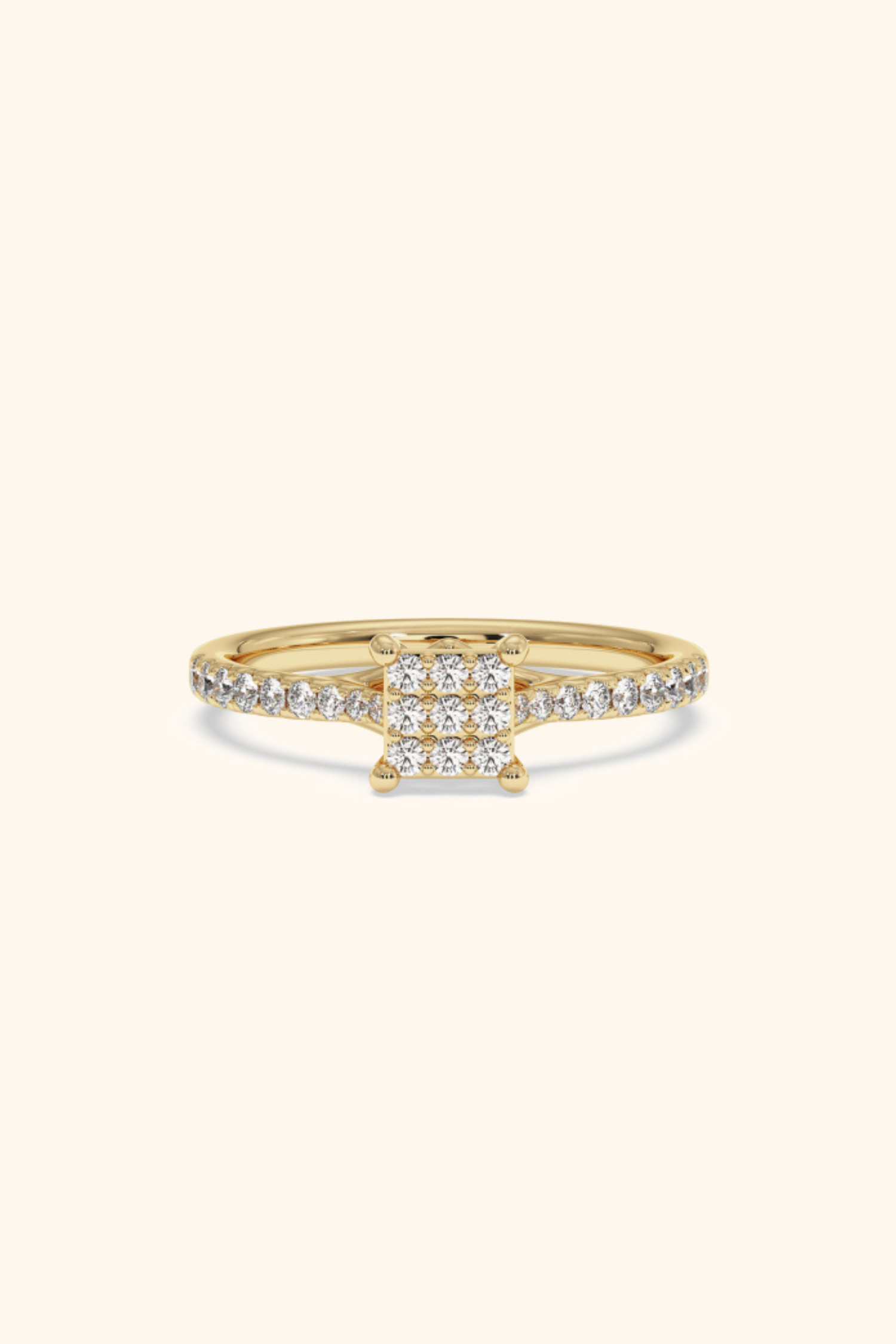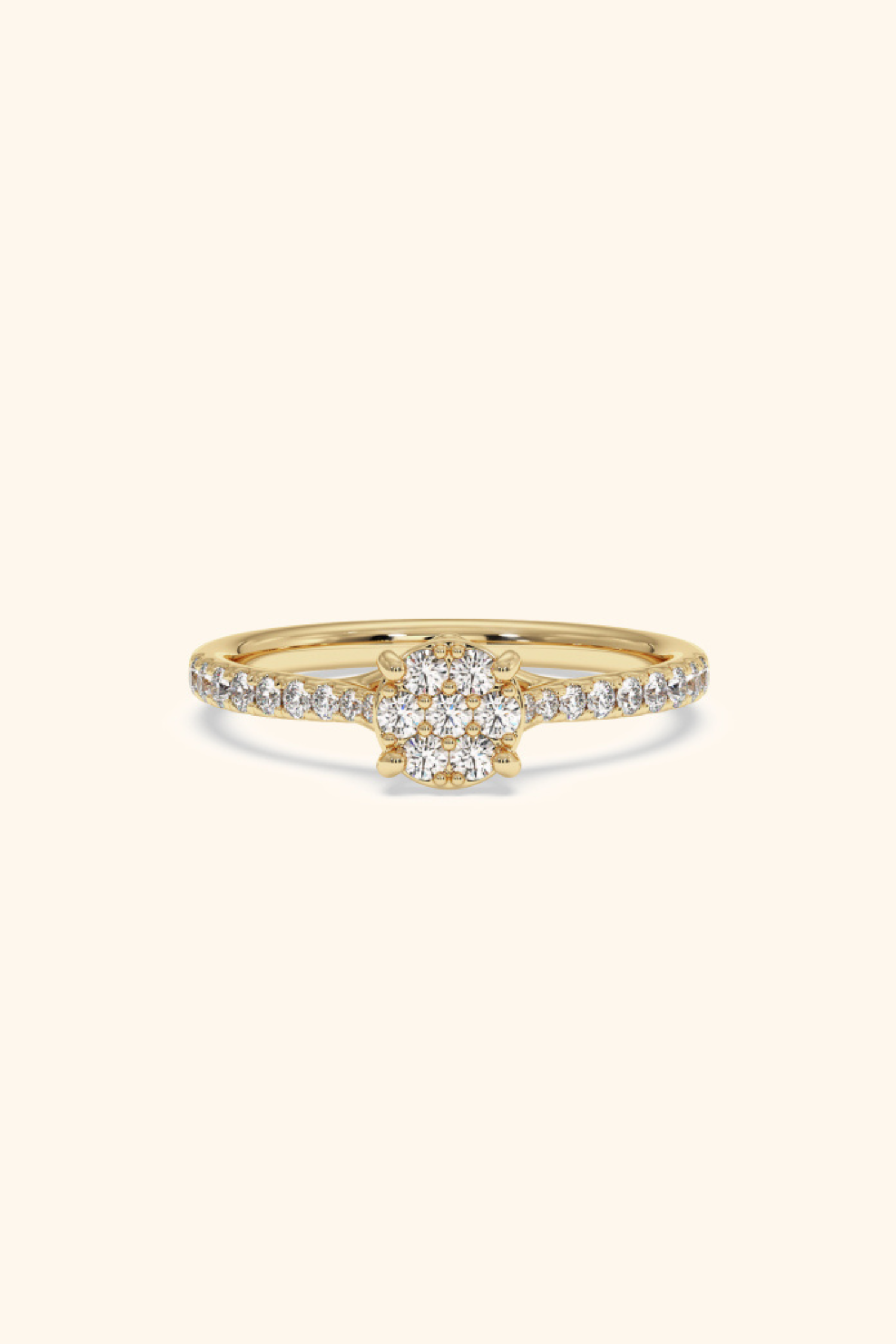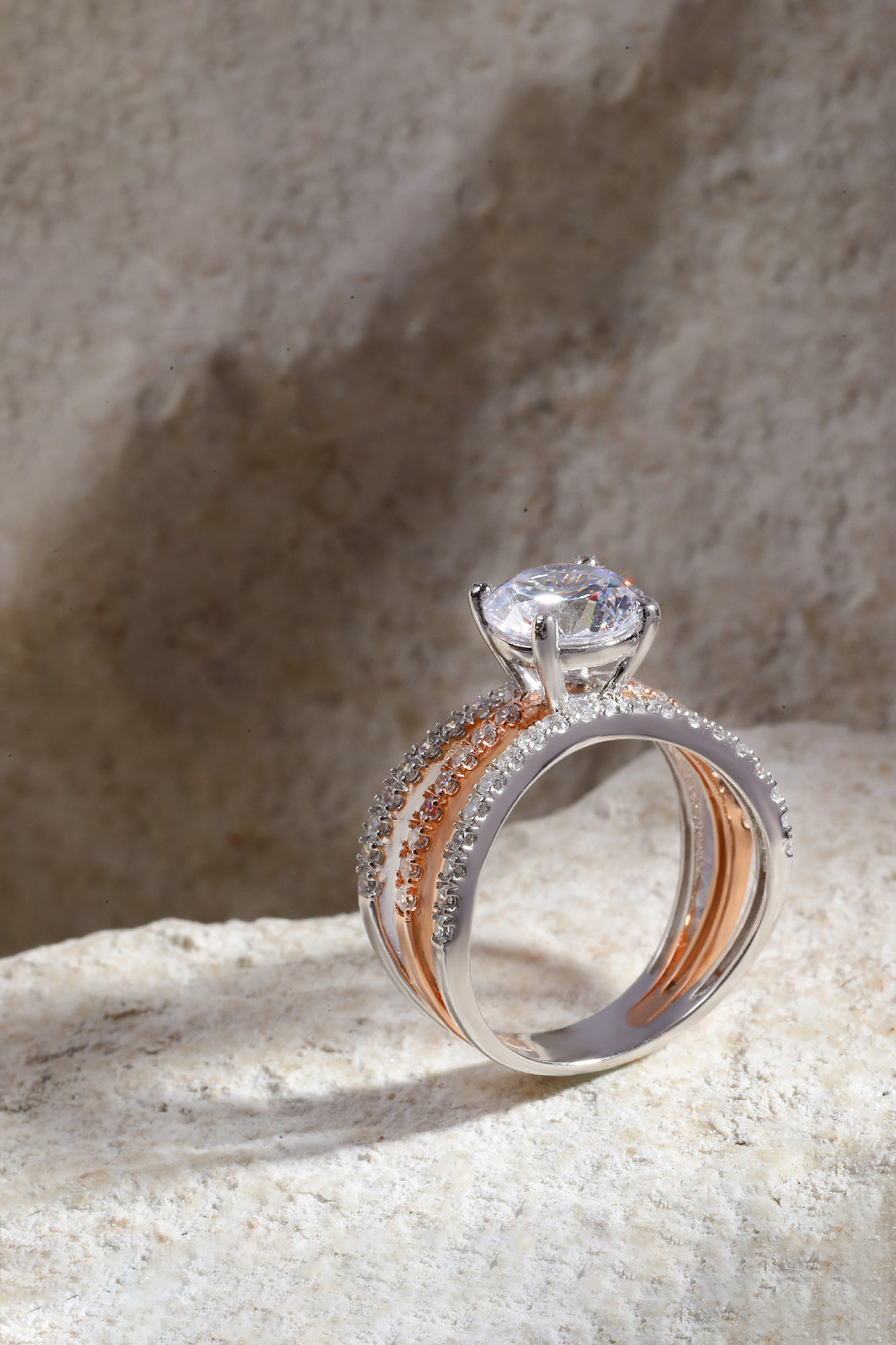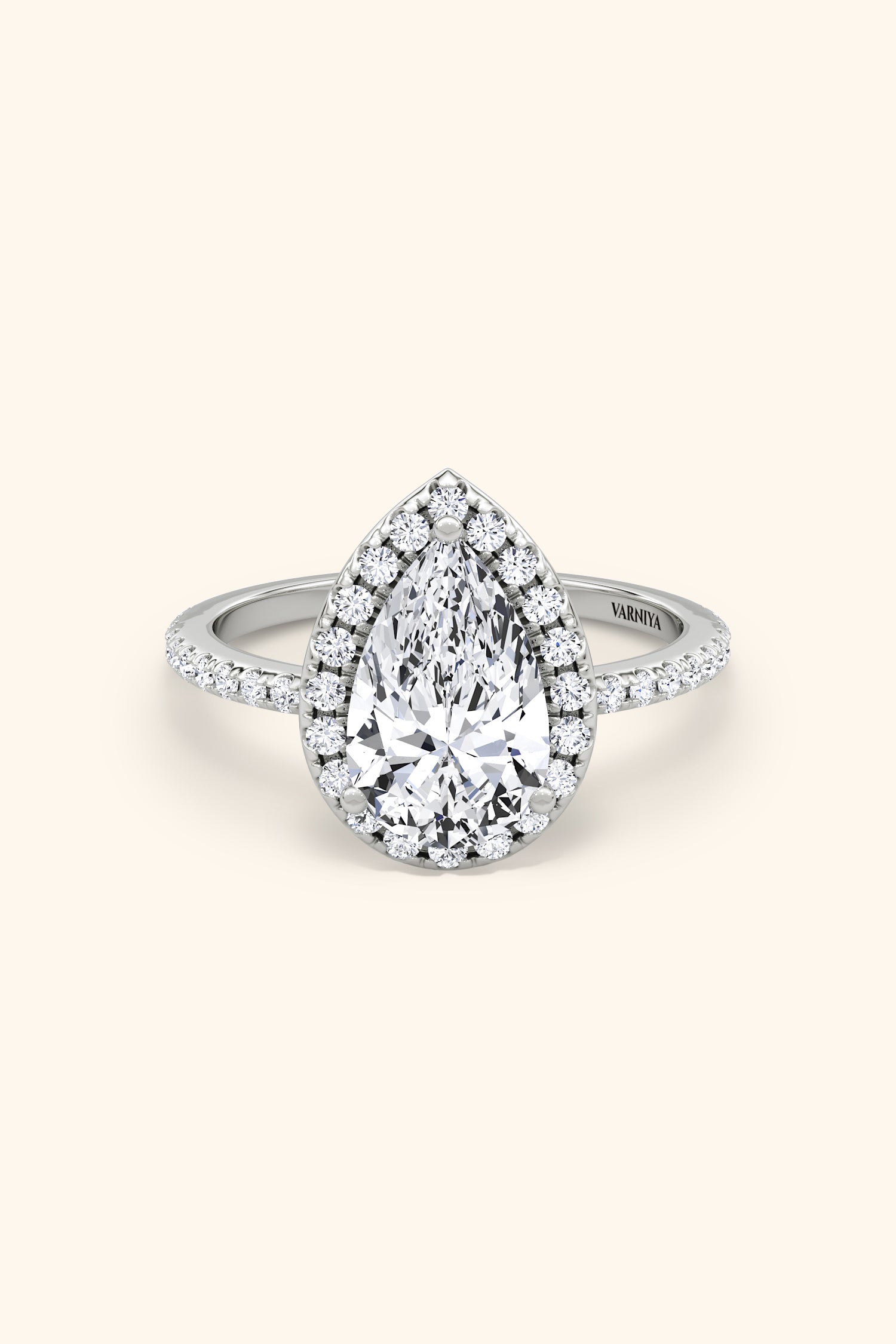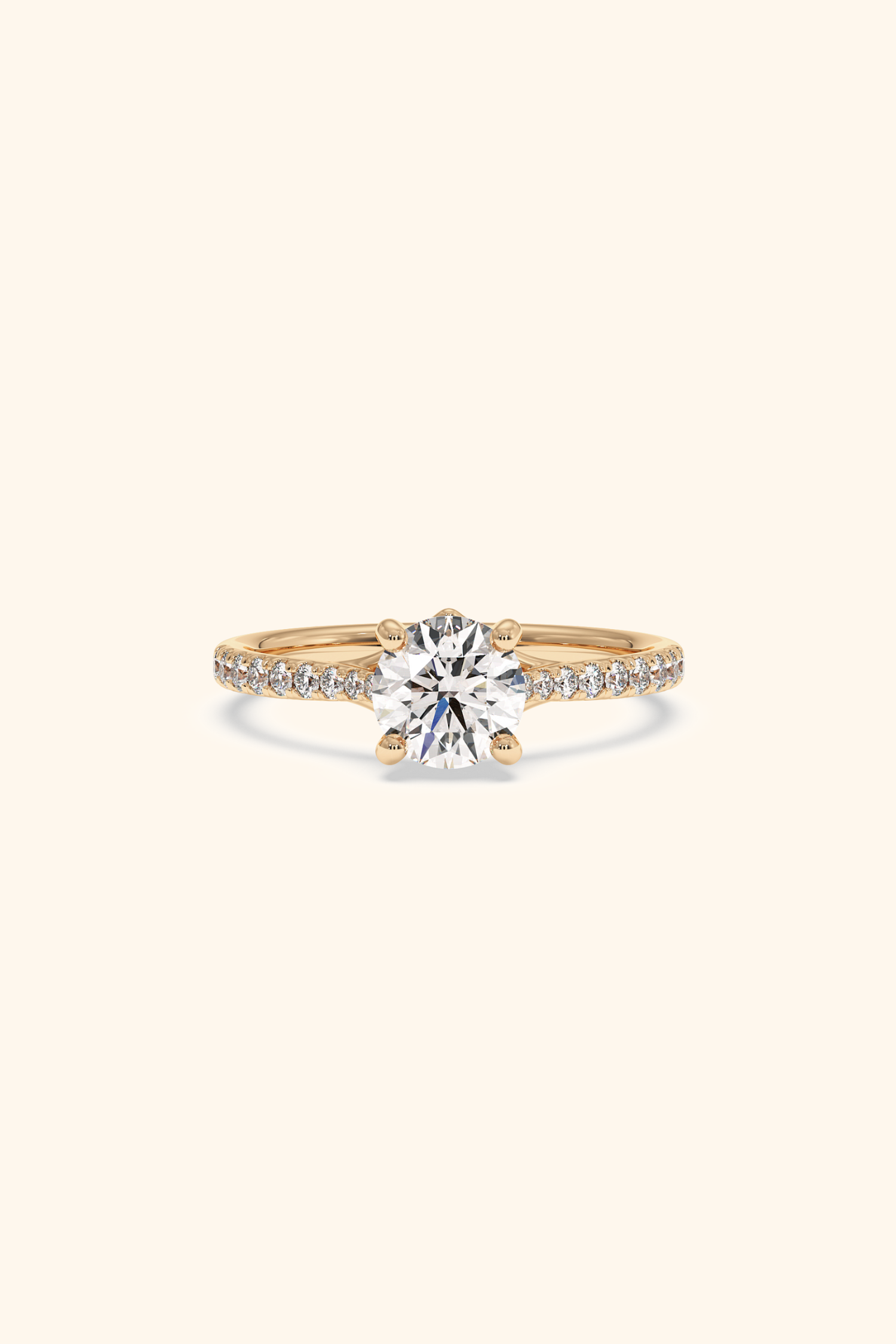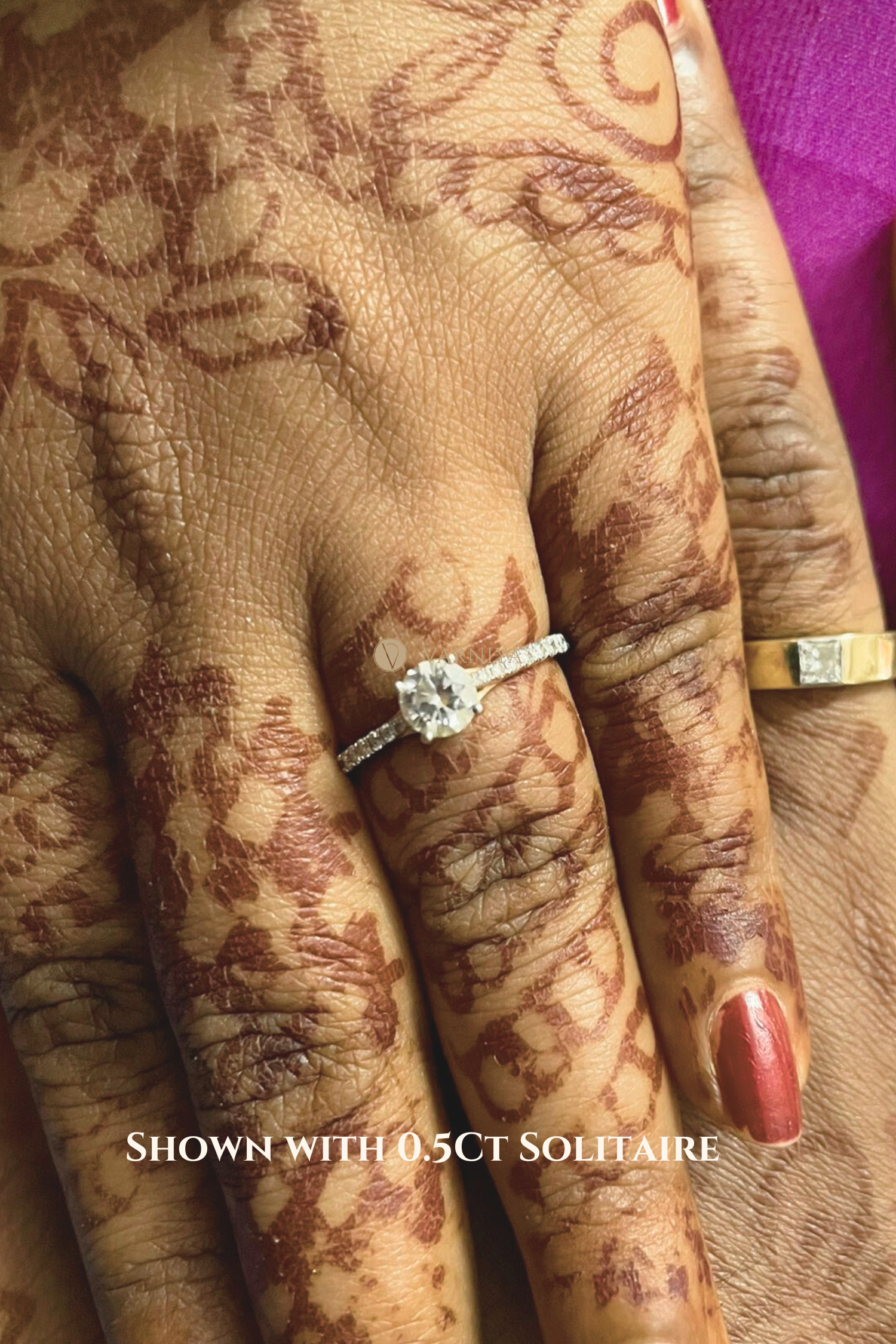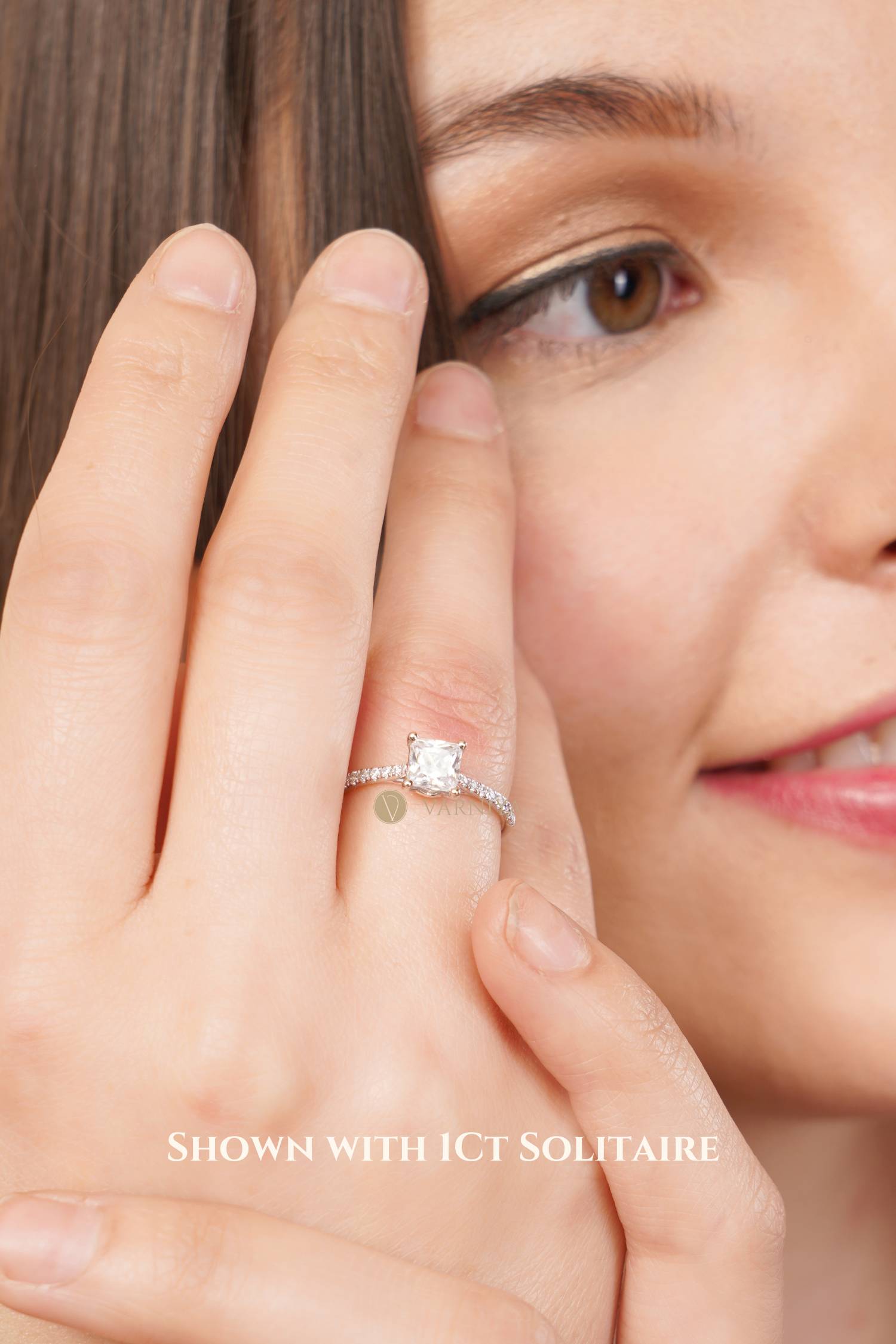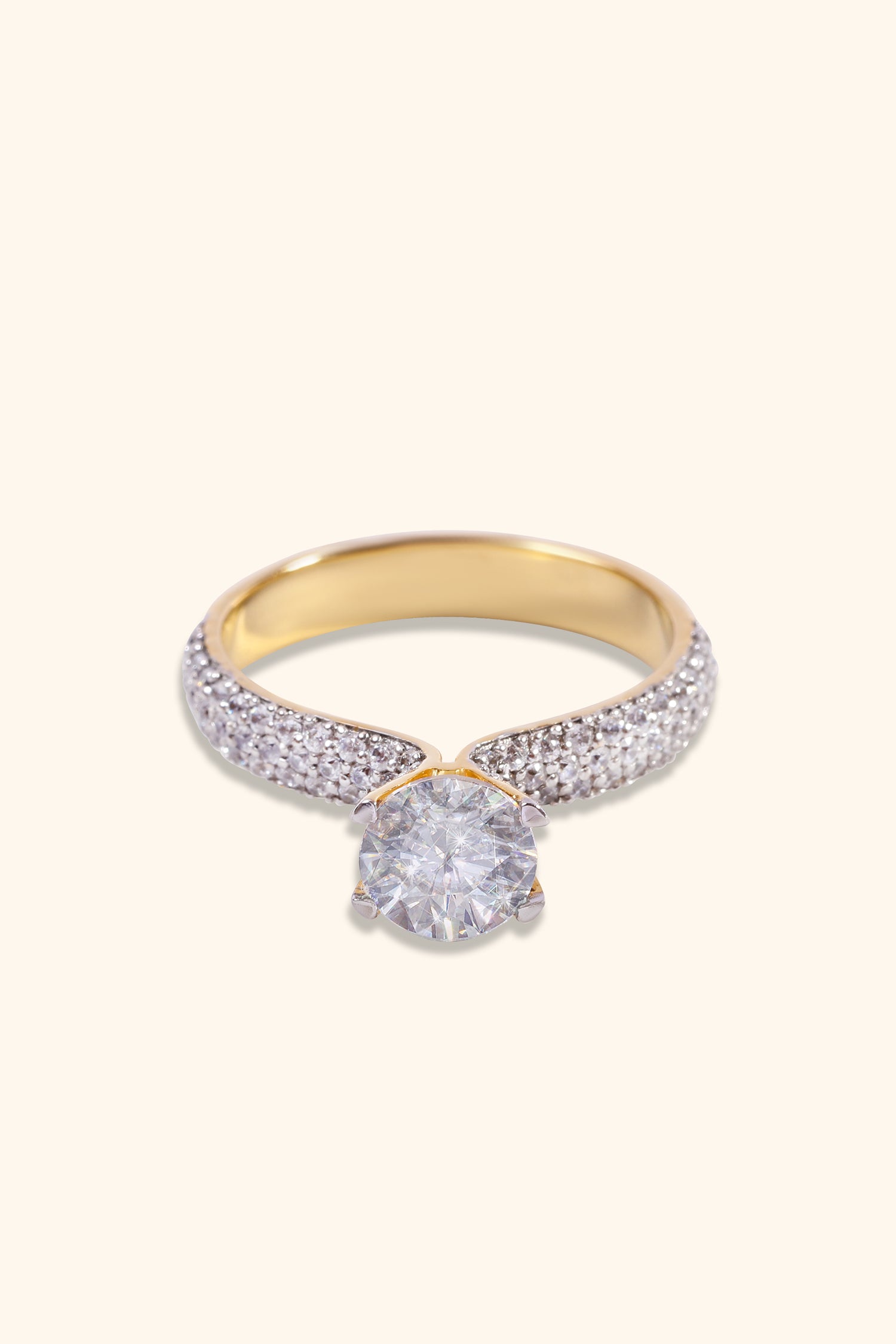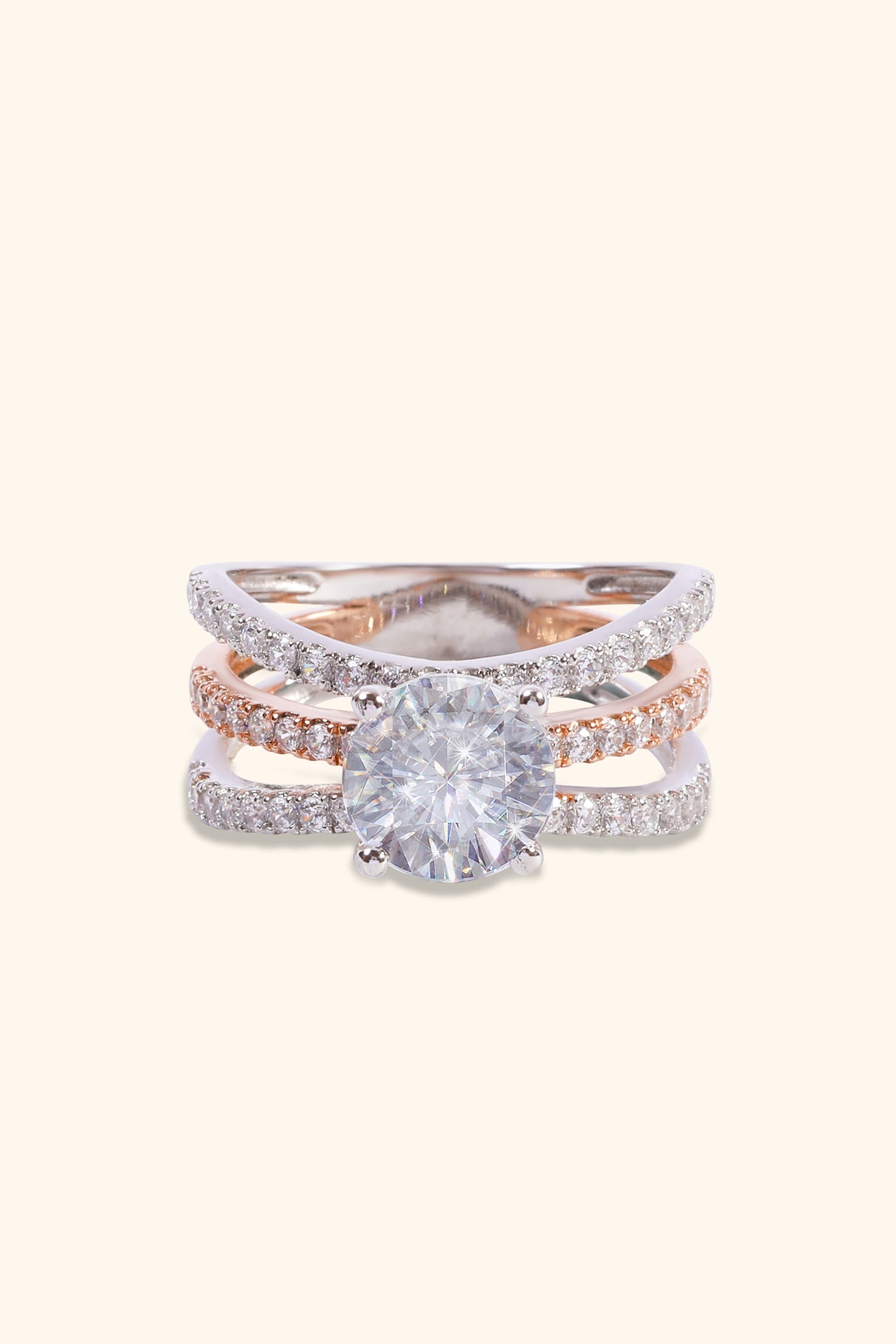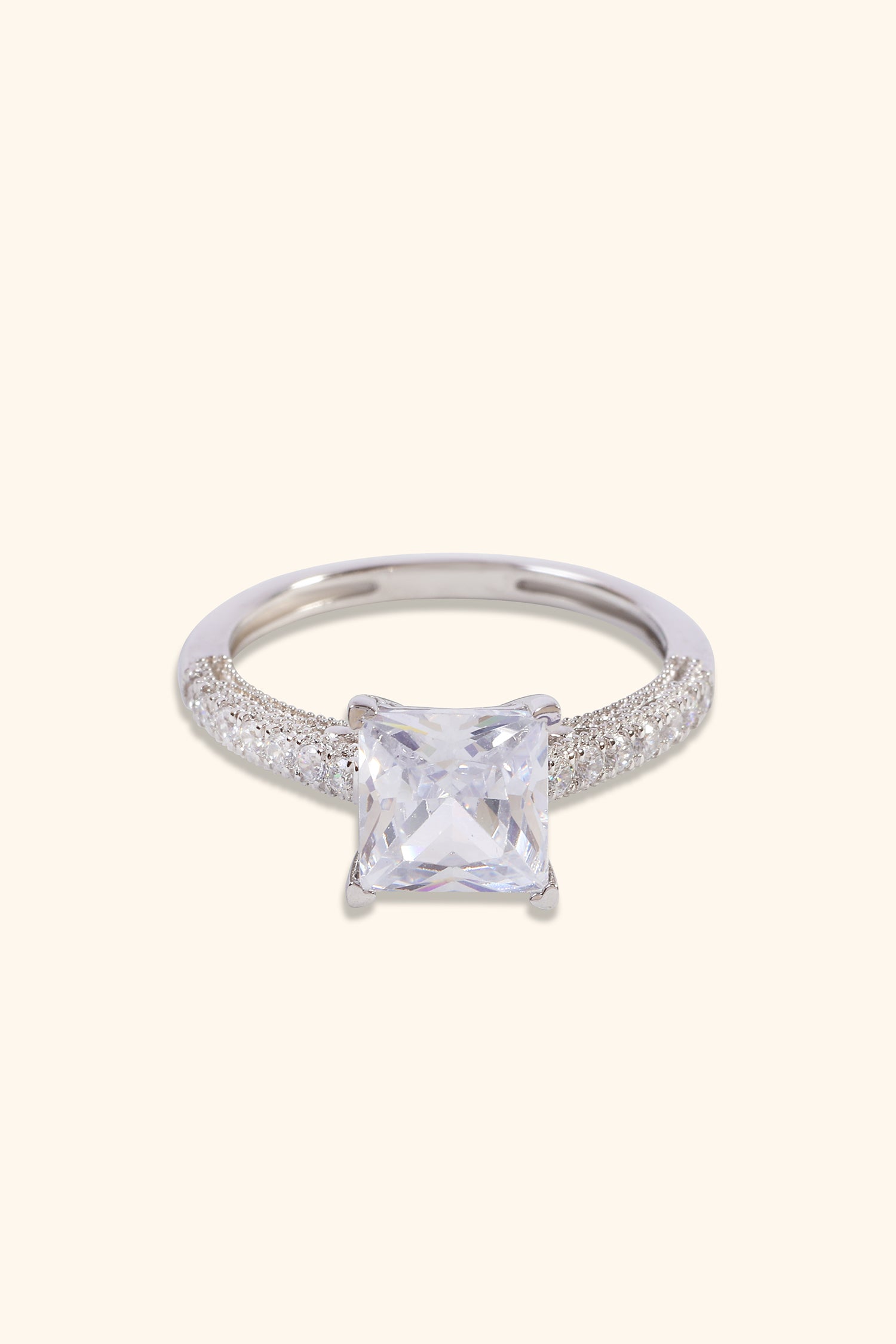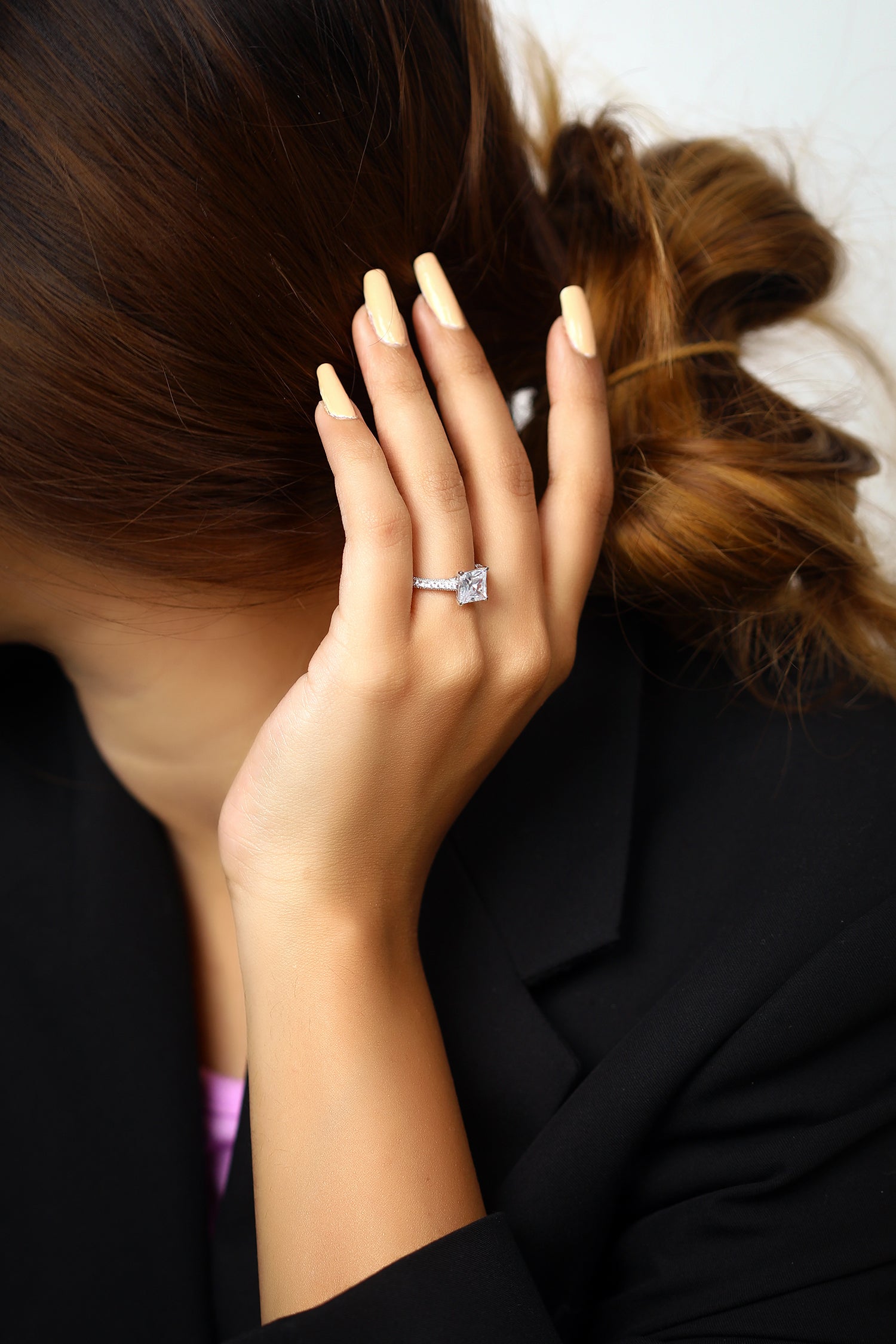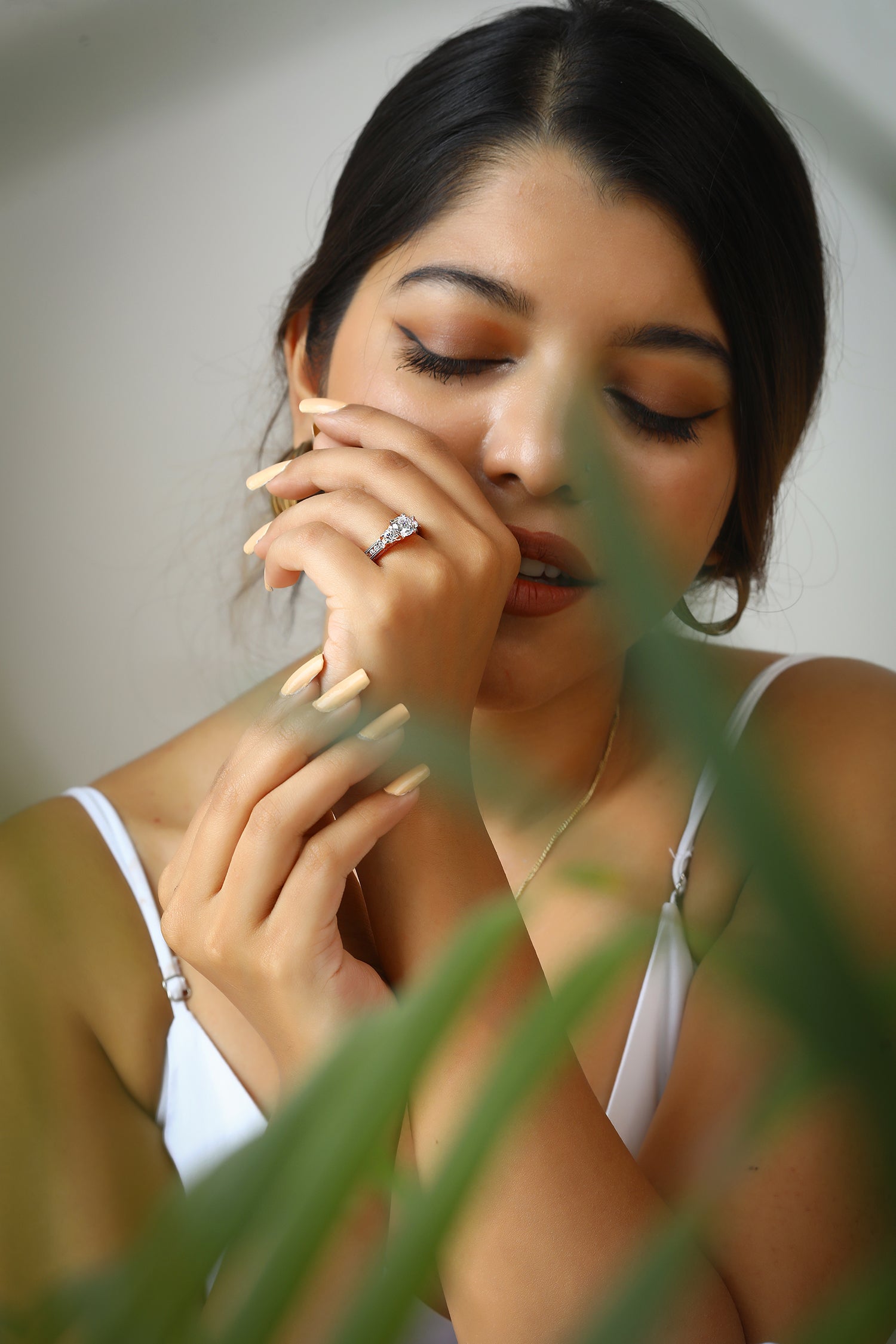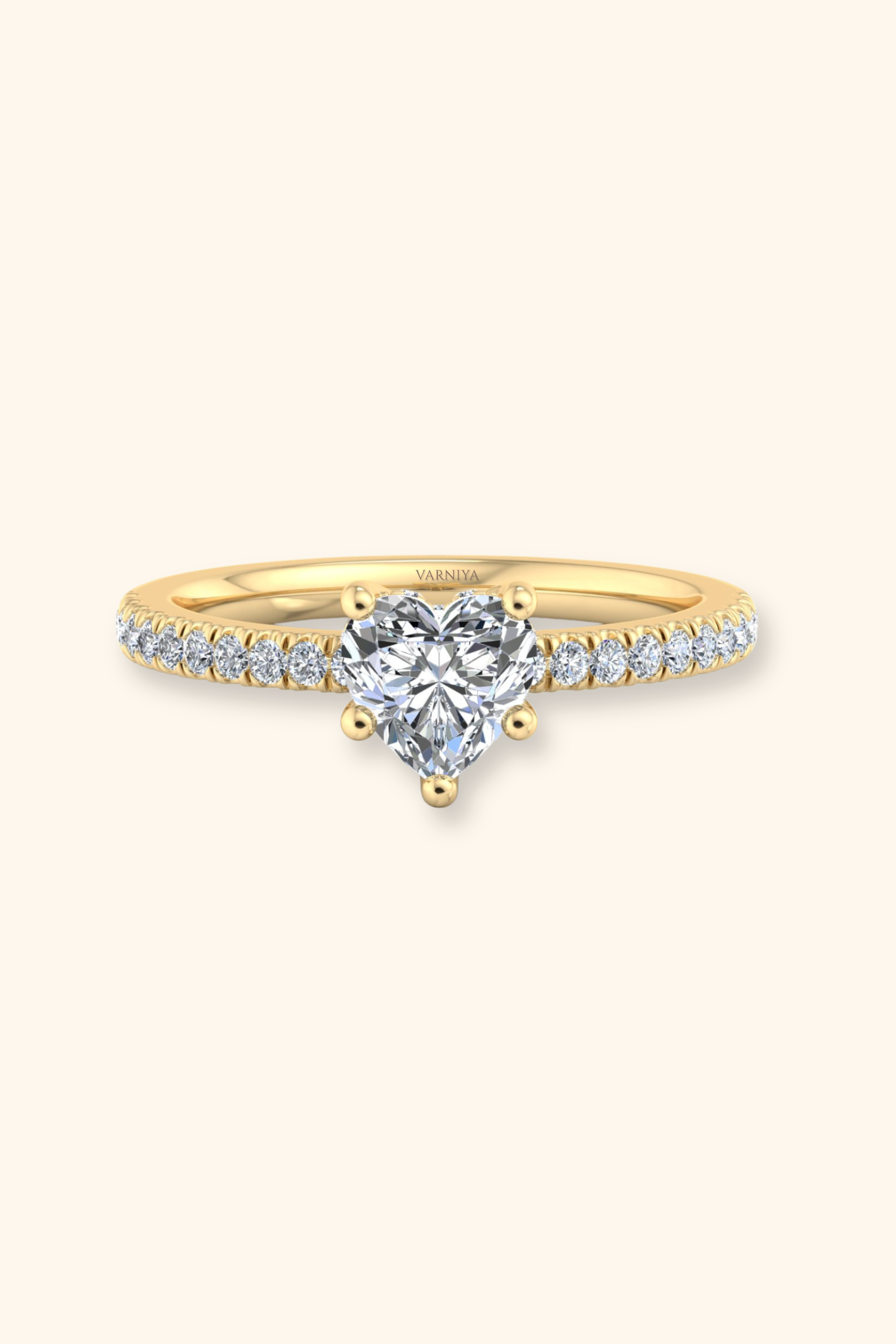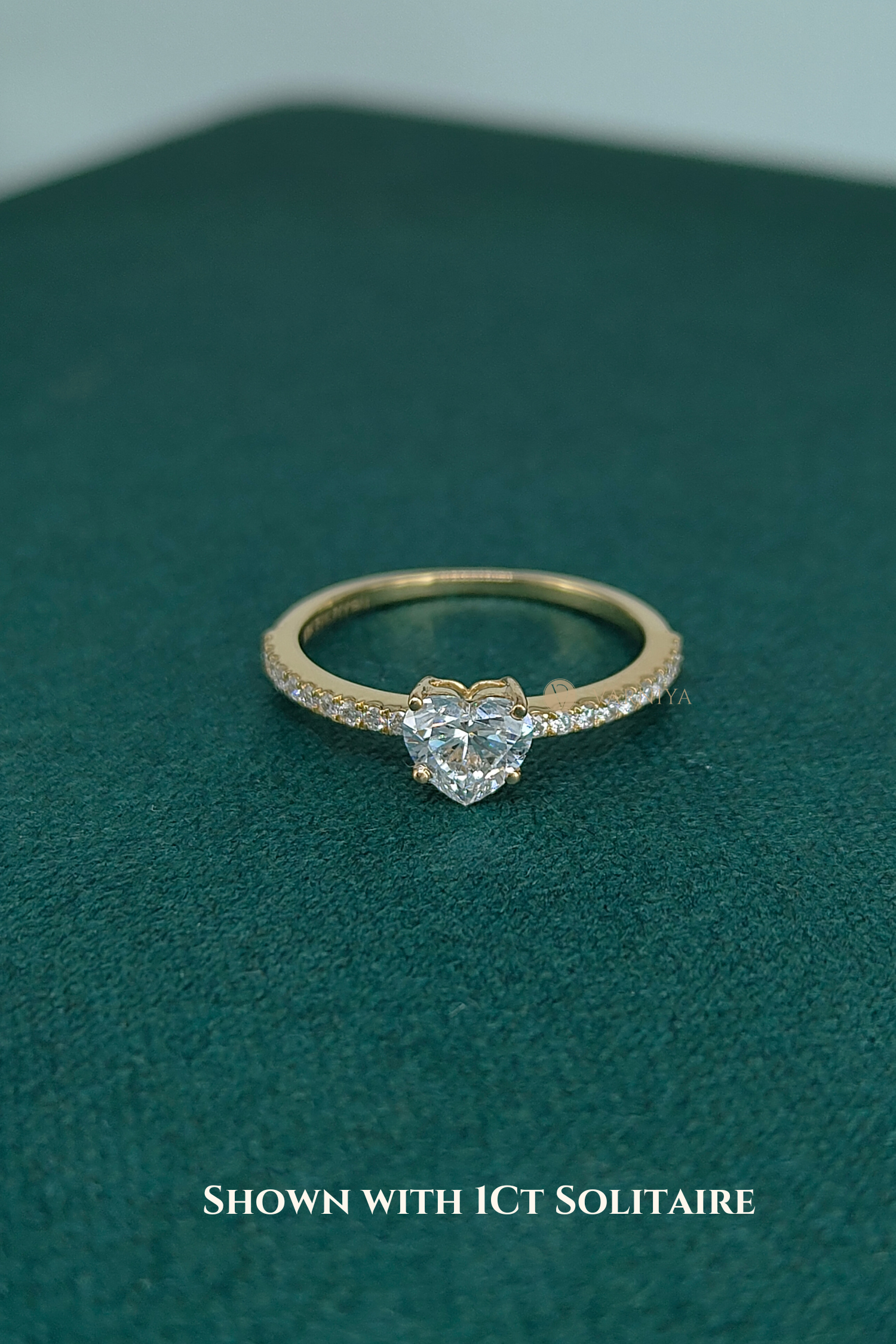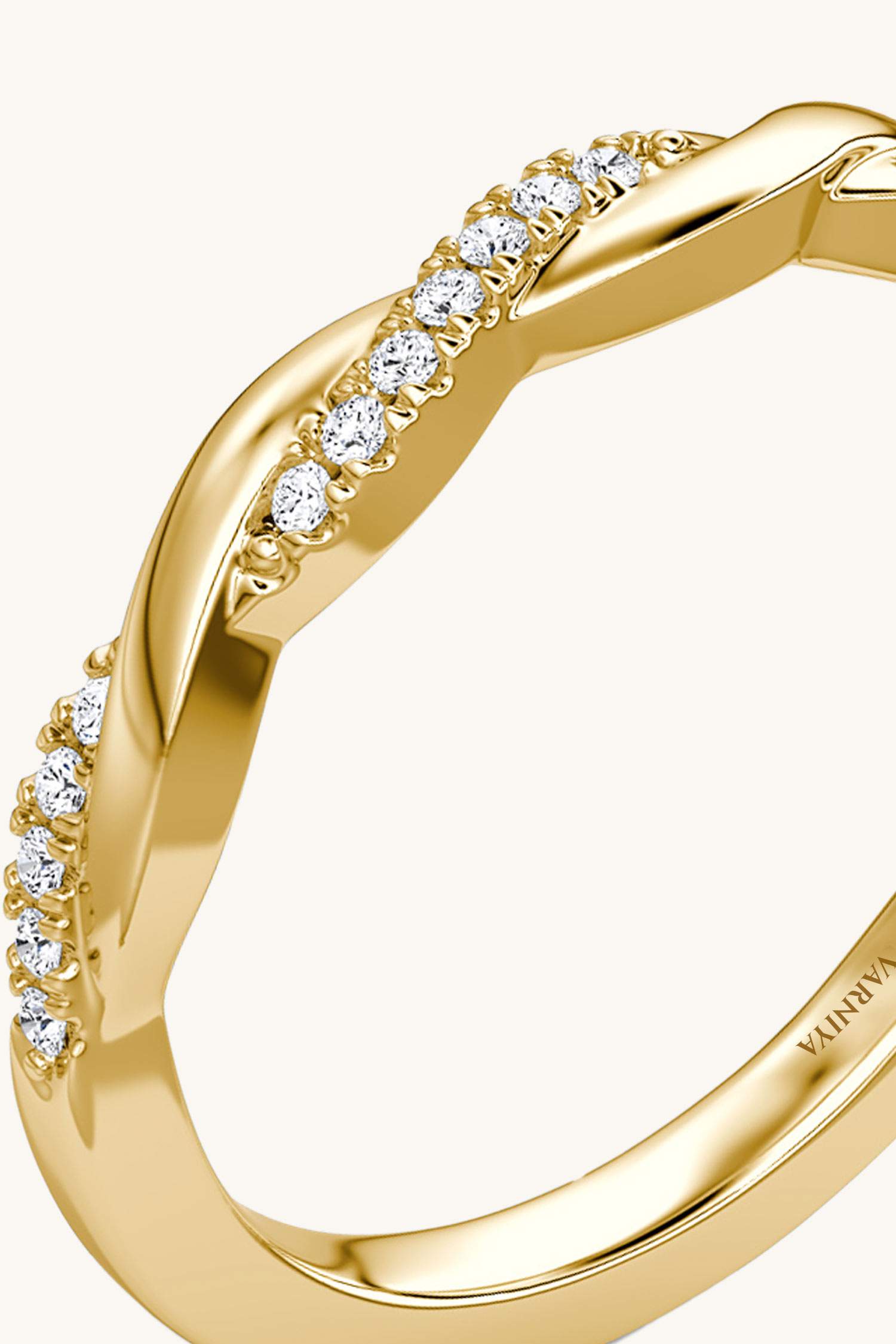Pave Diamond Rings: Styles, Price & Why They're Worth It in 2025
Shopping for pave diamond rings? Get top styles, prices, and discover why 2025 is the perfect time to buy.
Pavé diamond rings are having a serious moment in 2025. Known for their sparkle-heavy look and smart price-to-impact ratio, they’ve become a go-to for shoppers who want luxury without going overboard.
According to Statista, global demand for pavé engagement rings grew over 22% year-over-year—and India isn’t far behind.
Whether you're planning a proposal, a stackable upgrade, or just love jewelry that shines from every angle, this guide will help you choose wisely (and stylishly) when shopping online or offline .
What Are Pave Diamond Rings?
Pavé diamond rings have tiny diamonds set close together to make the band look full of sparkle. Jewelers use tiny prongs or beads to hold them in place. It’s called “pavé” (a French word) because it means “paved with diamonds.” These rings make the center diamond shine brighter with brilliance.
The sparkle comes from many tiny stones working together to reflect light in every direction. They’re a top pick for engagement rings, wedding bands, and even everyday wear—all without needing a larger stone or big budget, making them the perfect ring choice .
Pavé Rings Come in Many Different Styles: Which One Fits You?
Pavé diamond rings don’t all look the same—and that’s the best part. You can choose a style that fits your taste, budget, and daily routine.
A ring with a pavé design instantly adds elegance without overpowering your look.From bold to simple, there’s something for everyone, including styles adorned with accent diamonds.
Types of Pavé Styles: From Micro Pavé to French Pavé and Channel Set
1. Micro Pave: Small Stones, Big Sparkle
This style uses tiny diamonds set very close together. They’re held in place by tiny prongs or beads, giving the band a smooth, shiny finish. It’s a great pick if you want your ring to sparkle without using larger diamonds.
- Great for a halo design or thin band.
- Works well for people who love detailed rings.
- A common choice for pavé engagement rings with a classic or modern twist.
2. French Pave: Cut for More Light
In this style, the jeweler cuts V-shaped grooves into the metal. This allows more light to hit the diamonds, making them look extra bright. It’s perfect for those who love clean, elegant designs.
- Ideal for white gold or platinum settings.
- Adds a classy feel to the ring.
- Popular with those who want a bit more “shine” without a larger center diamond.
3. Channel Set: Sleek and Secure
Channel set rings don’t use prongs. Instead, small diamonds sit in a metal track (or “channel”), which makes them very secure. It’s perfect if you wear your ring every day and don’t want to worry about stones falling out.
- Best for active lifestyles or everyday wear.
- Pairs well with a wedding band or solitaire ring.
- Clean look, less sparkle than micro or French pavé, but more durable.
4. Classic Pavé: The All-Rounder
This is the most popular pavé style. It has tiny diamonds placed closely across the band. They’re held with small prongs or beads. You get a lot of sparkle without a bulky look.
- Works with most diamond shapes and metals like gold or white gold
- Great for both engagement rings and wedding bands
- A good fit for those who want a timeless, balanced look
- Enhance your bridal look further by choosing the perfect diamond necklace to complement your attire
5. Halo pavé style
In this design, a ring of small diamonds surrounds the center diamond. This makes the center look bigger and brighter—without paying for a larger stone.
- Adds extra sparkle without increasing the carat weight
- Perfect for people who want a bold, dramatic style
- Looks great with a round brilliant diamond, oval, or cushion cut
6. Double pavé band
This style has two rows of pavé diamonds along the band instead of one. It doubles the shine—and makes the ring stand out.
- Ideal for statement lovers or modern brides
- Pairs well with a halo or pavé setting
- Choose rose gold for warmth or white gold for a sleek finish
Tip: Online shopping makes it easy to compare pavé ring styles and prices before buying. Many online jewelers now offer complimentary delivery on pavé diamond rings.
"Love unique shapes? Explore the East West Radiant Pavé Ring by Varniya featuring a horizontal center stone in yellow, rose, or white gold. Customize yours!”"
Which Diamond Shapes and Carat Weights Look Best in Pavé Rings?
1. Round Brilliant: The Ultimate Match for Pavé Settings
The round brilliant diamond is the most popular shape—and for good reason. It has 58 facets that reflect a ton of light.
- Works best with pavé settings because it adds even more sparkle
- Pairs well with white gold, rose gold, or yellow gold
- Looks great on any hand shape
- Ideal if you want a ring that sparkles in every light
2. Oval and Pear Shapes: Bigger Look, Less Carat
Oval and pear-shaped diamonds give the illusion of a bigger size, even with a lower carat weight. They stretch across the finger, making your hand look longer too.
- Budget-friendly while still looking grand
- Works well with halo or double pavé bands
- A smart pick if you want to save without losing wow-factor
"Love the pear-cut look? Try the Classic Grace Pear Solitaire Pavé Ring—Customize Your Solitaire Pavé Ring with a metal and diamond combo just for you. Shop from Varniya”
3. Emerald and Cushion Cuts: For a Vintage Feel
These shapes offer a bold, vintage style. Emerald cuts have step-like facets. Cushion cuts have soft edges that combine round and square looks.
- Best paired with a clean pavé band or french pave
- May show inclusions more easily, so go for higher clarity
- Pair with larger diamonds if you want a striking look
- Looks elegant, not overly flashy
4. Ideal Carat Weights for Pavé Rings
You don’t need a big diamond to make your pavé diamond ring look stunning. That’s the beauty of a pavé setting—it adds sparkle all around the center diamond, making it appear larger, similar to a micro pave design .
- 0.7 to 1.2 carat weight is the sweet spot—visually impressive without the big price
- A 0.9 carat stone with a halo or micro pavé setting can look just like a full 1 carat
- Smaller diamonds in the band help reflect light onto the center, boosting shine
- If you're on a budget, go slightly under a full carat—it’s smart and still sparkles
Gold, White Gold, or Rose Gold: Best Metals for Pavé Rings
Choosing the right metal changes how your pavé diamond rings look and last. Each metal gives a different feel—and some are better for certain styles or skin tones.
- Yellow Gold is classic. It gives warmth and works well with vintage or halo styles. It hides wear and tear too.
- White Gold is sleek. It matches with pavé diamonds and makes them look even brighter. But it may need re-coating after a few years.
- Rose Gold is trendy. It adds a soft, romantic touch and works well for engagement rings with small diamonds or micro pavé accents.
When picking metal for your pavé ring, think about:
- Skin tone – warmer tones go well with rose and yellow gold; cooler tones match white gold.
- Durability – all three are strong, but white gold needs more care.
- Style – rose gold feels modern, white gold feels timeless, yellow gold feels bold.
You can also mix your metals and create a custom piece just for yourself.
Tip: If your ring is full of tiny diamonds, prongs, and a pavé setting, go for white gold—it enhances shine.
Are Pavé Diamond Rings Durable or Do Diamonds Fall Out Easily?
Pavé diamond rings are beautiful, but many people ask: do the diamonds fall out easily? Here's what you should know.
Tiny diamonds in a pavé ring are held by small prongs or beads. People worry pavé diamonds fall out easily, but strong prongs and good craftsmanship can prevent this. But low-quality pavé settings or rough handling can cause stones to loosen.
To avoid issues:
- Choose a trusted jeweler who uses strong prongs and checks every pavé setting.
- A quality pave setting ensures your diamonds stay in place, even with regular wear.
- Don’t wear your ring while doing heavy work.
- Get your ring checked once a year.
Choosing a Pavé Diamond Engagement Ring: What to Know Before You Buy
- The Setting Affects Both Look and Durability: Not all pavé ring settings are the same. Some use tiny prongs or beads to hold the tiny diamonds in place. If the setting isn’t done well, stones may loosen over time. Go for a secure pavé setting that keeps the diamonds firmly in place—especially for daily use.
- Micro Pavé vs. Classic Pavé—Know the Difference: Micro pavé has small diamonds set very close together using a microscope. It looks modern and sparkly. Classic pavé uses slightly larger diamonds with more space between them. Both work well, but micro pavé settings need more care. Pick what suits your lifestyle best.
- The Center Diamond Still Matters: Even with lots of sparkle from the pave diamonds, the center diamond is still the star. Make sure it’s a cut and carat weight you love. Ask about the diamond shape, too—round brilliant diamonds are most popular, but oval and solitaire ring styles are also timeless.
- Metal Color Changes the Entire Vibe: White gold makes the diamonds look bigger. Rose gold adds warmth. Yellow gold gives a bold, classic look. Your choice of metal will affect how the pave diamond rings look overall—try them all before you decide.
- Ask About Diamond Quality and Grading: Don’t just look at the sparkle. Ask the jeweler about grading. Some diamonds are slightly included—that means tiny flaws inside. It may not show, but you deserve to know what you're buying.
- Fit and Ring Size Matter—A Lot: If the ring size isn’t right, the ring may twist or feel loose. And resizing a pavé ring can be tricky since the stones go around the band. Always check the fit before buying or ask if resizing is safe.
Best Pave Diamond for Engagements Rings, Weddings & Everyday Wear
1. For Engagement Rings: Go for a Pavé Band with a Stunning Center Stone
- A pavé diamond ring works great for proposals. Choose a center diamond that grabs attention—like a round brilliant diamond or an oval. The tiny diamonds on the pavé band make the center stone look even bigger.
- Most people prefer a pavé engagement ring in white gold or rose gold because it sparkles more. Go for a carat weight that fits your budget and finger size.
- Pro tip: Ask about the pavé ring setting to make sure those tiny diamonds stay securely in place.
2. For Wedding Bands: Classic Pavé or Channel Set Looks Best
- For a wedding band, you want something that lasts. A classic pavé setting is timeless. A channel set band is also a smart pick—it holds small diamonds between metal walls, making it more durable.
- Match the metal to your engagement ring for a clean look. Gold, especially white gold, is still the most popular.
3. For Everyday Wear: Choose Low-Profile and Durable Pavé Styles
- Daily wear? Pick a pavé ring with a low height and smooth edges. Avoid big prongs or a raised center stone—they snag.
- A micro pavé setting with tiny prongs holds smaller stones better for daily use. It still gives that sparkle without being too flashy. Make sure your ring size fits snugly to avoid spinning.
- Some modern pavé rings even feature spinner white decorative bands for a playful twist.
4. Bonus: Stackable Pavé Rings for Mix-and-Match Style
- Want variety? Try stackable rings with pavé diamonds. You can even pair your pavé ring with other diamonds like solitaires or eternity bands for extra glam.
- You can mix different styles, metals, or even throw in accent diamonds or colored gemstones. They are a excellent choice for waering and gifting.
Pave diamond rings are a smart choice for all styles—whether it’s for engagement rings, wedding bands, or everyday wear. Look for secure pavé settings that keep tiny diamonds in place and avoid styles where diamonds fall out easily. Always check the center stone, diamond shape, and ring size before buying. Choose quality. Choose lasting sparkle.


